Passions and Places
A travel + outdoors blog

12 Inspiring Travel Memoirs to Fuel Your Wanderlust
December 14, 2019 By Jen Ambrose 27 Comments
Updated February 12, 2024

For me, one of the small silver linings of the early days of the pandemic is that I finally got into the habit of reading. I’ve always loved books and reading, but it wasn’t until 2020 that it became part of my daily routine.
Now, I read almost every night before bed, and listen to audiobooks while cooking or cleaning, walking, driving, and riding on buses, planes, or trains. I’m usually in the middle of at least four books and one or two audiobooks at any given time. (Add me on Goodreads if you’re on there!)
Some links in this post are affiliates, meaning we may earn a small commission if you place an order. Your cost is the same!
In a surprise to absolutely nobody, travel memoirs are one of my favorite genres – especially female travel memoirs, I think because their perspectives tend to resonate more. Likewise, there are some great fiction travel books out there, but I find it a lot easier to relate to non-fiction. Reading about things that actually happened and hearing a real person’s reflections just leaves a bigger impact on me, at least when it comes to travel stories.
For me, books about traveling are both a huge source of inspiration and a means of reflecting on my own experiences. I love reading about the types of travel experiences I’ve had myself and places where I’ve spent time. But I also love hearing about experiences I’ll probably never have (like sailing around the world, biking across the country, and working as a flight attendant).

My “To Read” list in this genre is literally never-ending, and I still haven’t read some of the obvious picks – like Bill Bryson’s In a Sunburned Country (which I do plan to read) and J. Maarten Troost’s The Sex Lives of Cannibals (which I don’t ). And one day I’ll re-read Elizabeth Gilbert’s Eat, Pray, Love to see how differently it lands now, compared to when I read it as a 20-year-old on study abroad in 2007.
But I wanted to share some of the best travel memoirs I’ve read so far. (Update: And I’m always adding to this list!) Whether you’re looking for serious travel inspiration, a fun vacation read, or gifts for travelers who love to read, one of these will surely be the perfect pick.
- 1. Love with a Chance of Drowning – Torre DeRoche
2. Kinky Gazpacho – Lori L. Tharps
- 3. The Yellow Envelope – Kim Dinan
4. Wild – Cheryl Strayed
- 5. Free Country – George Mahood
- 6. Cruising Attitude – Heather Poole
- 7. A Thousand New Beginnings – Kristin Addis
- 8. How Not to Travel the World – Lauren Juliff
- 9. Turn Right at Machu Picchu – Mark Adams
- 10. It’s Only the Himalayas – Sue Bedford
- 11. Adventures of a Continental Drifter – Elliott Hester
- 12. All Over the Map – Laura Fraser
More Memoirs About Traveling
The best travel memoirs, 1. love with a chance of drowning – torre deroche.

This is one of those travel books about an experience I don’t plan to ever have. While living in California, Torre falls in love with an Argentinian man whose dream is to sail around the world in his little boat named Gracie .
She’s prone to seasickness and terrified of deep water, but agrees to go on the journey anyway. They spend weeks at a time on the water with no land in sight, subsist on a diet mostly devoid of fresh fruits and vegetables, and brave storms that nearly capsize the sailboat.
While their time on the water is sometimes challenging, Torre and Ivan reap serious rewards, too. They make their way through the South Pacific, visiting idyllic islands that are pretty much only reachable by sailboat and far removed from globalization and mainstream tourism.
I also really enjoyed Torre’s follow-up, The Worrier’s Guide to the End of the World , which is a memoir about travel of a totally different kind. Instead of sailing, it’s mostly about walking pilgrimages – and instead of romance, there’s grief, heartbreak, and female friendship. I would recommend them both, but start with Love with a Chance of Drowning .
Recommended for anyone who dreams of sailing the world or just visiting a remote tropical paradise – and it’s the perfect choice if you’re searching for gifts for outdoorsy women !

There are travel memoirs that relay the story of a trip, and then there are those that weave history, culture, and personal identity with adventure. This book is definitely the latter.
Lori’s story starts with her childhood in Wisconsin, where she’s (no surprise) the only Black student at her school. She’s enamored with Spain from her first Spanish class, but her relationship to the country gets more complicated when she studies abroad there.
The book is a candid account of Lori’s experiences as an African-American in Spain, first as a student, then as part of a blended family over the years, and even as an investigative journalist uncovering the country’s hidden history of slavery. Reading this made me incredibly nostalgic for my year abroad in college, and it helped me think about travel from a perspective that’s totally different from my own.
Recommended for anyone who’s interested in Spain or the Black travel experience – and this would be a great book club pick!
3. The Yellow Envelope – Kim Dinan

When I read this book, I related to it so much. Then I noticed a stark polarization in the reviews: people either related deeply to it like I did, or they absolutely loathed both the story and the author. Interesting.
Like many of the other writers on this list, Kim wanted something different than the career, house, wealth, and other material things we’re told we’re supposed to work for. So, she and her husband left their jobs and their home to explore around the world. (Um, you’re probably starting to see why I related to it so much!)
They travel from Ecuador to India and many countries in between, sometimes staying in places they love for weeks at a time. The book chronicles their adventures and missteps, the people they meet, and Kim’s reflections on everything from travel to body image to her sometimes-difficult relationship with her husband.
Recommended for anyone who’s thinking of traveling long-term with a partner

I listened to Cheryl Strayed’s Pacific Crest Trail memoir while Ryan and I were walking the Camino de Santiago, which made it feel especially poignant (even though I was reminded every day of how the challenges of the Camino pale in comparison to thru-hiking!).
There are plenty of adventure memoirs out there, so why did Wild become a household name? The writing is beautiful, the stories are entertaining, and the insights are profound.
But I think it’s also because this book is fully a hiking memoir and also fully a memoir of Cheryl’s often-troubled life before the hike – and both threads are incredibly compelling. Interspersed with the PCT journey are her reflections on her unstable childhood, drug abuse, relationships, and most notably, her mother’s death from cancer at age 45.
My only gripe? That Cheryl Strayed didn’t narrate the audiobook herself! I always hate when memoirs are narrated by someone other than the author, especially when the author’s voice is already familiar.
Recommended for anyone who’s grieving, overcoming addiction, or interested in thru-hiking
5. Free Country – George Mahood

If funny travel memoirs are what you’re after, this is the one for you. I laughed out loud more than once while reading it, and really, I don’t see how you couldn’t. The premise? George somehow convinces his pal that it would be a fun adventure to cycle the 1,000 miles across Great Britain – with the completely absurd stipulation that they can’t spend any money.
Instead of letting the actual bike ride be enough of a challenge, they start in southern England with nothing – no bicycles, no food, not even any clothes (except their “pants,” as the British would say). The plan is to acquire those things along the way.
Throughout their journey, George and Ben make new friends, encounter all kinds of characters (or maybe they are the characters), receive help from strangers, and get into more unlikely and hilarious situations than I can count.
George has another book called Not Tonight, Josephine , about road-tripping through the U.S., and it’s equally full of random mishaps, funny stories, and obscure places. It was also a great read, but I’d go with Free Country if I had to recommend just one.
Recommended for anyone who wants both entertainment and a reminder of the goodness in humanity
*The Kindle version of Free Country is currently available for free through Kindle Unlimited!
6. Cruising Attitude – Heather Poole

Heather spent 15 years working as a flight attendant, so she has plenty of fodder for this tell-all book about the job. From the strenuous training and hiring process to the high expectations and demanding schedules, being a flight attendant is not as glamorous as it might seem.
Packed with stories of drama involving passengers, pilots, flight attendants, and airlines (both in the air and on the ground), this book is as funny as it is eye-opening. Plus, it’s a quick and easy read – perfect for your next flight !
Recommended for anyone who’s ever been on a plane
7. A Thousand New Beginnings – Kristin Addis

Kristin is the writer behind a travel blog I used to read while sitting in my office at my old job in Boston (yes, when I was supposed to be working), so I was excited when her book came out. The book follows her initial solo travel journey, a 10-month backpacking trip through Southeast Asia in her mid-20s.
Based largely on Kristin’s old journal entries, the book takes you on a day-by-day journey across Thailand, Cambodia, Laos, Indonesia, and the Philippines, often to places far from the tourist trail. Some of the stories that stood out to me covered a silent meditation retreat in Thailand, a wild motorcycle trip, and all kinds of scuba diving adventures. With short chapters, it’s a quick and easy read, but an inspirational one that makes both solo female travel and long-term travel feel attainable.
Recommended for anyone who’s interested in solo travel or getting off the beaten path
*The Kindle version of A Thousand New Beginnings is currently just $2.99 on Amazon!
8. How Not to Travel the World – Lauren Juliff

Another book by a popular blogger , this one has a decidedly different bent. Lauren calls herself a walking disaster, and after reading her travel stories, it’s easy to see why. While she’s on the road, she gets scammed, attacked by sandflies, bitten by fish, caught up in a tsunami scare, and has a host of other problems.
In fairness, maybe some of Lauren’s disasters were the result of her carelessness or her sometimes shocking level of naiveté. . But anyone who’s felt unlucky or out of their element will relate to many of the stories, and the way Lauren faces her fears and challenges herself to grow and change is enormously inspiring. By the end of the book, you can’t help but admire her.
Recommended for anyone who feels anxious or insecure about traveling
9. Turn Right at Machu Picchu – Mark Adams

This was the slowest read of the books on this list, but that’s only because the travel narrative is accompanied by meticulously researched historical context on Peru. Travel writing that manages to simultaneously inspire a deep sense of adventure and provide a serious education is rare, but this book pulled it off.
Mark sets out to recreate the first recorded expedition to Machu Picchu – which is a massive undertaking for someone who’d never even been camping before (!). As he travels the Sacred Valley, he relies on his guides, treks to areas rarely visited by foreigners, and learns enough history to write a book (literally). It sounds like his books on traveling Alaska and searching for Atlantis are a similar mix of historical research and adventure memoir.
Recommended for anyone who loves history or hopes to visit Machu Picchu
10. It’s Only the Himalayas – Sue Bedford

Sue tells the story of a year-long trip she takes with her friend Sara, partly in an attempt to escape her waitressing job and try to figure out what she wants to do with her life. In one of the more memorable sections, the two are joined by their aging fathers to trek the Annapurna Circuit in Nepal, despite all four of them being utterly unprepared. They also tour Southern Africa, study meditation at an ashram in India , and unexpectedly take part in a death ritual on Borneo.
While I have to admit that parts of the second half of the book devolved into a blur of parties, drugs, and hook-ups with little attention to the actual countries Sue and Sara visit, the first half chronicles some seriously inspiring adventures.
Recommended for anyone planning to travel long-term with a friend
11. Adventures of a Continental Drifter – Elliott Hester

Another funny travel memoir, this one is truly a round-the-world story. After Elliott leaves his job as a flight attendant in the wake of 9/11, he spends a year traveling solo and ends up visiting more than 20 countries. He seems to be one of those people who just keeps encountering unexpected things on the road, and he writes about it all with a self-deprecating sense of humor that you can’t help but enjoy.
The book is a series of short stories, with tales from places as diverse as Argentina, Ethiopia, and French Polynesia. It’s a quick and easily-digestible read, and each story will keep you guessing. His first book is a behind-the-scenes peek into air travel and the life of a flight attendant, and it looks like it’s just entertaining.
Recommended for anyone who’s thought of leaving everything behind to travel the world
12. All Over the Map – Laura Fraser

This story of a solo female traveler breaks the mold of the 20-something globetrotter, something I’m coming to appreciate more and more. When Laura turns 40 at the beginning of the book, she’s already found career success and is torn between searching for love and wanting to be independent. So, she travels, sometimes on writing assignments, sometimes for love, and sometimes simply for the adventure.
No stranger to memoirs of travel, Laura’s even better known for her first book, An Italian Affair , which tells the beginning of her story of post-divorce travel and romance .
Recommended for anyone who dreams of travel and romance
Like I said, my “To-Read” list of memoirs about travel is never-ending – and these are some of the next ones on the list! Since I haven’t read any of these yet and can’t personally recommend them, I’m including the Goodreads rating for each one.

Catfish and Mandala – Andrew X. Pham (4/5) : After his sister’s suicide, Andrew quits his job to take a year-long bicycle trip, eventually heading to their father’s home country of Vietnam. Cycling from Saigon to Hanoi, the trip becomes his search for cultural identity.
A Cook’s Tour – Anthony Bourdain (4.1/5) : I’ve read (actually, listened to) two of Anthony Bourdain’s books and loved them both, especially Kitchen Confidential . This one was his first travel memoir, and I can’t wait to read it; I’m just sad he’ll never be able to record it.
Around the World in 80 Trains – Monisha Rajesh (3.8/5) : The title is literal – there really are 80 train journeys, covering 45,000 miles (twice the circumference of the earth). Monisha and her fiancé ride everything from Amtrak to the Trans-Mongolian to the world’s highest-elevation railway in Tibet.
Four Corners – Kira Salak (4/5) : Papua New Guinea is one of the least-visited countries in the world, and Kira spent three months traversing it solo. This is a book about places, people, and cultures you’re unlikely to read about anywhere else.
The Cat Who Went to Paris – Peter Gethers (4.1/5) : This was published in 1991, and is exactly what it sounds like. I can’t believe I haven’t read it yet. Former cat-hater Peter receives a kitten named Norton as a gift, falls in love with him, and from then on, they go everywhere together, including Paris.
What are the best travel memoirs you’ve read? Share your recommendations in the comments!

About Jen Ambrose
Jen Ambrose was born and raised in Montana, but has lived on both coasts and abroad. She and Ryan got married in 2016, and promptly got rid of their stuff, quit their office jobs, and left their Boston apartment to travel long-term. Now, they travel together (and occasionally apart) while working remotely, often housesitting along the way. Jen previously served as a Peace Corps volunteer in Rwanda and earned a Masters degree in International Development - both of which have shaped her passion for responsible tourism. She's also a yoga teacher and personal trainer, working both online and in many of the places she visits.
July 4, 2022 at 4:40 am
Heya, thanks for sharing your list and introducing me to a genre, which I’m usually not too fond of. I’ve tried Bill Bryson but couldn’t get access to his writing. The story about the waitress who ends up climbing a mountain unprepared sounds very much like me. I often run naively into travel mishaps but afterward they do make for the best stories, so I may give this one a try!
July 5, 2022 at 1:38 pm
In that case, I think you’ll definitely enjoy that one! 😀
December 1, 2021 at 2:22 pm
Thanks for sharing this list – I love these kinds of books and have already read several of those you’ve listed. (And now am adding the rest of them to my to-be-read list :o) Also I’d love to suggest my own family travel memoir – it’s about the 3+ years that my family spent living in a camper van driving from California to Argentina. “Monkeys on the Road: One family’s vanlife adventure south in search of a simpler life” by Mary Hollendoner. I’ll message you directly Jen to see if you might like to read it. If my comment is too self-promotional please delete it!
May 12, 2020 at 10:09 pm
I love this list! There’s some I’ve read and others I haven’t–the perfect list for right now when we can’t travel! Thanks for sharing (also saw that you’re a fellow Montanan from Practical Wanderlust).
May 14, 2020 at 9:13 pm
Thanks for commenting, Alex! I’m trying hard to find silver linings of the lockdowns, and reading more has definitely been one of them. 🙂 Where in Montana are you from? We both grew up in Great Falls, but Ryan also lived in Bozeman for quite a while and we love going back to visit!
May 14, 2020 at 9:22 pm
That’s so funny! I great up in Kalispell–been to both Great Falls and Bozeman many times, though. Love catching up with fellow Montanans!
May 14, 2020 at 9:36 pm
Ditto! And I’m looking forward to following your blog! 🙂
January 9, 2020 at 6:08 am
Thank you for sharing this! So many memoirs on here I have never heard of and they sound amazing. Will be checking my library for these titles now!
January 10, 2020 at 3:28 am
You’re welcome! Hope you find one you like 😀
December 22, 2019 at 10:49 pm
I really need to start reading all the wonderful books I keep hearing about, I get inspired just reading the summaries but I never seem to get around to it. That one about the guys who biked with no money sounds awesome, that’s definitely going to be the first one I check out!
If you like road trip stories, I’d recommend Chuck Klosterman’s “Killing Yourself To Live”.
January 2, 2020 at 9:22 am
Ooh, I haven’t heard of Killing Yourself to Live – thanks for the rec!
December 22, 2019 at 2:59 pm
Thanks for the great recommendations. This is a reminder that I definitely don’t read enough travel memoirs! I’ll be adding some of these to my list to keep me occupied on my 2020 travel!
December 22, 2019 at 9:45 pm
No better time to read one than on a trip! 🙂
December 21, 2019 at 6:58 pm
Can;t travel without books. Thanks for the great, great list! And keep it up!
December 22, 2019 at 2:14 am
Thanks Elsa! 🙂
December 21, 2019 at 2:44 pm
Great list! I will have to add some of those to my reading list, thanks for sharing!
December 22, 2019 at 2:13 am
Thanks for commenting! 🙂
December 21, 2019 at 2:01 pm
I feel like I already have wanderlust right now, but I’m definitely looking forward to adding these to my to-read list! The only one I’ve read so far is Wild!
December 22, 2019 at 2:12 am
I can’t believe I still haven’t read Wild!
December 21, 2019 at 10:54 am
Oh I love a book that gives me wanderlust. It was the book I am David that first inspired me to travel as a young girl.
Oh, I haven’t heard of that one – I’m going to look it up!
December 21, 2019 at 4:27 am
Travel Memoirs are an addiction of mine! I’ve read some of these but not all. I’ve just added a bunch to my list 🙂
December 22, 2019 at 2:11 am
Mine too! Usually I finish reading one book, and then add about 10 new ones on Goodreads. 😀
December 20, 2019 at 9:54 am
I’m always looking for new travel reads so this was great! Thank you for posting!
December 21, 2019 at 3:43 am
Thanks for commenting, Mary! Hope you find one you like! 🙂
December 15, 2019 at 7:55 am
Beautiful! I love your list, and I’m inspired to pick at least a couple of them and read. Thanks for sharing!
December 20, 2019 at 7:47 am
Hope you like them as much as I did! 🙂
Leave a Reply Cancel reply
Your email address will not be published. Required fields are marked *
- Meet Courtney 🌈
- Work With Me
- South Korea
- Get Inspired
- How To Plan Your Trip
- How To Save
- How to Travel For Free
- Things You’ll Need For Your Trip
- Give Me ALL the Travel Tips!
- Teach Abroad
- Teach Online
- Travel Blogging
- Vegan Travel Guides + Tips
- Let’s Connect!
- Book a 1:1 Call with Me!

12 Best Travel Memoirs of All Time

There are several life-changing books that have shook my being and made me question everything I have known to be true. Written words that have pushed me to keep going, travel solo and be the woman I am today. I think it’s important to surround yourself with people who motivate and inspire you. At first, those people might be authors.
I hope you find a book on the list to get lost in and befriend whether you’re at home or on an adventure.
Note: I will update this list with every new book I fall in love with. Cheers!
This post may contain affiliate links. If you use my links, I get a small percentage without costing you a thing. Thank you for using my links and supporting my blog! xoxo
My Best Travel Memoirs List
A list of my personal favorite travel memoirs that I love and cherish. The first couple are classics, I’m sure most of you have read these BUT if you haven’t, here’s your sign!
Wild by Cheryl Strayed

Wild is about a woman’s 1,100-mile solo journey across the Pacific Crest Trail (PCT) . Cheryl Strayed’s journey is beyond physical; it’s a journey of self-discovery, addiction recovery, and mourning the loss of her mother. The book is relatable, inspirational, and warning: may cause you to start planning a long-ass hike . Her words are comforting and hilarious, you feel as though you are with her on her solo journey.
I am a Cheryl Strayed super-fan. I had the privilege of seeing her on stage at Travel Con . Spoiler alert: she’s even more inspirational in person!!! She also has a podcast called Dear Sugar that I love and recommend checking out!
Click here to purchase Wild on Amazon
“I knew that if I allowed fear to overtake me, my journey was doomed. Fear, to a great extent, is born of a story we tell ourselves, and so I chose to tell myself a different story from the one women are told. I decided I was safe. I was strong. I was brave. Nothing could vanquish me.” cheryl strayed
Eat Pray Love by Elizabeth Gilbert

Gilbert is struck with a feeling that her perfect life isn’t so perfect. She yearns for more, more adventure, more purpose, more meaning in her life. When she can’t run away from the feeling any longer, she quits everything; her job, her marriage, and her “normal” life. She books a trip to Italy (eat), India (pray), and Bali (love) to leap out of her comfort zone and rediscover herself.
I’ve read Eat Pray twice in English, once in Spanish (language learning tip: read a familiar novel for practice!), and watched the movie about 7 times. Some say it’s a cheesy travel novel but it completely changed my life. I bought Eat Pray Love just before my first solo backpacking trip and read it during my first weeks in Lima, Peru. This book is like an old friend, a book I reread from time to time when I need the company.
Tip: I recommend reading the book before watching the movie!!! (although, this is a good rule of thumb and applies to all the books I mention!)
Click here to purchase Eat Pray Love on Amazon
“When I get lonely these days, I think: So BE lonely, Liz. Learn your way around loneliness. Make a map of it. Sit with it, for once in your life. Welcome to the human experience. But never again use another person’s body or emotions as a scratching post for your own unfulfilled yearnings.” Elizabeth gilbert
Under The Tuscan Sun by Frances Mayes

Under the Tuscan Sun is a classic (a travel memoir OG). The story is about Frances Mayes who discovers her husband is cheating on her. To bring herself out of a deep depression, her best friend encourages her to take a trip to Tuscany. In Tuscany, Frances ends up impulsively buying and restoring a villa in the Tuscany countryside . *sounds like a good idea right about NOW*
If you feel like visiting Italy this summer, read Under The Tuscan Sun to escape into the warm Italian culture of delicious food, delightful people, and neighborhood markets.
Click here to purchase Under the Tuscan Sun on Amazon
“Life offers you a thousand chances… all you have to do is take one.” frances mayes
Ten Years A Nomad by Matthew Kepnes

Matt took a short vacation from his 9-5 to Thailand that changed the course of his life. On this trip, he realized that living life was more than buying a car, paying mortgage, and moving up the corporate ladder. His Thailand trip inspired him to embark on a year-long trip around the world. Over 500,000 miles, 1,000 hostels, and 90 different countries later, TEN YEARS had passed .
Ten Years a Nomad is about his 10-year journey as a nomad – stories and life philosophies he has learned along the way.
Nomadic Matt is one of my idols in the travel blogging space. I bought his Business of Travel Blogging Course (highly recommend!!!) and shortly after bought his book. I think Matt’s story is worth reading especially those who want to be a nomad or travel blogger. I think it’s always a good idea to read books written by the most successful in your industry. Although it’s not my favorite on the list, I think it’s worth the read.
Click here to purchase Tens Years a Nomad on Amazon
Vagabonding by Rolf Potts

Vagabonding is LOADED with everything you would ever need to be a budget, long-term traveler. It is an information goldmine. If you are apprehensive at all about being a nomad, this book will make you buy your plane ticket, sell your shit and fly one-way to Guatemala.
Click here to purchase Vagabonding on Amazon
“And let me tell you something. That first morning, when you are in your country of choice, away from all of the conventions of atypical, everyday lifestyle, looking around at your totally new surroundings, hearing strange languages, smelling strange, new smells, you’ll know exactly what I’m talking about. You’ll feel like the luckiest person in the world.” rolf potts
Into The Wild by Jon Krakauer

The synopsis is literally on the cover of the book which makes my life too easy. Anyways, this guy sells everything, gives up his entire life to live simply. By live simply, I mean he quite literally moved “Into The Wild.” *lol*
This one is a classic. The moral of the story (much like other travel memoirs) is to value experience over materialism and do whatever the hell makes you happy. Read it. It’s amazing.
Click here to purchase Into The Wild on Amazon
“Make a radical change in your lifestyle and begin to boldly do things which you may previously never have thought of doing, or been too hesitant to attempt. So many people live within unhappy circumstances and yet will not take the initiative to change their situation because they are conditioned to a life of security, conformity, and conservation, all of which may appear to give one peace of mind, but in reality, nothing is more damaging to the adventurous spirit within a man than a secure future. The very basic core of a man’s living spirit is his passion for adventure. The joy of life comes from our encounters with new experiences, and hence there is no greater joy than to have an endlessly changing horizon, for each day to have a new and different sun. If you want to get more out of life, you must lose your inclination for monotonous security and adopt a helter-skelter style of life that will at first appear to you to be crazy. But once you become accustomed to such a life you will see its full meaning and its incredible beauty.” jon krakaur
The Good Girl’s Guide to Getting Lost by Rachel Friedman

Rachel, just like many college graduates, has no idea what to do next. All her life she’s been “the good girl.” On a whim, she buys a ticket to Ireland and it changes the course of her life. She meets a free-spirited Aussie and they become fast friends. Three continents and many adventures later, Rachel finds a passion for travel, but more importantly, the ability to live in the moment.
Click here to go on an adventure with Rachel
“Before, some places just seemed too far, too difficult to reach, but once you start traveling, you never want to stop. You want to hear other people’s stories, see where they live, eat their food. You realize–and of course, it’s a cliche, but like many cliches, it’s true–the way we are all interconnected.” rachel friedman
Without Reservations by Alice Steinbach

Alice Steinbach decides she needs a change (don’t we all?). She quits her job as a journalist and buys a plane ticket to France. Her children are grown, she’s divorced, and she yearns for something different. Without Reservations details Steinbach’s yearlong adventure through Europe.
Click here to be inspired by Alice
“Women would be better off when they no longer needed men more than they needed their own independent identities…How long a time it took me after my divorce to understand that being alone is not the same as being lonely.” alice steinbach
What I Was Doing While You Were Breeding by Kristin Newman

Kristin Newman spent much of her twenties and thirties watching her best friends get married and produce babies. Not ready to settle down and in much need from an escape from her job (fun fact: she was a writer for That 70s Show!), Kristin chooses to travel the world for several weeks each year. Kristin falls in love with cultures, countries, and attractive local men. She shares the good, bad, and ugly of her adventures and sex-capades.
This was one of those books that you can’t put down. It will “ruin” your Saturday, you will cancel all your plans to finish this damn book. It takes a special author to be able to speak to you. I felt like I was Kristin’s best friend observing her life.
Warning: it may lead to sudden bursts of laughter, crying, and/or breaking up with your partner to travel the world.
Read this book if you: are almost 30 or in your 30s. You’re welcome.
Click here to buy my favorite book in the world on Amazon
“The experience also illuminated another fact: regardless of how you travel, as you get deeper into your thirties you might be the only person your age out on the road at all, whether it’s in the hostels with the twentysomethings, or on the fancy cruises with the sixtysomethings. In your fourth decade, your compatriots are mostly at home, working, raising humans, getting husbands through rehab, living for someone besides themselves. Suckers.” Kristin newman
Bonus: Favorite Travel Memoirs Recommended By Female Travelers
Submissions from you guys. You’re the best. Thanks to everyone who contributed!!!
Thru-Hiking Will Break Your Heart by Carrot Quinn

Like so many people, Cheryl Strayed’s “Wild” introduced me to the idea of hiking the Pacific Crest Trail. Since then, I’ve read numerous memoirs about adventurers who’ve walked from Mexico to Canada. However, no book—nope, not even “Wild” itself—has captured my imagination and allowed me to so fully picture myself on the trail like Carrot Quinn’s “Thru-Hiking Will Break Your Heart.”
Anyone who has ever said “I want more for my life” will appreciate and admire Carrot’s last-minute decision to walk the PCT. Her stream of consciousness narration makes you feel like you’re contemplating a chilly dip in a glacial lake, summiting snow-covered mountains and crossing the storied Bridge of the Gods right alongside her. From periods and hiker hookups to getting sick and running out of supplies, Carrot doesn’t hold back while providing an honest and raw account of life on the trail.
To say Carrot is a likable narrator is an understatement. In some sections of the book, Carrot waxes philosophical about the beauty of nature and the meaning of life. Then, just a few pages later, she’s back to being a person doing her best to keep putting one foot in front of the other. Carrot’s relatability keeps me rereading and recommending this memoir.
If you’re anything like me, the final pages will have you in tears and wishing for another 2,600 miles with Carrot Quinn.
Submitted by: Alex Wittman, Backpacking Brunette
Click here to check out Thru-Hiking Will Break Your Heart
It’s Only The Himalayas by S. Bedford

“It’s Only the Himalayas” by S. Bedford is a hilarious tale of two Canadian twenty-somethings traveling around southern Africa and East Asia for a year. The subtitle says it all: “And other tales of miscalculation from an overconfident backpacker”. Bedford dives into all the mishaps and shenanigans they got into because of the belief that they had already overcome the impossible: leaving their jobs to travel the world. Everything else should be easy, right? Like hiking in the Himalayas in Converse… nothing could possibly go wrong.
This memoir resonated with me when I read it on the heels of my first big backpacking trip around Europe in 2015. I arrived home feeling like I should visit Machu Picchu next, or tackle Kilimanjaro. Why couldn’t I trek the Annapurna circuit without any training or fancy equipment? I picked up this book and was delighted that someone else shared my excitement, but I quickly reigned it in as reality hit me. I appreciated Bedford’s candor; it helped me reflect on whether there is a ‘right way to travel’. In the end, no matter what misfortunes we as travelers bring upon ourselves, learning through travel is the best education there is.
Submitted by: Alexandra, The Adventure Classroom
Click here to check out It’s Only The Himalayas
It’s What I Do: A Photographer’s Life of Love and War by Lynsey Addario

It’s What I Do: A Photographer’s Life of Love and War by Lynsey Addario is a fascinating memoir recounting Lynsey’s life as a photojournalist traveling to some of the most war-torn countries in the world. Lynsey’s courageous travels immediately drew me in – she doesn’t shy away from trying new things, being willing to fail, and walking straight into danger to pursue honest and moving journalism. She takes readers on her journey to shine a light on the lives of others – particularly women – in countries many will never get to visit.
As a young photographer, traveler, and feminist, every reread finds me more inspired by Lynsey’s ability to show how travel and photography can be hugely impactful in the world .
Submitted by: Jen, Glasses and Boarding Passes
Click here to check out It’s What I Do: A Photographer’s Life of Love and War
Another big thank you to those who contributed! Do you love travel memoirs? Have you read any of the books listed above? Have a favorite that’s not on the list? Comment below to share! <3
Need some new podcast recommendations? 18 Podcasts for Female Travelers (Updated 2020)
Share + share this post:

Share this:
- Click to share on Twitter (Opens in new window)
- Click to share on Facebook (Opens in new window)
13 Comments
The Traveling Tay
I loved reading this list! So many of my personal favorites & also some new reads that I can’t wait to check out. A personal recommendation is Love with a Chance of Drowning by Torre DeRoche. Torre’s story of leaving behind normal life to sail around the world with her new boyfriend continuously inspires me to take risks!
Chills! I want to read them all!!
Thanks a lot for sharing all these interesting titles, there are a few I haven’t read yet, perfect for my summer reading shopping list 🙂
Yay! Happy reading!!
What an inspiring post, I love it! I have read “into the wild” and I have to tell you that story still shakes me today. I recently watched Eat Pray Love on TV and the wanderlust came back.
Yesss love that movie!!! 💛💛💛
Jill Robbins
I’ve heard of some of these but there are lots of new ones for me to check out. Thanks for the recommendations.
Great list. I’d better get reading, I’ve only read two (Wild, and Into the Wild). If you’re looking for recommendations I’d say: We’ll Always Have Paris by Emma Beddington, and for a classic try A Moveable Feast by Ernest Hemingway. Both great books, both very different but both loosely based around Paris.
Yeee thanks girl! 😊
My Favorite 50 Top Travel Memoirs - Fifty plus nomad
[…] are recommendations from Amazon, Smarter Traveler, Passion and Places, Courtney the Explorer, Matador Network, and CN […]
5 Travel Memoirs to Read When Your Stuck at Home – Choose 2 Wander
[…] in love with the world and has a slew of romances. I’m excited to read this book because all reviews say it is an incredibly funny and frank book that is impossible to put […]
Mary Hollendoner
Thanks for sharing this list – I love these kinds of books and have already read several of those you’ve listed. (And now am adding the rest of them to my to-be-read list :o) Also I’d love to suggest my own family travel memoir – it’s about the 3+ years that my family spent living in a camper van driving from California to Argentina. “Monkeys on the Road: One family’s vanlife adventure south in search of a simpler life” by Mary Hollendoner. I’ll message you directly Courtney to see if you might like to read it. If my comment is too self-promotional please delete it!
Leave a Reply Cancel Reply
Save my name, email, and website in this browser for the next time I comment.
Is it Worth Hiring a Blogging Coach?
How to apply for your korean pension refund after leaving south korea.
Get Daily Travel Tips & Deals!
By proceeding, you agree to our Privacy Policy and Terms of Use .

14 Amazing Travel Memoirs to Read When You're Stuck at Home
Sarah Schlichter
Deputy Executive Editor Sarah Schlichter's idea of a perfect trip includes spotting exotic animals, hiking through pristine landscapes, exploring new neighborhoods on foot, and soaking up as much art as she can. She often attempts to recreate recipes from her international travels after she gets home (which has twice resulted in accidental kitchen fires—no humans or animals were harmed).
Sarah joined the SmarterTravel team in 2017 after more than a decade at the helm of IndependentTraveler.com. Sarah's practical travel advice has been featured in dozens of news outlets including the New York Times, the Chicago Tribune, USA Today, Budget Travel, and Peter Greenberg Worldwide Radio. Follow her on Twitter @TravelEditor .
The Handy Item I Always Pack: "A journal. Even years later, reading my notes from a trip can bring back incredibly vivid memories."
Ultimate Bucket List Experience: "Road tripping and hiking through the rugged mountains of Patagonia."
Travel Motto: "'To awaken quite alone in a strange town is one of the pleasantest sensations in the world.'—Freya Stark"
Aisle, Window, or Middle Seat: "Aisle. I get restless on long flights and like to be able to move around without disturbing anyone else."
Email Sarah at [email protected] .
Travel Smarter! Sign up for our free newsletter.
At times when you can’t travel, the best travel memoirs can transport you to far-away places, helping to feed your wanderlust even if you’re currently confined to your couch. The travel memoirs below capture destinations as far-flung as India, Australia, and Antarctica, and are all worth adding to your to-read list.
Travels with Charley in Search of America , John Steinbeck
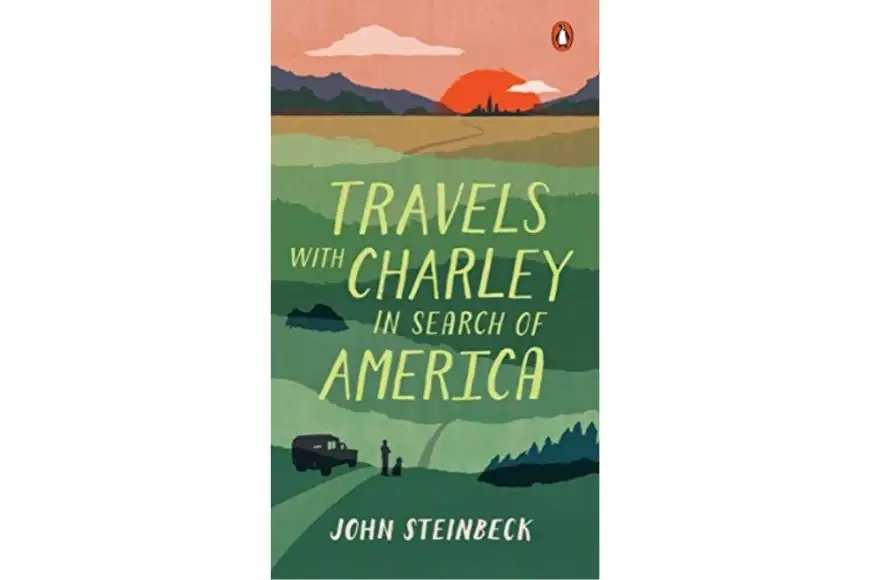
This classic travel memoir follows John Steinbeck and his French poodle Charley across the U.S. from New York to Maine to California and back again. Travels with Charley offers a striking portrait of early 1960s America, from dramatic natural landscapes and simmering racial tensions to quirky characters he meets along the way.

The Singular Pilgrim: Travels on Sacred Ground , Rosemary Mahoney
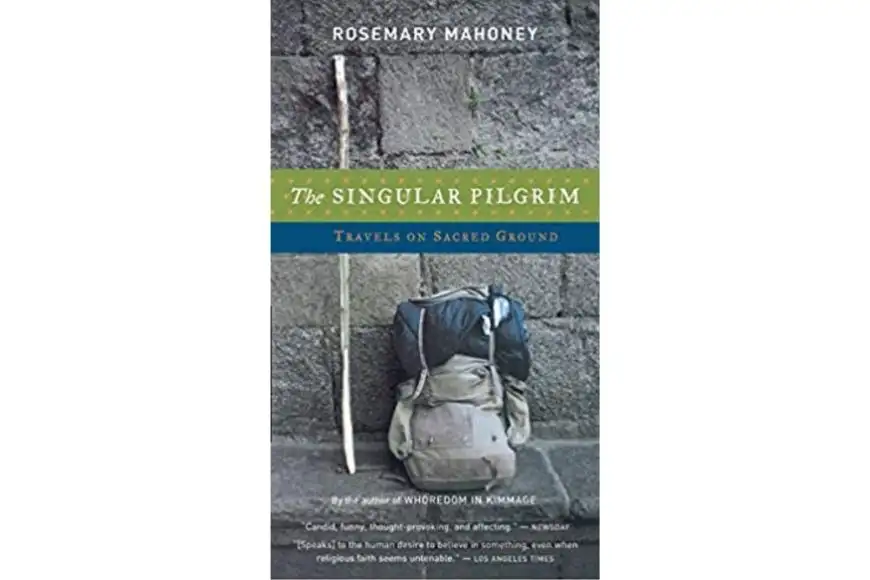
From Spain’s 500-mile Camino de Santiago to the Ganges River in Varanasi, India, Rosemary Mahoney follows in the footsteps of religious believers on some of the world’s holiest journeys. The Singular Pilgrim blends humor, curiosity, and keen insight as Mahoney confronts her own Irish Catholic heritage and finds grace in unexpected places.
10 Engrossing Audiobooks for Travelers
From Scratch: A Memoir of Love, Sicily, and Finding Home , Tembi Locke
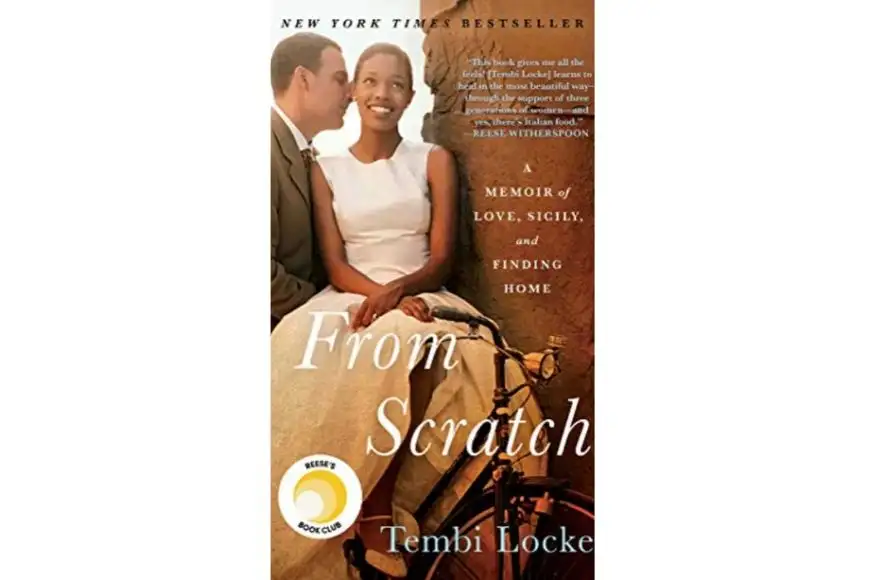
“In Sicily, every story begins with a marriage or a death. In my case, it’s both,” writes Tembi Locke on the first page of this moving memoir . Locke, an African-American actress, falls in love with a Sicilian chef whose family disapproves of their union. But after her husband’s untimely death, Locke brings their daughter to Sicily and slowly forges a relationship with his family that helps them all heal.
In a Sunburned Country , Bill Bryson
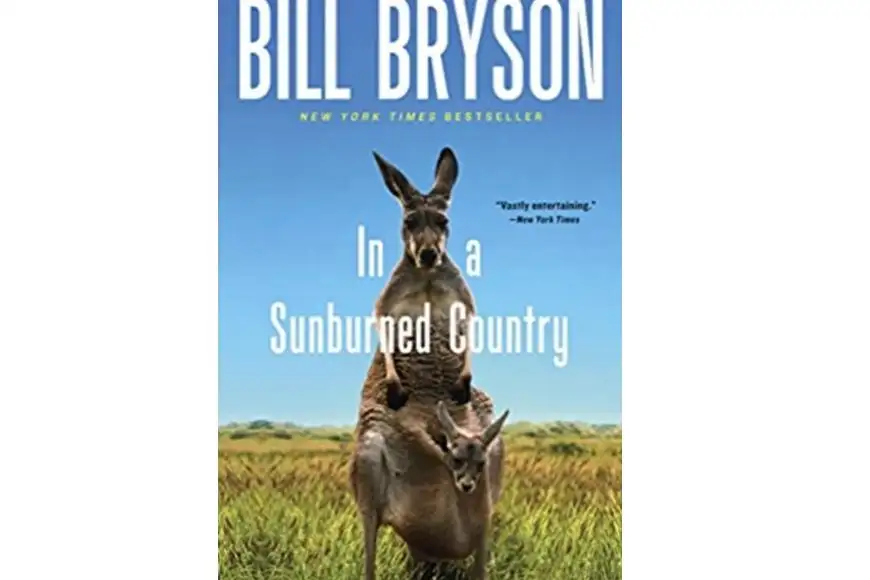
There’s a reason Bill Bryson is one of the most popular travel writers in the English language, and his signature wit and insight are on full display throughout In a Sunburned Country . As Bryson travels across Australia, he peppers fun facts with wry observations and conversations with cheery locals, bringing the country to life in his own inimitable style.
All the Way to the Tigers , Mary Morris
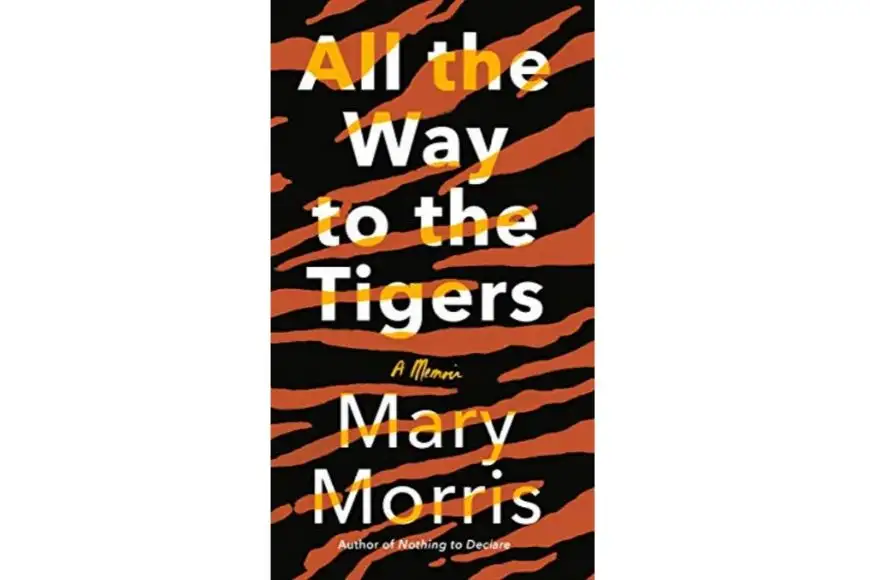
The newest travel memoir in this list, All the Way to the Tigers is well worth a preorder. It covers two journeys in one: Morris’ recovery from a devastating injury and her subsequent trip to India in search of tigers. Morris offers both inspiration and insight in this beautifully written book.
The 10 Most Anticipated 2020 Books
Comfort Me with Apples: A Journey Through Life, Love and Truffles , Ruth Reichl
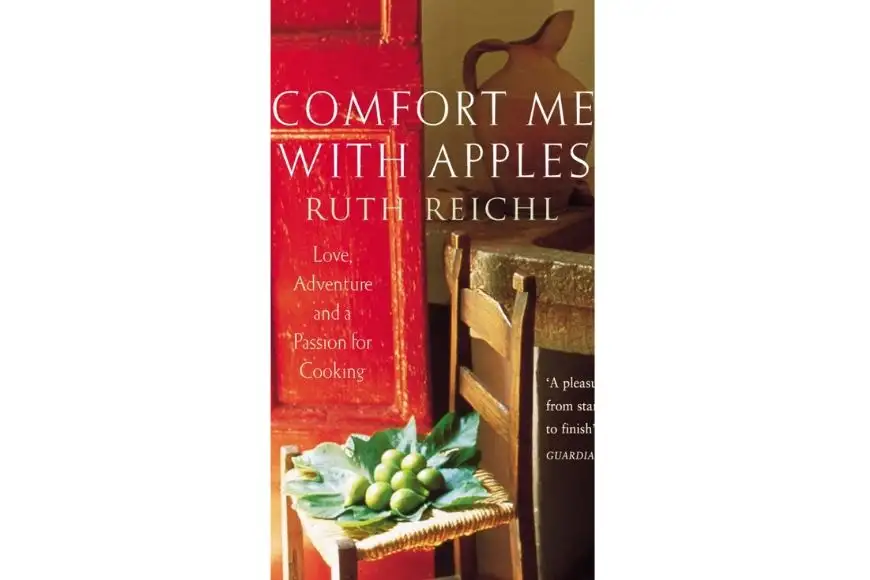
In Comfort Me with Apples , readers can eat their way around the world with food writer Ruth Reichl, sampling dry-fried shrimp in China and truffles in France. Reichl’s conversational writing style makes it feel like she’s talking to a friend—and her food descriptions will leave you hungry.
Wild: From Lost to Found on the Pacific Crest Trail , Cheryl Strayed
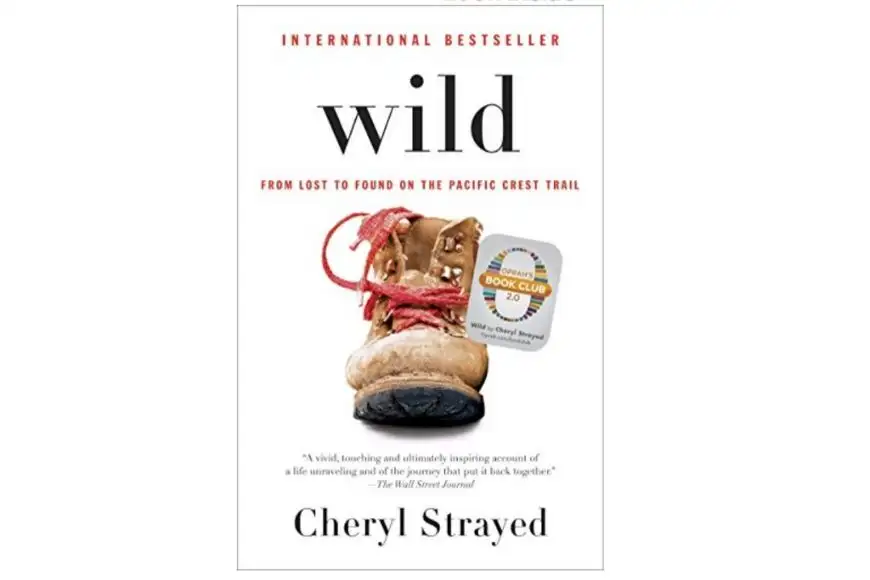
You might not expect a story of a woman hiking alone to be a page turner, but this international bestseller proves that wrong. Strayed writes about a period of crisis in her 20s, following the death of her mother and the dissolution of her marriage, when she made the brash decision to hike more than 1,000 miles of the Pacific Crest Trail from California to Washington. Her journey was as much emotional as physical, and Strayed writes about it in raw, visceral prose.
Ice Diaries , Jean McNeil
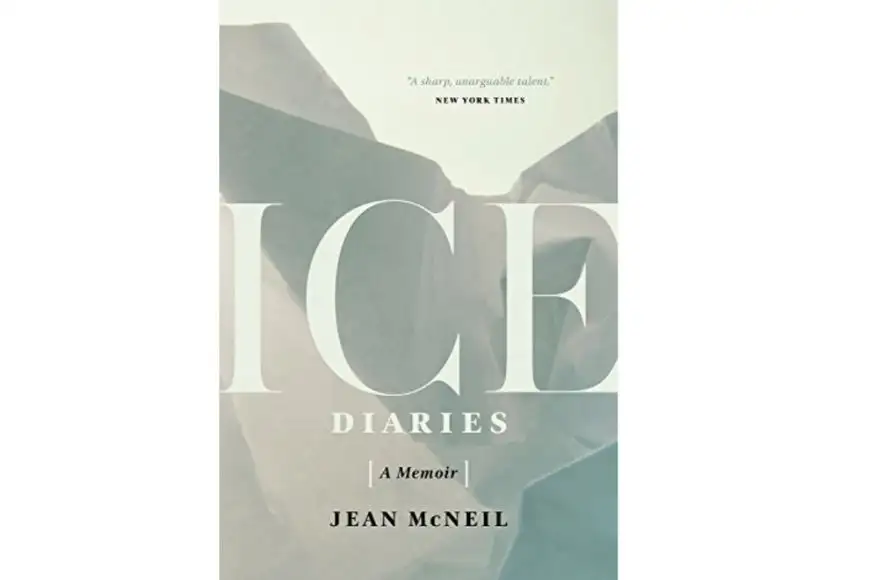
In Ice Diaries , Jean McNeil combines personal stories from her childhood in the Canadian Maritimes with vivid descriptions of her four months in Antarctica, as well as journeys to other icy destinations such as Svalbard and Greenland. Whether you’ve traveled to Antarctica or it’s still on your bucket list, McNeil’s book offers fascinating insight into the continent’s history and landscape.
10 Days in Antarctica
Looking for Transwonderland: Travels in Nigeria , Noo Saro-Wiwa
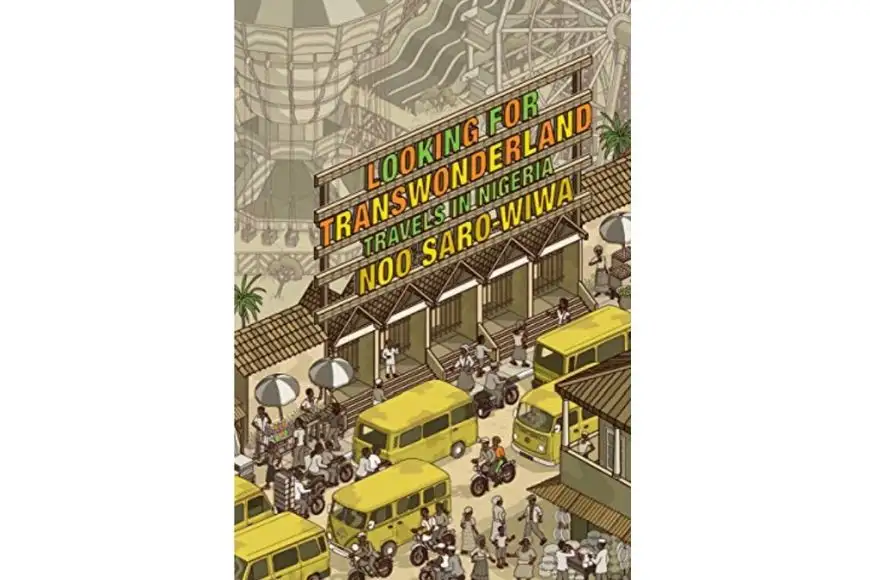
Though she grew up mostly in London, Noo Saro-Wiwa made frequent visits to Nigeria to visit her father, an activist who was later executed by the government. As an adult, she returns to the country for a deeper exploration of its corruption, culture, and unexpected charms. Looking for Transwonderland uses insight and humor to paint a multifaceted portrait of Nigeria.
The Lady and the Monk: Four Seasons in Kyoto , Pico Iyer
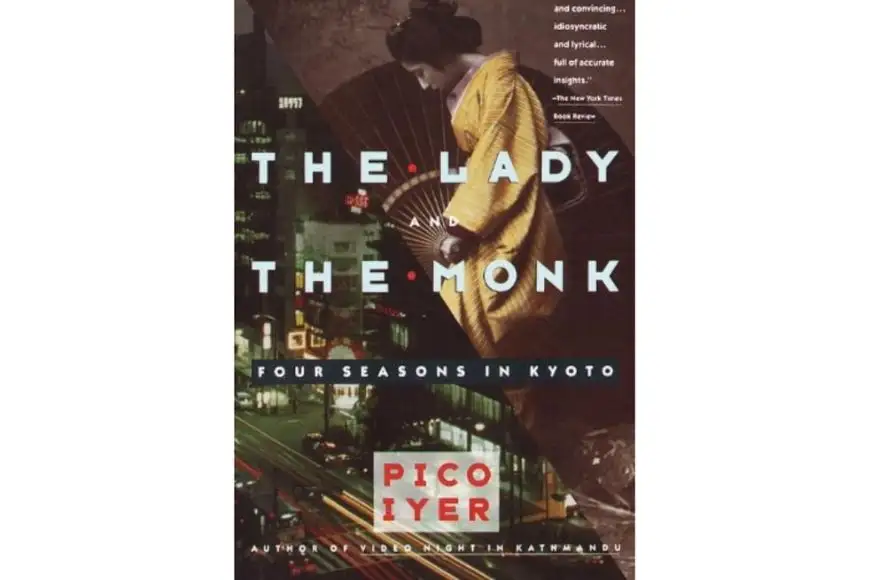
Pico Iyer intended to spend his year in Kyoto studying Zen Buddhism at a monastery and learning about Japan’s traditional culture—but his plans are upended when he meets a woman named Sachiko. The Lady and the Monk details their relationship, marked by cross-cultural misunderstandings and Iyer’s deepening appreciation for Japan in all its complexity.
All Over the Place: Adventures in Travel, True Love, and Petty Theft , Geraldine DeRuiter
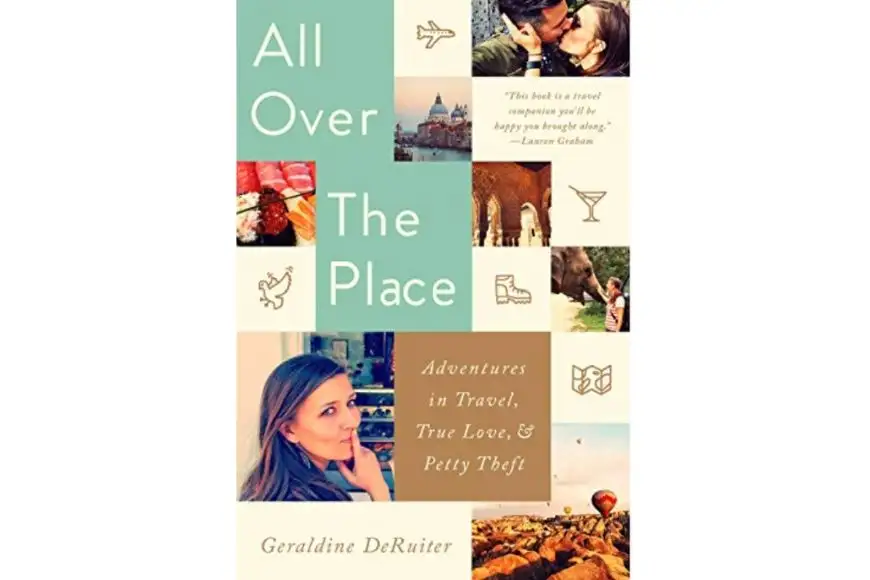
Geraldine DeRuiter leads off the aptly titled All Over the Place with a wry disclaimer, noting that her book is not particularly informative and confessing, “If you follow my lead, you will get hopelessly, miserably lost.” But that only makes this book even more fun to read, as DeRuiter and her husband careen around the world, getting sick, getting lost, and falling even more deeply in love.
The 10 Best Books of 2019, According to Amazon
Wild Coast: Travels on South America’s Untamed Edge , John Gimlette
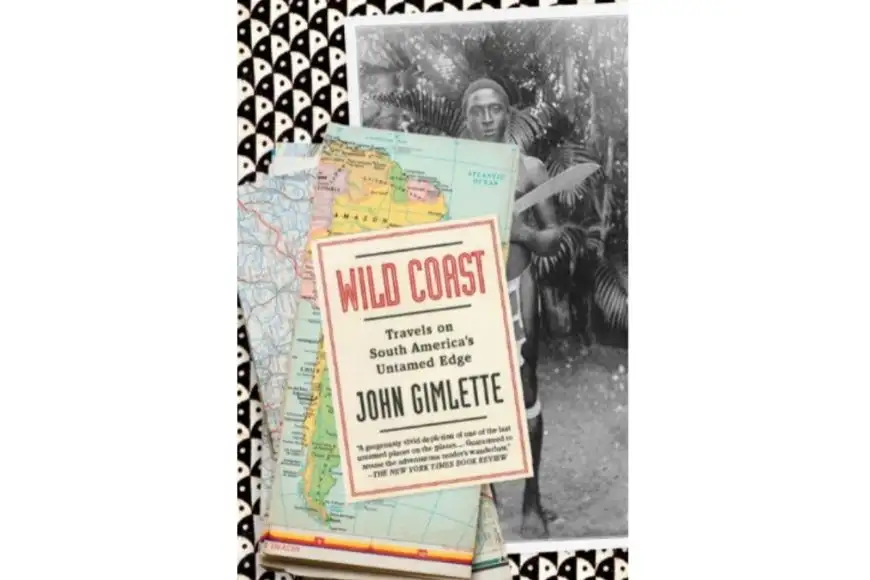
If you’re drawn to the unfamiliar, Wild Coast is well worth a read. Gimlette takes readers to three rarely visited countries in South America—Guyana, Suriname, and French Guiana—to reveal their colorful history, rare wildlife, and remote jungles.
The Snow Leopard , Peter Matthiessen
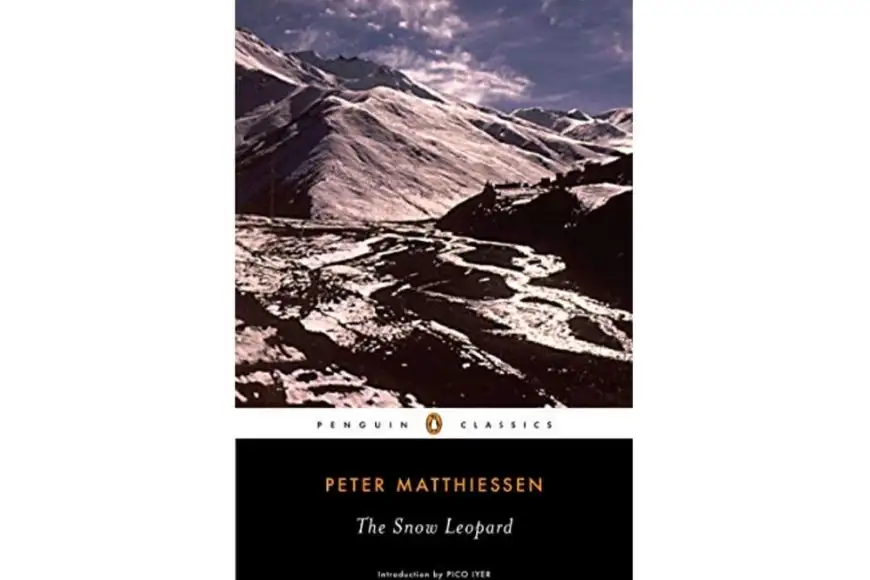
A masterwork of nature writing, The Snow Leopard details the author’s trek into the Himalayas in search of one of the Earth’s rarest and most elusive creatures. Matthiessen was a Zen Buddhist, and his memoir also includes his own internal journey toward a deeper understanding of the world around him.
Full Tilt: Ireland to India with a Bicycle , Dervla Murphy
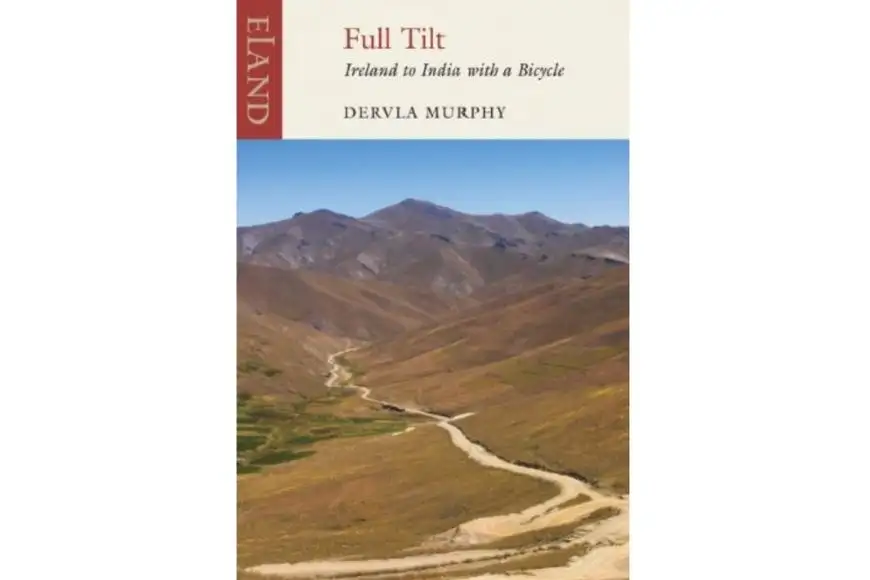
The ultimate adventure story, Full Tilt follows an Irish woman in the early 1960s on a solo bicycle expedition across Europe and through Iran, Afghanistan, Pakistan, and India, accompanied only by her .25 revolver. Murphy encounters snow, sunstroke, stomach trouble, and other discomforts, but her struggles are offset by the fascinating people she meets and the magnificent landscapes through which she rides.
Our Favorite Items for the Home
Shop the look.

Echo Speaker
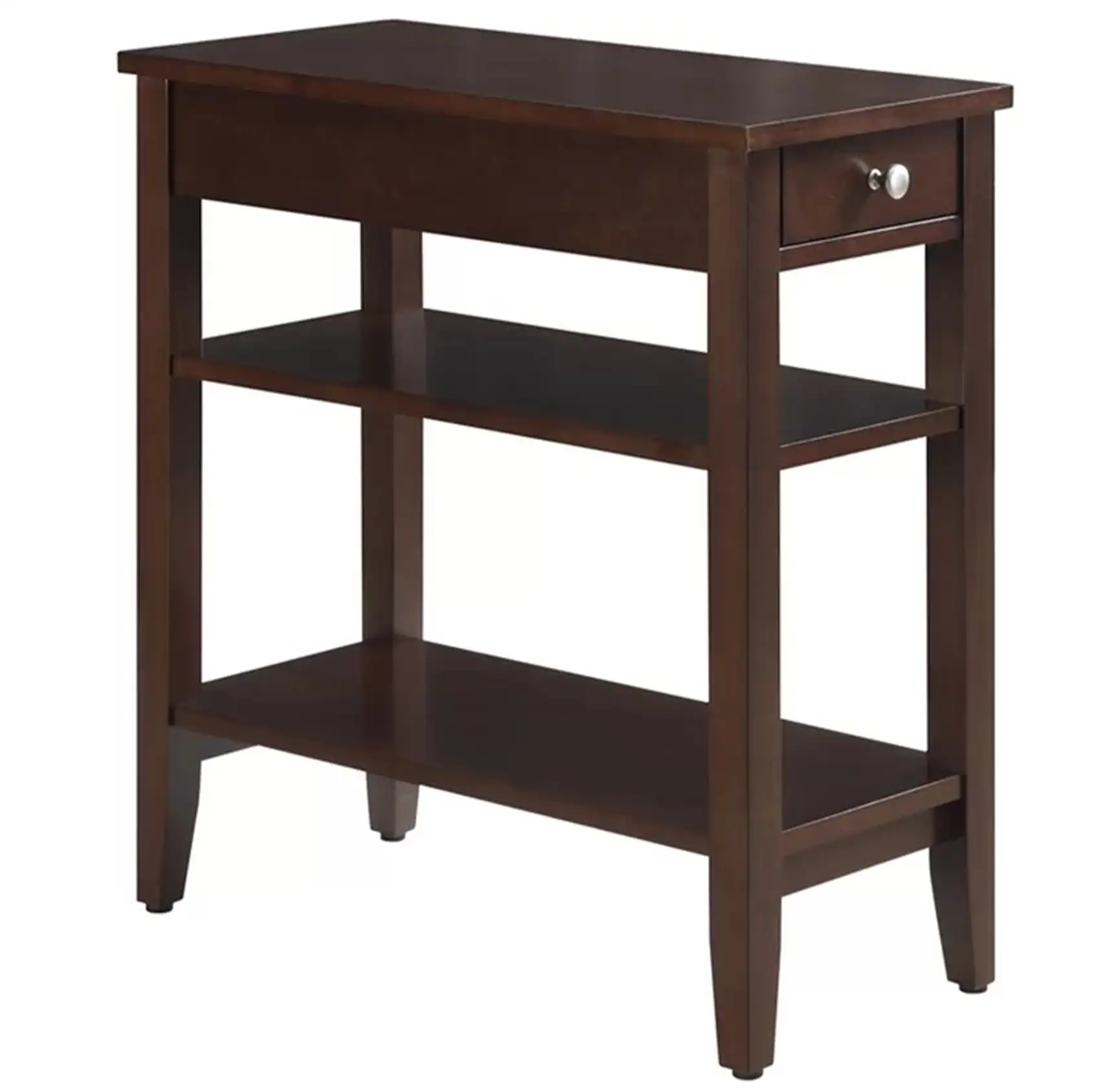
Terrarium Candle
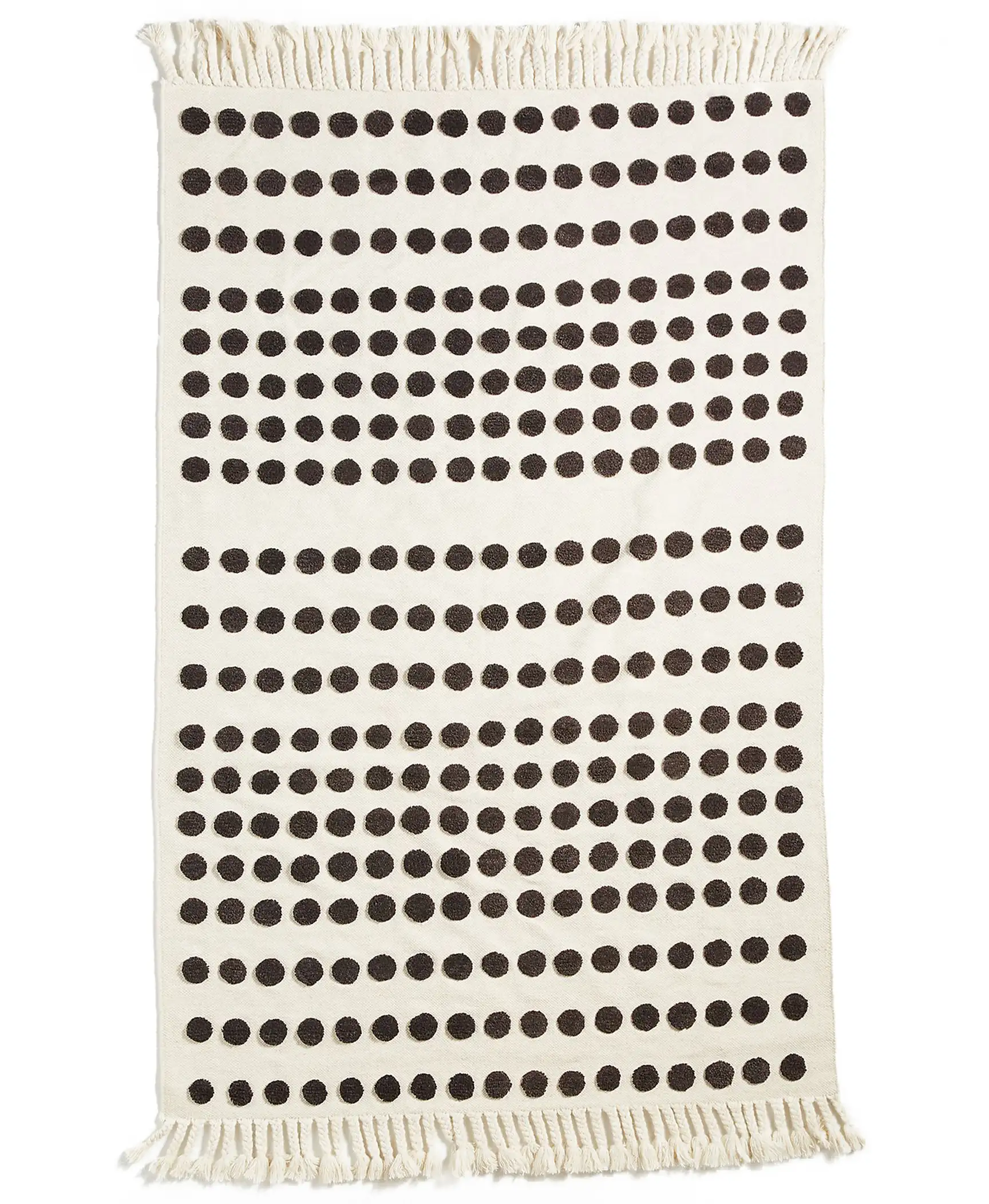
Handwoven Rug
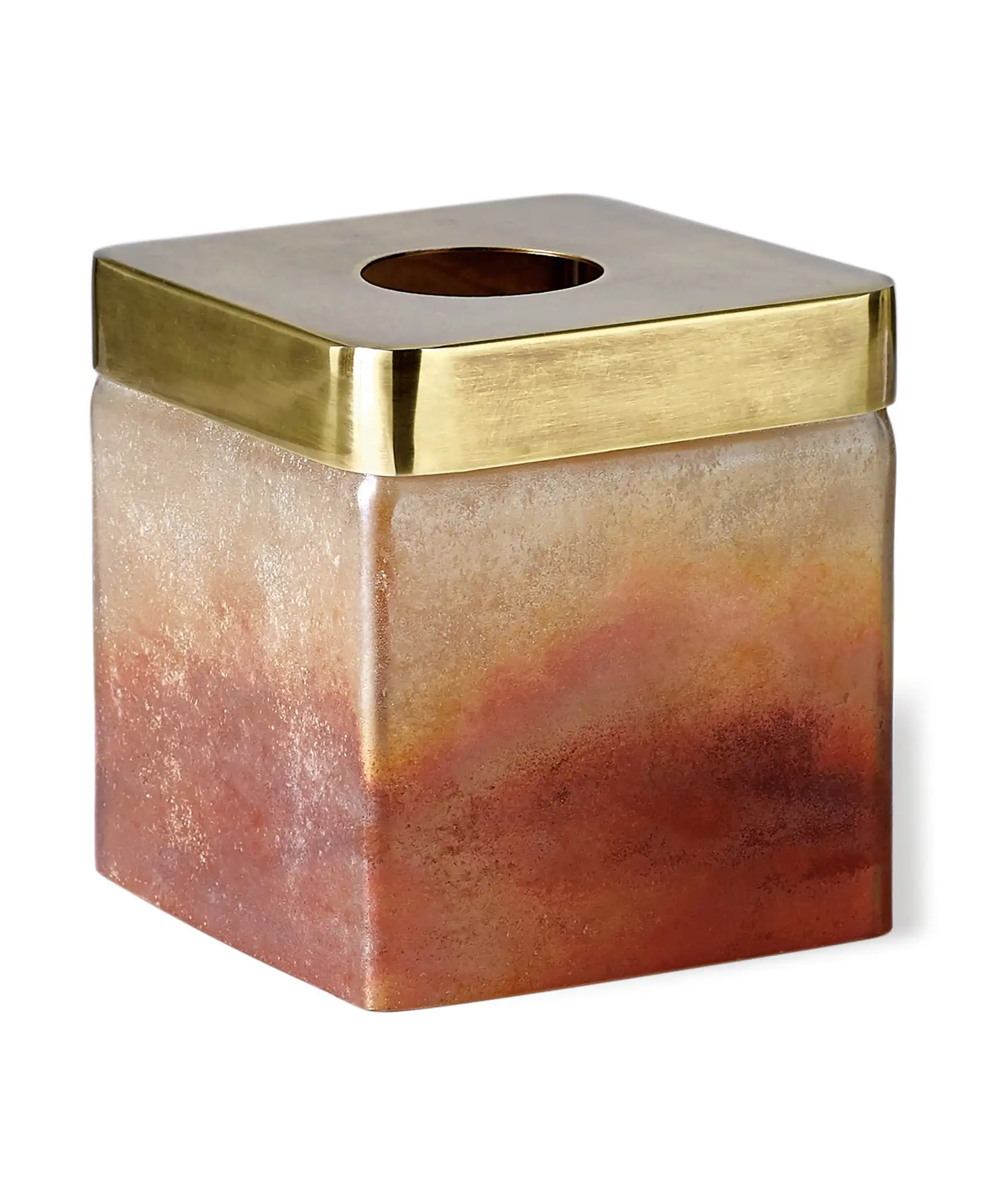
Tissue Box Cover
More from smartertravel:.
- 11 Books That’ll Help Boost Your Travel Inspiration Right Now
- 11 Funny Books to Read When You Need a Laugh
- 21 Sites Offering Virtual Tours and Live Streams for Travelers Stuck at Home
Follow Sarah Schlichter on Twitter @TravelEditor for more travel tips and inspiration.
We hand-pick everything we recommend and select items through testing and reviews. Some products are sent to us free of charge with no incentive to offer a favorable review. We offer our unbiased opinions and do not accept compensation to review products. All items are in stock and prices are accurate at the time of publication. If you buy something through our links, we may earn a commission.
Top Fares From

Don't see a fare you like? View all flight deals from your city.
Today's top travel deals.
Brought to you by ShermansTravel
Oslo to Bergen: 6-Night Norway Fjords...

Luxe, 7-Night Caribbean & Mexico Cruise...
Regent Seven Seas Cruises

Shop and Save with Country Inns...
Patricia Magaña

Trending on SmarterTravel

20 travel memoirs to take you around the world (from the comfort of your couch)
- BY Anne Bogel
- IN Book Lists , Books & Reading , Literary Tourism
- 97 Comments | Comment

I love how a good book takes me places I have never been and may never see with my own eyes—whether that place is close to home or halfway around the world.
Readers have long enjoyed vicarious travel and prepared for their trips by turning to the written word. These days I, like many readers, am especially grateful for armchair travel.
When a reader recently asked for travel memoir recommendations on on our What Should I Read Next Instagram account as a WSIRNReaderRecs request, we received piles of great book suggestions. We’ve gone through them all and curated this reader-generated book list for you. As so often happens, my TBR grew as a result.
Today I’m sharing some books I love and some I’m eager to read because of your enthusiastic recommendations. This list of 20 travel memoirs will hopefully provide some vicarious experiences while you dream about your next trip. This is by no means an exhaustive list so I’d love to hear about your favorite travel memoirs in the comments.
Some links (including all Amazon links) are affiliate links. More details here .
20 travel memoirs to take you around the world

Catfish and Mandala: A Two-Wheeled Voyage Through the Landscape and Memory of Vietnam

Rudy’s Rules for Travel: Life Lessons from Around the Globe

A Year in the World: Journeys of A Passionate Traveller

Waking Up On the Appalachian Trail: A Story of War, Brotherhood, and the Pursuit of Truth

Full Tilt: Ireland to India with a Bicycle

Leave Only Footprints: My Acadia-to-Zion Journey Through Every National Park

Hardly Working: A Travel Memoir of Sorts

The Singular Pilgrim: Travels on Sacred Ground

Around India in 80 Trains

A Walk in the Woods

A Cook’s Tour: Global Adventures in Extreme Cuisines

Travels with Charley in Search of America

How to Be a Family: The Year I Dragged My Kids Around the World to Find a New Way to Be Together

At Home in the World: Reflections on Belonging While Wandering the Globe

Paddling with Spirits: A Solo Kayak Journey

Wild: From Lost to Found on the Pacific Crest Trail

Alone Time: Four Seasons, Four Cities, and the Pleasures of Solitude

Without Reservations: The Travels of an Independent Woman

How We Fight for Our Lives: A Memoir
What are YOUR favorite travel memoirs? Tell us all about them in comments!
P.S. 20 books to take you around the world , and 20 terrific titles from #ownvoices and #diversebooks authors .

97 comments
‘Wherever the River Runs’ by Kelly Minter is not really a travel memoir, but it tells of her journeys on the Amazon river to minister to the people there. It’s a wonderful book!
I would suggest Notes from a Small Island over A Walk in the Woods by Bill Bryson and my second of his travel books would be In A Sunburned Country.
Agreed!! Anything by Bill Bryson is wonderful, but Notes From a Small Island is an absolute must-read. (Perhaps not strictly a travel memoir as he had lived there for 20-some years when he wrote it and was preparing to return to the U.S.. Let’s just call it a really LONG trip!! 😁)
I loved In a Sunburned Country. I think it’s my favorite of his.
Second that, absolutely fascinating and really made me want to get Australia
I was supposed to travel to Poland in June with my mom and sister to visit my aunt and uncle. It was a much anticipated trip (I’ve never been) and I was planning to ask for reader recs! No WW2 😉 Alas, we will try again next year. Several of these look really interesting. Sadly my library does not have many of them, but I do have a hold on At Home in the World 🙂
The trumpeter of krakow is middle grade kids lit set in medieval Poland. I really enjoyed it as i knew nothing about Poland with the exception of it’s role in WW 2.
Thanks for the rec! I do love middle grade.
My daughter lived in Warsaw for 3 years, and I had the treat of visiting twice. Never got to Krakow, but Poland is so interesting. If you can, Warsaw is very worth taking time to visit, it has wonderful museums and (before COVID) a really vibrant city vibe with a much more affordable price point. I just used my fav, Rick Steves for planning (I think the guide was Poland and Hungary?). People are very friendly, but most people above 30 don’t really speak much, if any, English, so good to have some key “polite words” memorized.
Paris, Part Time by Lisa Baker Morgan is a memoir that takes you to Paris. Her book is the story of her journey to find the place she can call home – part time. Her book includes many of her recipes, her travels through France and her photos of her favorite city – Paris. Pick it up as it is a wonderful read.
I LOVE A Walk Across America and A Walk Across China by Peter Jenkins. Getting to know a country by getting to know its people is such a precious experience to me. I’ve never had the privilege except through those two books, but would love to do that in either country.
I loved Walk across America and The Walk West, also Jenkin’s book Along the Edge of America. I’ll have to try his one in China.
Added A Cook’s Tour to my list – thanks! There’s another one that’s on my TBR you may be interested in: Four Seasons in Rome by the same author as All the Light We Cannot See.
Four Seasons in Rome is great by Anthony Doerr. Loved this book.
I read Four Seasons in Rome 11 years ago when I was on bed rest in the last few weeks of my pregnancy. I have such fond memories of being “in” Rome when I couldn’t go anywhere but my couch. (I also read all four Twilight books in that same stretch, lest you think I was all classy travel memoirs! ha!)
I loved Four Seasons In Rome!! It’s on my all time favorite list!!
Thanks for this!! I’ve added two more books to my ever-growing TBR list. (I will never live long enough to finish it!!)
Lands of Lost Borders, by Kate Harris. A story of biking along the silk road.
A Walk Across America by Peter Jenkins, as well as his Across China.
J. Maarten Troost – my favorite travel writer -is missing from this list- his books titles alone inspire interest!
Falling in Love with the English Countryside by Susan Branch I read it over a rainy weekend on the couch and felt like I had actually been to England!
Oh yes! I love this one and, in fact, all of her books. They do make you feel as if you have been on a holiday somewhere else.
That one is a delight! It would be a great one to read right now. Very light and enjoyable!
I had the same experience with this book. I loved it and have recommended it to several friends who felt the same. We are planning to take this same trip!
I love all of her books! I like her approach to her visit – visiting homes of authors, National Trust sites, walks about the countryside – I’m in!!
Absolutely agree with all these comments. I read this during quarantine and it was so delightful. Also loved her book about Martha’s Vineyard (Martha’s Vineyard: Isle of Dreams)
I loved The Year of Living Danishly by Helen Russell. It gave words to my experiences in Denmark and taught me some new info that I wouldn’t have known otherwise. I can’t say enough good things.
I loved this book! It was hilarious and informative.
I love this list because I feel like there are so many books (almost all of them) that I haven’t heard of!! And love that there are so many backlist options I can probably find at the library 🙂
Love With a Chance of Drowning was really funny and interesting- the author and her then boyfriend live on a small sailboat for a period of time.
Really enjoyed The Salt Path about the author and her husband and their walk along a sea path after losing their home. Her husband has a chronic disease and their journey is really interesting.
Loved The Salt Path. Listened to it on audio, fabulous.
Does anyone have a suggestion on a travel memoir that is based in Spain? Going there for the first time next year and would love anything that would give me some insights.
Driving Over Lemons, by British writer Chris Stewart. I haven’t read it, but my British sister-in-law loved it.
I hope it is okay drop a link to a different page… But this was JUST in my Google feed: https://bookriot.com/books-set-in-spain/
A lesser known memoir that’s fabulous reading is Miles From Nowhere by Barbara Savage. She and her husband did a round-the-world cycling trip in the late 1970’s, and her descriptions are at times funny, at times truth-is-stranger-than-fiction, and definitely adventurous. The memoir is made even more poignant because she died not too many years later from a triathlon accident, if I remember correctly.
Loved this one too.
Nothing to Declare: Memoirs of a Woman Traveling Alone by Mary Morris. She’s written several other travel memoirs, but this is my favorite of hers. She’s also a wonderful fiction writer – I would recommend her most recent work – Gateway to the Moon.
Susan Allen Toth wrote a wonderful series of travel memoirs about England, beginning with “My Love Affair with England: a Traveler’s Memoir.”
I love her books – so comforting – and her approach to travel.
I love her books and have all of them.
I just loved “A Year in the World.” I’ve read several on this list and am thankful for the reminder of how much I love good travel writing. Also, may I suggest anything by Jan Morris and “Italian Days” by Barbara Grizzutti Harrison.
I loved “The Yellow Envelope” – so did my book club!
From Scratch by Tembi Locke was lovely when we were considering a move to Italy.
I loved “Travels with Charley” by Steinbeck!!!! I have a standard poodle so that’s one reason I loved this travel book!! And thank you for this list. Many more titles to add to my TBR list!
Travels With Charley is one of my all time favorite books, and one I’ve read several times. I rarely do that.
Where do you buy the book- Hardly Working a Travel Memoir of Sorts by Zukiswa Wanner? I can’t find it anywhere.
Blue Highways by William Least Heat Moon is a classic but still so good!
Anything by Paul Theroux
The Cat Who Covered the World by Wren Even my cat hating son liked this when I read it aloud to the children.
Free Country, by George Mahood, is one of my favorites. George and his friend, Ben, have three weeks to cycle 1000 miles from the bottom of England to the top of Scotland. But they start with only their boxer shorts, and rely on the British public for everything else for their journey. It’s an amazing story about the goodness of humankind, and it’s a hilarious read about a beautiful journey.
Am noting alot of these TBR. I loved McCarthy’s Bar which I read years ago. An English comedian travels from Cork to Donegal visiting bars with him name (McCarthy)
A Year in Provence by Peter Mayle made me fall head over heels in love with Provence before I had ever visited! It’s an oldie, published in 1989, but a wonderful member of his first year in this idyllic spot in Southern France.
I loved all of his books, for his humor and the eye openers about the French people in the countryside. Re-reading that one right now.
Loved it! I think I’ve read all but one of his books now.
What an amazing list and more in the comments!! I shall be able to travel through the eyes and experiences and words of these authors, to places I can only now dream of from the comfort (and safety) of my arm chair. I am reminded of Dr Seuss…..’Oh, the Places You’ll Go!’
I must add my enthusiasm for Four Seasons in Rome by Anthony Doerr. I read it years ago and still think about it.
Road Trip Rwanda. by Will Ferguson. He is a Canadian author, often known for his humour. He and his friend, Jean-Claude Munyezamu, who left (escaped) Rwanda just before the genocide travel to Rwanda in 20 years after. It is hopeful, often funny, beautiful book about a country that because of its horrific history, we only know the tragedy, not the beauty and vibrancy of its people and how the country has been reborn. Highly recommend.
I LOVED the memoir The Traveling Feast: On the Road & At the Table with my Heroes by Rick Bass. The author travels around the world, thanking writers that have influenced him, and cooks them a meal in gratitude. (while bringing along some of his own writing students for mentoring.) Its fascinating for the travel, the food and the writing life. Also want to echo the sentiments in the comments of the BRILLIANCE of Four Seasons in Rome by Anthony Doerr. It definitely is one of my favorite travel memoirs. A great list here, as always.
I have so many, but this year liked “ A Paris All Your Own” ( various authors with notes on their trips to Paris). Also, “We’ll Always Have Paris/ A Mother-Daughter Memoir” by Jennifer Coburn telling of trips to several countries with her daughter. Thanks for the list!
I loved To the Field of Stars: A Pilgrim’s Journey to Santiago de Campostela by Kevin Codd. Actually made me want to do the long walk!
Not a travel memoir but I highly recommend the audio version of A Year in Provence. It’s dlelightful — so much so that the author had to move because he did not disguise the actual area and people came from around the world to see his home
I love travel memoirs! Alice Steinbach’s Without Reservations is my favorite book ever, not just for the travel writing but also for how she discusses the seasons of women’s lives. The sequel, Educating Alice, is also fantastic. I also really enjoyed Mark Adams’ Turn Right at Machu Picchu: Rediscovering the Lost City One Step at a Time and Elizabeth Gilbert’s Eat Pray Love.
Yay, another Alice Steinbach fan!
I’ve read both of those multiple times – they’re so great!
Give Me the World by Leila Hadley. She truly had crazy adventures–with her six year old son!–and writes about them so very well.
Anything by Paul Theroux- The Great Railway Bazaar, The Old Patagonia Express, Riding the Iron Rooster… All are lovely to read and re-read!
I’m currently reading Thirst by Heather Anderson. This is another memoir about a solo hike on the PCT. I like this better than Wild because “Anish” Is an experienced hiker with the audacious goal of breaking the record for fastest time. Still all the ups, downs and triumph over adversity themes and compelling insight into how she got to this point in life.
Footprints is also on my TBR after a friend recommended it. We plan all family vacations around visiting national parks. I’m excited to armchair travel with that one!
Three Weeks With My Brother by Nicholas Sparks and Traveling With Pomegranates by Sue Monk Kidd are two I enjoyed. Just read Leave Only Footprints and truly enjoyed that as well.
My favourite is Le Road Trip by Vivian Swift. Illustrated with beautiful watercolour sketches, this travel journal follows her journey through France as a newlywed. I love her sense of humour, travel tips and how she draws comparisons between travel and relationships.
Last year I read “Dear Bob and Sue” by Matt and Karen Smith and really enjoyed it. Matt and Karen Smith, a recently empty nester couple, set a goal to visit all the National Parks in the United States. This book chronicles those trips. It’s interesting, informative and funny. I thoroughly enjoyed Matt and Karen’s personalities and the way they interacted with one another. Travel + Nature + Humor = a winner!
Yes! I was going to say the same! I’ve been binge reading the three books in the “Dear Bob and Sue” series and have their book “Dories Ho!” on my nightstand now.
One Room in a Castle by Karen Connelly.
This is a great list and I really appreciate all the comments as well! I LOVE travel books and have read many, but there are definitely a few on this list and in the comments I had never heard of! So now my TBR has grown again…thanks!
I have to suggest my favorite travel book – Tales of a Female Nomad by Rita Golden Gelman. At the age of 48, the author decides to leave her pampered life and embark on a lifetime of travel. What makes this book so special is that she isn’t content to merely be an observer, she meets the people and learns about their cultures. This book is inspirational – she is living a lifelong dream, beginning in her middle years. It caused me to lift my head, look around at my life, and make significant changes. Thanks to everyone who enlarged the original list! My TBR list has grown by leaps and bounds.
I love this genre! A few I’ve enjoyed immensely: Dove, by Robin Lee Graham. An account of a hippie kid in the 1960s who sailed around the world alone. A Thousand Days in Venice, by Marlena de Blasi. Her account of falling in love with a Venetian and moving to Venice in her 50s. Sometimes her writing is a bit much, but she describes the city beautifully (and makes me want to add velvet wall hangings and crystal chandeliers to my house!) The Innocents Abroad, by Mark Twain. His super-sarcastic sense of humor is perfect in this, as he travels and complains his way around Europe in the 1800s. It was interesting to read about what international travel was like, 150 years ago, as well. Learning to Bow, by Bruce Feiler. A man’s adjustment as he moves to Japan as an English teacher.
I loved all of Marlena de Balsi’s books. Agree the writing can be a little ‘flowery’ to say the least but she has a certain style!
My Love Affair with England & others by Susan Allen Toth
Absolutely loved WILD, also enjoyed A WALK IN THE PARK. Several of the others are now on my TRB list, TX!
My favorite is A House in the Sky – true story following Amanda Lindhout – 19 year old cocktail waitress who saves every penny to go on adventures around the world. If it sounds like a bad idea to travel the world along as a young teen, it is. She gets kidnapped in Somalia and becomes a hostage to a young militant group. It might frustrate some but I could really relate. I was hooked from the start of the book.
I would add:
*anything by Michael Palin, former Python and English traveller extraordinaire *Guy Delisle’s graphic novels ‘Shenzhen’, ‘Burma Chronicles’ and ‘Chroniques de Jérusalem’
Thanks for this great post. Like most people I love to travel, but we can’t right now due to the pandemic. This is a way to satisfy my wanderlust for the time being. I just ordered Without Reservations and At Home in the World and can’t wait for them to arrive!
The two that I still think about to this day are No One Goes to the Ice Alone (which is a memoir of a National Geographic author’s research trips to Antarctica to write about it for the magazine. Faaaaansinatinating look at life on the Antarctic. )
The other is Lost on Planet China- a reporter/memoirist decides to travel along the only highway in China that goes from the coast to the Eastern border. He explores different themes and people’s everyday life along the way. It’s less about his journey and more about the people and everyday life realities of China. But still fascinating.
Tales of a female Nomad by Rita Gelman is another great book if you’ve ever been a guest in other cultures and miss making friends abroad during this time of lock down. Speaking of Bryson, I also laughed out loud at Bill Bryson’s Neither Here nor There: Travels in Europe book. Looking forward to finding some of these mentioned, thank you!
One of my first travel memoirs was “Undress Me in the Temple of Heaven.” This is from Amazon: In 1986, fresh out of college, Gilman and her friend Claire yearned to do something daring and original that did not involve getting a job. Inspired by a place mat at the International House of Pancakes, they decided to embark on an ambitious trip around the globe, starting in the People’s Republic of China. At that point, China had been open to independent travelers for roughly ten minutes.
Found it fascinating!
When I think of travel writing I immediately think of Paul Theroux’s many books, particularly those focusing on his travels in South Africa. His writing style always draws me in and keeps me going. I enjoyed Dark Star Safari and The Last Train to Zona Verde in particular. The Great Railway Bazaar is his best known but I haven’t read it yet.
On the Noodle Road: from Beijing to Rome by Jen Libn-Liu!! It’s still one of my favorite memoirs. Recipes included.
This is concerning Steinbeck’s “Travels with Charley.” I remember the days written about in New Orleans with the desegregation of the New Orleans’ public schools. I was young but I knew the man who walked his daughter to school every day. Fifteen years later I would meet him and 2 years later I would marry him. He died back in 2005. But those days were always fresh in his mind. He and his daughter appeared on the Oprah tv show. He talked about writing a book about those days and calling it the Longest Walk. He was a Methodist minister and his church in the French Quarter district was damaged and his young family(first wife and kids) had to be moved and protected by the FBI. It was a dangerous time for those who chose to protect kids’ rights to get an education.
I love travel books which transport you to different places, times and cultures. Some of my favorite books are: Roughing It–Mark Twain Poisonwood Bible–Kingsolver Don’t Let’s Go to the Dogs Tonight–Fuller Dark Star Safari: Overland from Cairo to Cape Town–Theroux Iron and Silk–Hessler Ice Bound–Nielsen Skeletons on the Zahara–King
Several years ago I read and loved Tales of a Female Nomad by Rita Golden Gelman.
One of my favorite books is ‘Japan: In Search of Wa’ by Karin Muller. The author lives with a Japanese family as she becomes acquainted with the country and discovers another side of it. Unfortunately, they expect more of her than she bargained for. The writing is beautiful and has a thoughtful cadence to it, if that makes sense!
Sorry, I wrote the title incorrectly. It’s ‘Japanland: A Year in Search of Wa’
Bad Tourist by Suzanne Roberts.
Trying to find the title of a memoir written in (I think) the 1950s. Possibly by a young man who subsequently became a successful ad guy. About his travels to Mexico (I think). Can anyone help?
I loved “The Turkish Embassy Letters” (Mary Wortley Montagu), I read it in full years ago, but keep going back to re-read some parts. It gives an exceptional insight of traveling through Europe and the Ottoman Empire as a woman in the 18th century.
I’d also love to recommend Soul Truth by Bianca Caruana. It’s about one women’s journey from corporate to backpacker and the people she meets along the way through Southeast Asia. It’s a story about love, loss and the journeys we take to meet our untethered selves.
Leave a Comment Cancel reply
Your email address will not be published. Required fields are marked *
We appreciate a good conversation in the comments section. Whether we’re talking about books or life, differing opinions can enrich a discussion when they’re offered for the purpose of greater connection and deeper understanding, which we whole-heartedly support. We have begun holding all comments for moderation and manually approving them ( learn more ). My team and I will not approve comments that are hurtful or intended to shame members of this community, particularly if they are left by first-time commenters. We have zero tolerance for hate speech or bigotry of any kind. Remember that there are real people on the other side of the screen. We’re grateful our community of readers is characterized by kindness, curiosity, and thoughtfulness. Thank you for helping us keep it that way.

Modern Mrs Darcy® participates in affiliate marketing programs, where we receive a small commission when products are purchased through links on the site. We have an affiliate relationship with the following retailers: Amazon Services LLC Associates Program, Bookshop, Libro.fm, Target.com, and others. We appreciate it so much when you support Modern Mrs Darcy® by clicking on these links to make your purchases.
© 2023 Anne Bogel | Website by Contemplate Design
summer reading starts May 16th

Grab your Summer Reading Guide and join us for the best book party of the year!
Find your next read with:
100 book recommendations for every mood.
Plus weekly emails with book lists, reading life tips, and links to delight avid readers.

- Editorial Services
- How It Works
- Literary Agent Alert
Tips for Writing a Travel Memoir
Some of the world’s best literature exists in the form of travel memoirs. Bill Bryson’s A Walk in the Woods , Julia Child’s My Life in France , Jamie Zeppa’s Beyond the Sky and the Earth , and John Higham’s 360 Degrees Longitude are all examples of critically acclaimed and universally loved travel memoirs. What makes each of these memoirs so aspirational? Each contains a clever mix of vulnerability, connection, and exoticism.
To create a compelling travel memoir, you must be a great storyteller, first and foremost— and we can help with that. What follows is a list of tips to help you engage your reader with a spellbinding travel story.
Let’s get started.
Here’s a list of the 15 most riveting travel memoirs. Subscribe to receive this extra resource.
Download your bonus content:
Travel Writing Isn’t The Same As a Travel Memoir
Let’s draw an important distinction right away: A travel memoir is not the same as writing a guide book or a generic book on how to travel.
While the latter two may provide the travel-minded tourist hopeful with generic advice on what to see and do, the travel memoir is focused on the writer’s experience and takeaway. A travel memoir may appeal to the reader with wanderlust, but a love of and a desire to travel is not a requirement. The only true requirement for a travel memoir is a good story.
On the other hand, a reader isn’t likely to curl up with a non-narrative guide book.
Blogging, guide books, tutorials, and other forms of travel writing certainly have their place, but they aren’t the same as a memoir. A travel memoir isn’t just a list of experiences in a unique location. It’s a written documentation of the author’s awakening or evolution.
So, unless you’re being sponsored by the visitor’s bureau to write a marketing pamphlet on the destination, your travel memoir should be intimate, honest, and focused on the emotional takeaway.
Give Yourself Some Time
You can’t write a travel memoir while you’re actually on the journey. At best, you’re writing field notes or a travel journal. However, a memoir must have a deeper meaning that’s only evident after you’ve come to the end of your journey.
Before writing your memoir, you must take time to reflect on your travels and to contemplate your story’s overarching theme.
This past summer, I went on a month long adventure to the American West. Although I’d love to write about it one day, I’m still parsing through the experience and figuring out what I’ve learned. The best stories emerge after they’ve had an opportunity to breathe and you’ve gained much needed self-awareness.
To write with self-awareness, let it settle. Realize how the experience has changed you, and then write from that informed perspective.
You may not have it all figured out. Like me, you may be the type of writer who understands their thoughts while writing, but it’s still important for subconscious processing to give yourself space after an event and before writing.
Define Your Voice
When crafting a memoir of any type, you must define your voice.
Your voice is a combination of the following:
- Your unique perspective
- The type of language and cadence you use when writing your story
- The way you choose to tell the story (i.e. humorous, relatable)
Many travel memoirists choose a voice that’s either friendly, self-deprecating, or conversational, however remember that you’re not bound to this type of voice. You can be aloof, formal, or matter-of-fact. Your voice will impact how the reader experiences your memoir, so choose a voice that carries the sentiment you’re hoping to convey.
We’ve tackled voice before. Check out this post for a thorough guide on finding your writer’s voice .
Focus on the Meaning
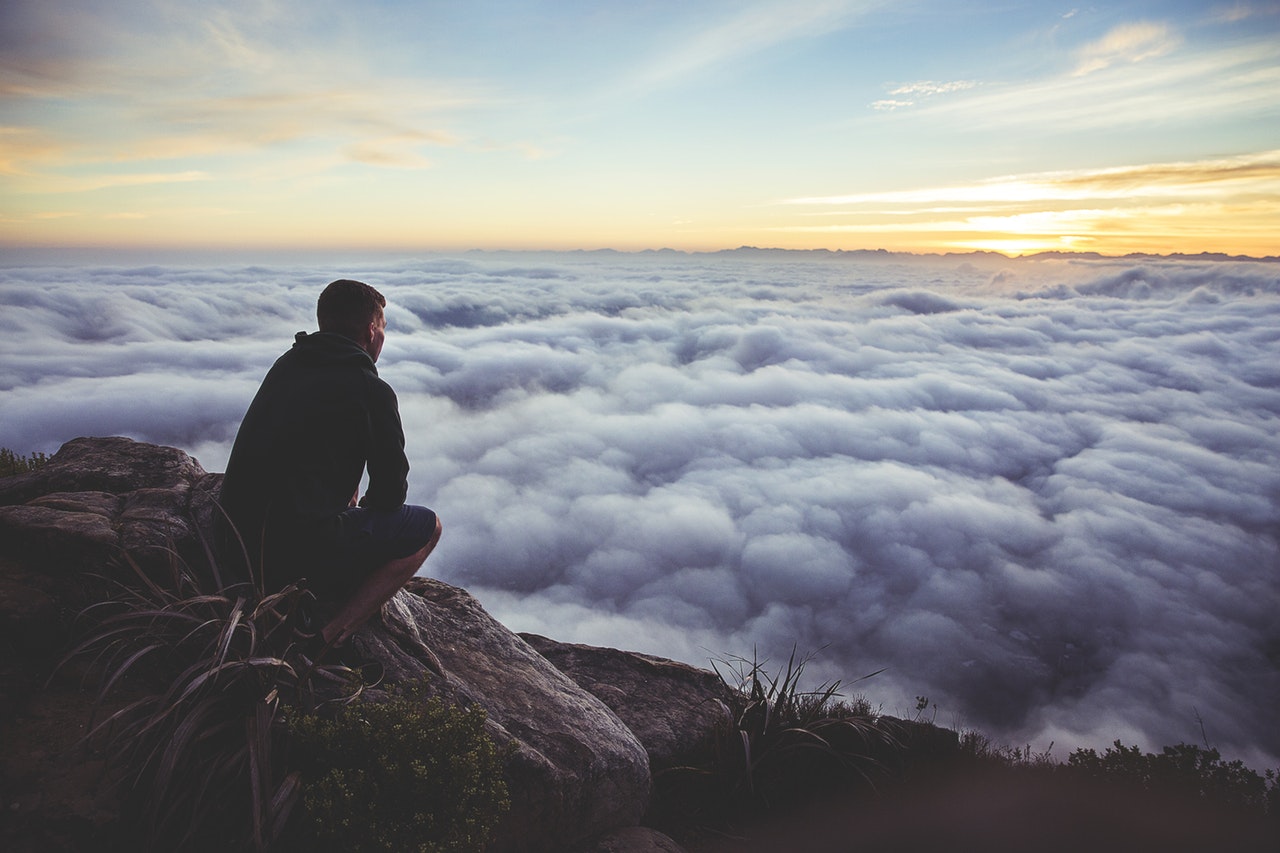
The most important part of your travel memoir is the takeaway, or the moral of the story. This advice applies to any memoir, by the way. Creating a travel log of what happened and when it happened is boring. It’s the literary equivalent to showing slide show pictures of your vacation.
But if you dig underneath the surface and discuss not only what happened but what you learned from what happened, you’ll forge a stronger connection with the reader.
Find the universal takeaway that any human over the age of 12 can understand. To do this effectively, you’ll need to take the reader on two separate but parallel journeys. Those two types of journeys involved in your travel memoir are the physical journey and the emotional one. It’s relatively easy to write about the events you experienced on your trip. It’s harder to write about what you learned from the trip.
The meaning of your book is tied to its theme. Whether you go with a popular memoir theme like self-discovery, coping with loss, or coming of age, your theme will help you connect with readers who identify with your struggles.
Pick and Choose the Right Stories
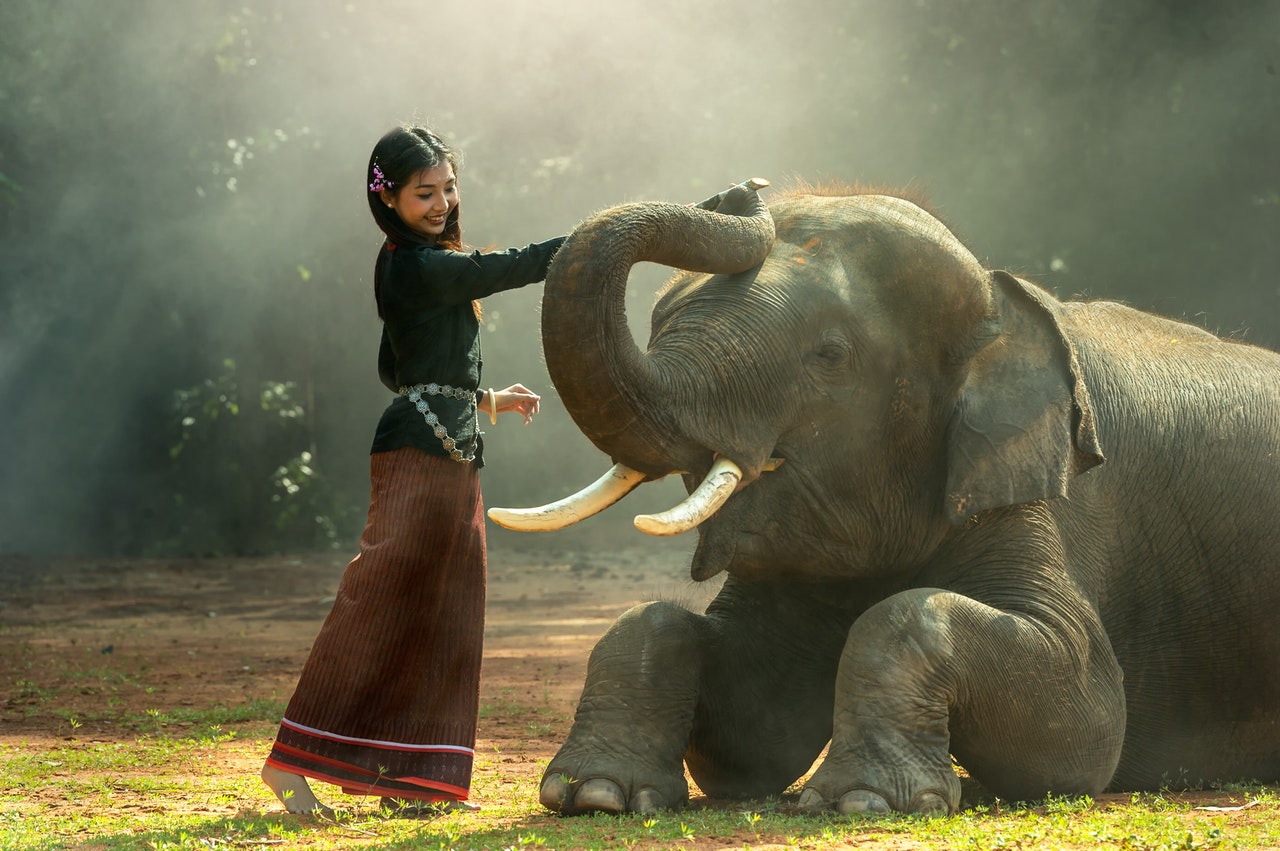
I’m one of those weirdos who believes there’s no such thing as a mundane story, just a mundane way of telling it. This is why it’s crucial to edit yourself and get edited by professional readers .
Without editing, you’re likely to prattle on and on about every event during your journey. And not just you— we’re all prone to rambling. This why we need editing.
When editing yourself, always keep the theme in mind. This will help you include the stories that support your theme and cut the stories that are nice, but ill-fitting. You must be a slave to theme. It’s that important.
Don’t try to tell the entire story blow by blow. Instead, piece together the story that fits in with your overall theme.
Don’t Make Yourself Look Too Good
Sometimes you’re going to sound like a jerk. You’re human. Your reader is human and they’ll understand. In fact, embracing your raw stupidity is what will make you endearing to the reader. It will also make your experience real and relatable which is the entire point of reading a travel memoir. Readers like to travel with you on your emotional journey, and hopefully observe your growth.
Unfortunately, self-preservation dictates that we try to look good at all times. Avoid that urge when writing your travel memoir. Or, at least, edit it out.
You must be willing to look foolish if this is ever going to work. When traveling to different places you’ve never been before, the reader won’t expect you to be completely prepared and perfect. You’re going to mess up. You’re going to offend people. You’re going to hate some of the food. You’re going to pack your preconceived stereotypes right next to your socks and undies. But you’re also going to connect with the reader because your honesty will be relatable.
Have an open mind when you hit the open road.
The story may not go as you’ve anticipated. You’ll be surprised and changed in ways that you never expected but that’s the gift of travel. To document how you’ve changed for the better, you’ve got to show the cringe-worthy before .
Titles Are Crucial
For a travel memoir, especially if you’re an unknown author, so much of your initial success will depend on a clear, catchy, or promising title. While I may not judge a book by it’s cover, I always judge a book by its title, and I suspect I’m not the only one.
J. Maarten Troost’s The Sex Lives of Cannibals wins my award for “Best Travel Memoir Title”. I purchased the book without even reading the first page just because it had a killer title (no pun intended).
That title was catchy, but your title need not be clever to be effective. Cheryl Strayed’s one word title, Wild, sets you up for the type of journey you’re about to take.
Then there’s the promising title, I'll Never Be French (no matter what I do) by Mark Greenside. The reader knows going in that the book will be about France and some rather misfortunate experiences.
Whether you choose a title that’s descriptive or intriguing, at the very least, make it memorable. It should be a title that your reader will remember when they’re recommending your memoir to friends.
Additional Resources
Before you go, check out these related posts:
- How to Find Your Writer's Voice
- Don't Make These 7 Mistakes When Penning Your Memoir
- How to Write a Memoir That People Care About
Enter your email for your FREE 7-Day Bootcamp and learn:
- 5 Unconventional Techniques to help you finish your Draft
- The Key to Getting Readers to Care About Your Characters
- How to Master Dialogue, even if you’re a First-Time Writer
- What You Need to Know to Hold Your Reader’s Interest
We've sent you an e-mail, thanks for subscribing!
Writing from Near and Far
Transform Your Travels Into Meaningful Memoir
10 Best Travel Memoirs
Here’s a list of the best travel memoirs. They all happen to be written by women.
1. The House on Dream Street: Memoir of an American Woman in Vietnam
I remember picking up The House on Dream Street at a bookstore in Washington DC when I was 24, in my first year of graduate school at West Virginia University. My best friend drove down to meet me and then we drove to DC together. At this point in our trip we were annoyed with each other. I forget why. I needed a book to lift my spirits, and hoped this one was worth the 16 dollars it cost—not a small sum of money back then on my graduate teaching stipend.
And it was wonderfully worth it. The memoir had everything: descriptions of the new and strange about Hanoi, Sach’s utter frustrations and small triumphs, her attraction to and impossibly falling in love with a Vietnamese man, and her ultimate decision. Would she stay in the life she loved and most likely remain single, or go back to the US and find a partner? I still remember the vicarious feeling of being torn between these two options. And I thought about The House on Dream Street again as I wrote my own travel memoir. I aimed to give readers the same experience from my own story set in Abu Dhabi and Dubai.
2. Grammar Lessons: Translating a Life in Spain
Michele morano.
Told through a series of thirteen essays, Morano lovingly describes her year teaching English in Oviedo, Spain. Through innovative essay techniques and structures, we learn about the intense friendships she forms, her long distance relationship with a man back in the US, and what it means to her to be part of her new friends’ lives, if only for a short while. She reveals the way in which living abroad gives us new perspective on our lives at ‘home’, and gives us the chance to try on new identities. One of her essays, The Queimada, reminded me strongly of my own feelings when I spent a semester abroad studying in Bath, England:
Now, as I settle into the fullness, I think it is for this that I travel, for this that I sold all my belongings and took off for a place I didn’t know. These moments, walking through a park eating chestnuts, sitting at this table where by now no one is speaking, are why I have liked myself in Spain more than I have ever liked myself before. I am less encumbered here, more receptive to experience. And more appreciative of the texture of daily life.
3. The Woman Who Fell From the Sky: An American Woman’s Adventures in the Oldest City on Earth
Jennifer steil.
I was attracted to this book because it is about Yemen, set in the city of Sana’a. I devoured the story because the narrator’s voice is so engaging and relatable. I was surprised by how similar Yemeni culture is to Emirati culture, even though the Emirates were blessed with more oil wealth and rulers who were keen to share it among the locals. Much of her descriptions of her female employees resonated with my experiences as a university lecturer for many local students.
Steil decides to take up a chief editor position at the Yemen Observer, and describes her triumphs and frustrations working within a culture that does not cherish critical thinking, objectivity, or respect female workers. She has an uphill battle, and fights it with humility, grace and an inexhaustible level of persistence. Yet even despite or perhaps because of all of these obstacles, Steil’s love for Sana’a is present throughout.
4. Without Reservations: The Travels of an Independent Woman
Alice steinbach.
One summer day in Boston, before I left for my grand adventure to live and work in London, I sat in the grass on the Boston Commons reading ‘Without Reservations.’ My mom had just finished it, and firmly pressed her copy into my hands.
Even though I was 21 when I read this book, and Steinbach began her travels as an older woman, I instantly admired her writing and her story. Everywhere she went, Steinbach seemed to meet incredible new friends almost immediately. Recently divorced, she even found a Japanese boyfriend to visit her around the world.
As I sat there on the grass overlooking Beacon Hill, I wondered why I didn’t meet more people, as Steinbach did. Here I was in my ‘home’ city, and I was all out of friends. Everyone I knew was away for Memorial Day, and I was all alone, wandering, reading in parks. What was wrong with me?
Just then, a young man came up to me. He apologized, but said that he had noticed me sitting there alone, and, well, could he talk to me? Normally, I would have made a polite excuse and walked away, but under the influence of Without Reservations, I said sure.
What followed was not a story out of Steinbach’s book. We did not go on to become great friends and / or lovers. He was simply one of those men who saw a woman alone and felt it was his duty to intervene. He told me how great it was to meet me and how he had watched me sadly reading by myself. He wanted to exchange numbers and stay in touch always. I told him I was expected somewhere. Still, he wanted to walk me to wherever I was going. I told him no. He said, ‘Oh, I see. You’re worried someone will see us together and tell your boyfriend.” I nodded. Yes, of course, that was it.
I didn’t learn the art of meeting new friends from Without Reservations, but I did start to think about myself as an independent traveler, and all that entailed, like standing up for myself, and telling men who bother me while I’m reading by myself to get lost.
5. The Men in My Country
Marilyn abildskov.
This is a beautiful book lovingly and carefully narrated by a young American woman who moves to Matsumoto, Japan. In a series of essays, we learn the pull of this city, the sensory details that drawn her in, and the relationships that inspire her to stay, and eventually leave. After her initial attraction to the new and unfamiliar details of the city, she longs to go deeper, and manages to form messy, thrilling, chaotic romantic relationships. Abildskov also writes about what it means to go back and forth between the two worlds of America and Japan, the ways we try to have the best of both worlds, but never can.
I use excerpts from this book often when teaching travel memoir writing. My students are uniformly blown away by Abildskov’s writing, her gorgeous, detailed images and careful reflections. A student of travel memoir could learn a lot from this book.
6. Honeymoon in Purdah: An Iranian Journey
Alison wearing.
I read this book before I moved to Abu Dhabi, and it reinforced my wish to not simply believe stereotypes and or listen to inexperienced opinions about an entire region and people. Wearing goes to Iran with a male friend under the guise of a honeymoon trip. She discovers what you would expect her to: that there is more to the lives of Iranians than Islamic fundamentalism. Her journey and storytelling reveal another important aspect of travel memoir: to not just discover or heal the self, but encounter and represent the other with fairness and compassion.
7. Single White Female in Hanoi
Carolyn shine.
Australian writer Shine deftly tells the stories of her attraction to and frustrations with life in Hanoi. She teaches English, and performs in a band, has an affair with a local driver, and tries desperately to help a homeless woman. She is charismatic and passionate, a fine writer. This book is full of perfectly timed, often short vignettes of her experiences with students, expat friends and locals. But mainly, she writes about the tiny neighborhood where she lives, the comings and goings of her landlords and their family, and the random visitors she often receives.
Shine’s story reveals the darker side of living abroad. She doesn’t fall in love with this place. She is frustrated by the injustices and inefficiencies she witnesses. The other expats she meet seem similarly ‘stuck’. Shine shows us that the experience doesn’t have to be perfect in order to discover something new, to change, or to write beautifully about it.
8. Wild : From Lost to Found on the Pacific Crest Trail Cheryl Strayed
Strayed is not an expat in this book, but she does go on an extended journey that changes her forever. She hikes the Pacific Coast Trail on the west coast of the United States. Her goal—to hike more than one thousand miles from the Mojave Desert to Portland, Oregon—seems insurmountable, her preparations totally inadequate, her backstory as fascinating as it seems debilitating. Yet she persists. Strayed reads poetry by night, desolate and alone, and forges strong connections with fellow hikers along the way. We learn about her mother’s young death, Strayed’s marriage and its dissolution, her dabbling with drug use and casual relationships. She presents her contradictions—an intellectual, deep reader and thinker, a fickle party girl who charms all the boys. She is all of those things. On her months-long hike, she reveals and contends with all these parts of herself. By the end of the journey we know that her life will never be the same.
9. Beyond the Sky and the Earth: A Journey into Bhutan Jamie Zeppa
Written in present tense, this is a beautiful book by a Canadian author who truly does fall in love with a place. In this case, that place is Bhutan. Zeppa leaves behind a relationship in Canada to take up a teaching position at an elementary school in Bhutan. In the second half of the book, she moves on to teach at a university, where she falls in love with one of her students. Their union is presented with such beautiful inevitability. She reveals once again the way that travel changes you, the way that wanting to be part of the country so much causes you to fall in love.

10. The Year of Living Danishly: Uncovering the Secrets of the World’s Happiest Country Helen Russell
In the grand tradition of year-of memoirs, Russell sets herself the project of ‘Living Danishly’. That is, being happier by doing as the so-called happiest people in the world do. Throughout each month of her year-long stay, Russell focuses on one or several of the related hypotheses as to why Danes are so happy: their strong sense of social belonging, their easy access to art and culture, subsidised childcare and schooling, free healthcare, and more abstractly, the ordered routine of Danish living and creating a feeling of hygge at home, a sense of warmth and comfort. Russell goes after her worthy project with zeal, weaving in numerous studies to support her findings, and interviewing as many experts as she can find. Plus, she provides her entertaining personal story as well.
Share this:
- Click to share on Twitter (Opens in new window)
- Click to share on Facebook (Opens in new window)
- Click to email a link to a friend (Opens in new window)
Leave a Reply Cancel reply
Your email address will not be published. Required fields are marked *
Notify me of follow-up comments by email.
Notify me of new posts by email.
Matador Original Series
The best travel memoirs to read while you're stuck inside.
S o the only view you have right now is the one outside your bedroom window. It’s easy to feel cramped, your longing for travel stifled by your equally strong urge to protect public health. There is a way to travel while you’re stuck indoors though. All you need is the right book. These travel memoirs, part personal journey, part travelogue to new and uncharted territories, will lead your imagination on wild adventures to places far beyond the confines of your couch. Dog sled across the arctic tundra with Blair Braverman in Welcome to the Goddamn Ice Cube , explore France’s culinary treasures with Julia Child by your side in My Life in France , or bicycle across continents with Dervla Murphy in Full Tilt . If you’re feeling claustrophobic escape into these stories which offer a much needed change in scenery.
1. In Patagonia by Bruce Chatwin

Photo: Penguin Random House
Bruce Chatwin’s memoir of his travels through Patagonia — a rural region shared by southern Chile and Argentina — is a love letter to a wild country. He imbues strange and unfamiliar lands with a thrilling electricity. Chatwin tracks down the places where Welsh immigrants once settled and bandits roamed, his passion for adventure and history propelling his journey forward. Among the many characters Chatwin encounters are an unlikley incarnation of Butch Cassidy, a guacho posse, and a touring piano player. Credited with infusing the travel writing genre with renewed energy, as well as interest in Patagonia as a travel destination, one might feel compelled to follow in his footsteps, backpack in hand, before even turning the last page of the book.
2. My Life in France by Julia Child

In 1948, Julia Child moved to France with her husband Paul, an officer at the US Information Service at the US Embassy. She knew nothing about French cuisine — not even how to make beurre blanc . Not one to sit around feeling useless, Child enrolled at the Cordon Bleu and discovered a remarkable talent for cooking. Today, we know her as the woman who introduced French cuisine to American housewives, but this memoir tracks her beginnings. Child’s travels through France as she discovers the recipes and ingredients that would become the second greatest love of her life (Paul being the first) is a lively, vibrant tour of the Parisian palate. But it’s Child herself who makes this book sparkle: Gregarious and warm, but full of barbed opinions, she is a refreshingly honest and friendly narrator you will wish you could have dinner with the moment you close the book.
3. Welcome to the Goddamn Ice Cube by Blair Braverman
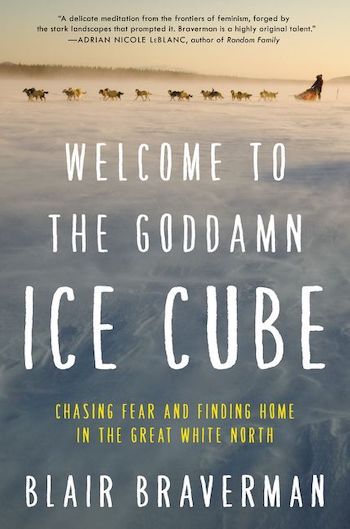
Photo: Harper Collins
At just 19, Blair Braverman left her home in California and moved to Norway to learn how to drive sled dogs. Quite the extreme career move. Arctic life suits Braverman, and eventually, she lands in Alaska, where she becomes a tour guide, before settling in Wisconsin with her partner (dogs in tow of course). Traversing the icy tundra with her pack of dogs at the helm is dangerous and exhausting (she finds herself stuck in caves and blizzards), but Braverman is a fearless adventurer, carving out a place for herself in a profession dominated by men. Interspersed with action-movie-esque sequences, Braverman’s memoir takes readers on a tour of a perilous yet utterly intriguing landscape.
4. Travels with Charley by John Steinbeck

Considered a classic of the genre, this memoir follows Steinbeck on a 1960 road trip across the US, accompanied by his standard poodle, Charley. Steinbeck said that after devoting his writing career to the landscape and outlook of the American people, he wanted to see the country for himself, but his son Thom claims that he actually took the trip as a sort of last hurrah, as he knew his heart was failing. Steinbeck visits Long Island, the Pacific Northwest, the Badlands of North Dakota, Maine, and the Salinas Valley in California — his birthplace — on his quest to find out “What are Americans like today.” But Steinbeck was a novelist by trade, a predilection that may have influenced his so-called memoir. Recent scholarly work has pointed out that Steinbeck may have fabricated some of the conversations in the book, and new editions contain a note warning readers that it would be a “mistake to take this travelogue too literally.”
5. The Voices of Marrakesh by Elias Canetti
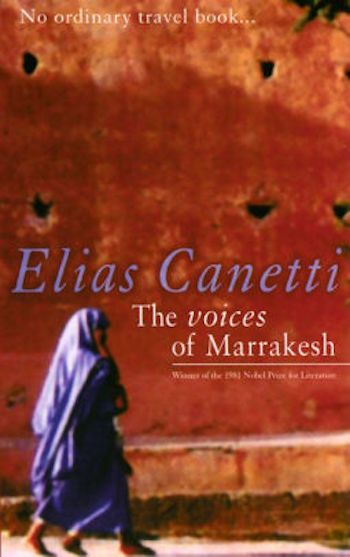
Photo: Barnes and Noble
Nobel-prize winning author Elias Canetti is best known for his memoirs of childhood in pre-Nazi Vienna, but he also wrote a slim volume recording a weeks-long visit to Marrakesh in the 1950s. This vibrant recollection of his time in Marrakech is a series of snapshots: He encounters camels, buys bread, drinks at French bars — small moments that add up to an intimate, loving portrait of a city full of character. This mosaic narrative brings together the city’s Arab, European, and Jewish residents, all of whom Canetti treats with dignity and compassion. His account is full of sensory details too — how the city smells, how it’s organized, and the way its people move and congregate — resulting in a memorable (though perhaps slightly outdated) portrait of the city.
6. The Colossus of Maroussi by Henry Miller
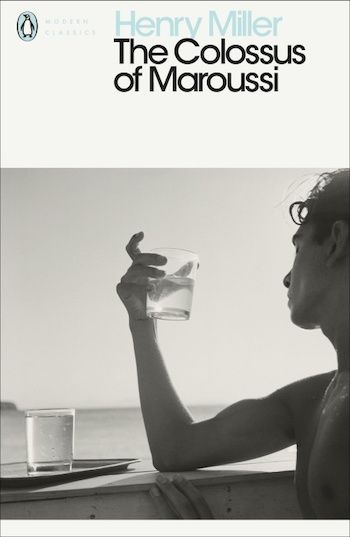
In 1939, Henry Miller traveled to Greece with his friend Lawrence Durrell, a naturalist, to escape the looming Nazi occupation. Miller intended to seek out poet George Katsimbalis, the “colossus” of the book’s title. On its surface, this book pretends to be a portrait of Katsimbalis (who Miller does meet) but it’s also a travelogue. The author hops between Athens, Crete, Corfu, Poros, Hydra, and Delphi in the nine months he spent in Greece, before moving to the United States at the outbreak of World War II. Miller felt something beyond love for Greece — the place where he became “free and whole.” Poor, but full of the spirit of an adventurer, Miller sunbathes naked on a beach, visits a village with just one stove for all its residents, and marvels at the country where he wrote “God’s magic is still at work.”
7. Epic Continent by Nicholas Jubber

Photo: Nicholas Brealey Publishing
There are stories that stick with us now, and then there are stories that have stuck with humanity for centuries. We learn about them in school and we study them in college — think titles like The Odyssey , Beowulf , and The Song of Roland . Nicholas Jubber, an award-winning travel writer and author, visited the real-world locations of these and other classics (at least as close to the original location as can be determined) to see how those stories hold up today. He meets activists who tell him about how the Nibelungenlied shaped Nazi, and later neo-Nazi, rhetoric in Germany, and how The Song of Roland has influenced the way people perceive honor across northern Europe. In the Balkans, he sees the lasting impact — both positive and negative — of the lessons behind the Kosovo Cycle . Everywhere he goes, he learns a little more about himself, the stories we tell ourselves, and how stories are used to build a national cultural identity. — Nickolaus Hines
8. Last Chance to See by Douglas Adams
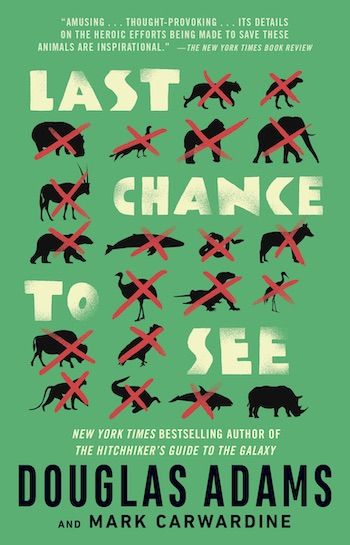
Douglas Adams’ quirkiness and humor is legendary, but pair it with a side of travel and you’ve got one of most joyful, fulfilling, and touching adventure memoirs out there. In Last Chance to See , Adams joins his friend, zoologist Mark Carwardine, on a trip around the world to see the last specimens of some of the most amazing and most endangered creatures on the planet, and learn what is being done to save them. Together, they travel to China to see river dolphins; to Indonesia to observe Komodo dragons; to New Zealand to see a vibrantly colored and flightless parrot; and more. Last Chance to See is hilarious, heartbreaking at times, and decidedly uplifting, and if there’s one thing we could all use right now, it’s wit, fun, escapism, and adorable animals. Note that if you can’t procure yourself the 1990 book at this time, there is an excellent 20th-anniversary version of the expedition available on Netflix featuring Mark Carwardine and Stephen Fry, which is also a great mood lifter.
9. The Consolations of the Forest by Sylvain Tesson
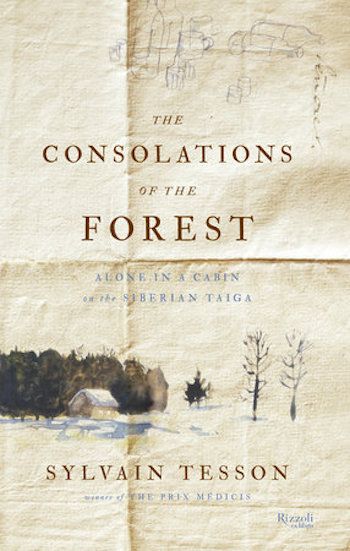
Photo: Rizzoli
Sylvain Tesson is a hardcore adventurer. He’s gone just about everywhere and roughed it every time. At 21, in 1993, he biked around the world with his best friend Alexandre Poussin; In 1997, he and his same friend crossed the Himalayas on foot; in 2001, he traveled around Central Asia on horseback; in 2003 and 2004, he walked from Siberia to Calcutta, India; and more. But he is no Bear Grylls — he’s not out there to prove his manliness or his ability to survive in the most extreme conditions. Instead, he travels to feel and learn the things he knows he can’t access by staying home in Paris. His most popular expedition, his living in an extremely remote cabin in Siberia for six months, is not a story of wandering adventures and significant encounters, but one of the beauty of isolation in nature in a world where solitude and wilderness are harder and harder to come by. The short novel that recounts this trip, Consolations of the Forest , is filled with sadness and fear, but it’s also punctuated by moments of intense, simple happiness. A reflection on the power of nature and self-contemplation, Consolations of the Forest is the travel memoir that will highlight the positive aspects of this time of isolation, but will also make you crave for the great outdoors for when the time that we can all get out there again comes.
10. Full Tilt: Ireland to India with a Bicycle by Dervla Murphy
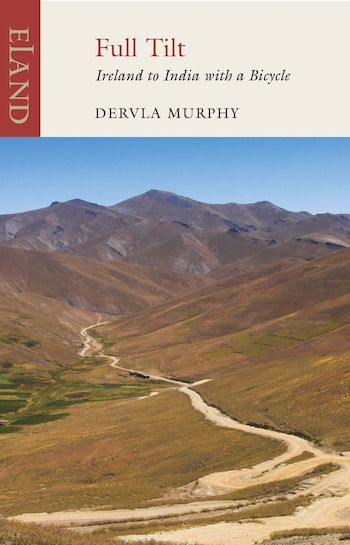
Photo: Eland Books
More like this
Trending now, the 25 dreamiest airbnbs in italy, everything you need to know about going wild camping — legally, the 10 best nudist resorts around the world, 21 zion national park cabins to make your desert dreams come true, this road trip expert’s free map of 429 national park sites will vastly improve your us travels, discover matador, adventure travel, train travel, national parks, beaches and islands, ski and snow.
We use cookies for analytics tracking and advertising from our partners.
For more information read our privacy policy .
Matador's Newsletter
Subscribe for exclusive city guides, travel videos, trip giveaways and more!
You've been signed up!
Follow us on social media.

Writing a Travel Memoir: How to Capture Unforgettable Moments
Home » Blog » Writing a Travel Memoir: How to Capture Unforgettable Moments
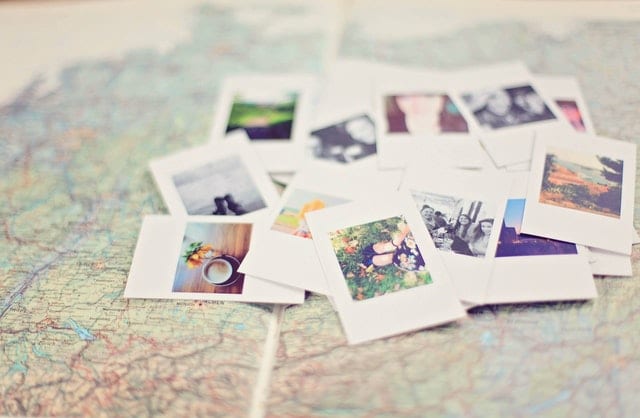
WRITING A TRAVEL MEMOIR: HOW TO CAPTURE UNFORGETTABLE MOMENTS
Traveling is one of the most memorable occasions in a person’s life. Discovering new places can create memories that last a lifetime. And for some travelers, these adventures are so meaningful that they decide to chronicle them in a journal or diary.
Written descriptions of places and experiences can provide the perfect complement to breathtaking photographs. And in some instances, journals and diaries can become the source of a great travel memoir .
In this article, we will discuss the elements that comprise a compelling travel memoir and the importance of chronicling timeless moments in a person’s life. As T.S. Eliot once said, “The journey, not the arrival matters.”
Travel Memoirs 101
When dissecting a travel memoir, it is best to start with what is not a travel memoir. On the whole, a travel memoir does not constitute a guidebook or generic description of a destination. Moreover, a travel memoir is not merely a collection of random anecdotes pertaining to a trip.
A travel memoir is so much more than a collection of experiences and descriptions of unique places. A travel memoir encompasses a personal journey that culminates in a singular location. According to Writer’s Digest , a travel memoir is “… a delicate mixture of recollection and reflection that reveals how a journey, or a series of journeys, transformed the writer.”
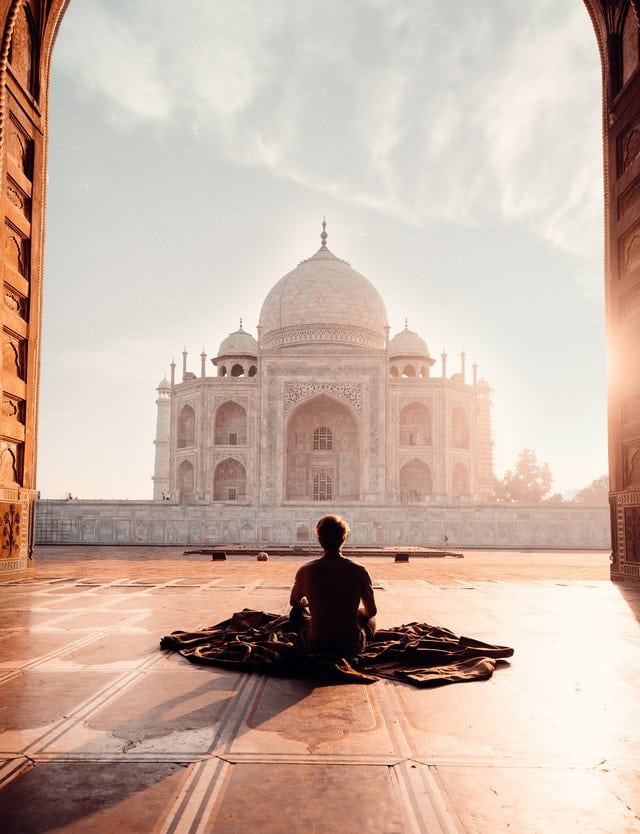
This succinct description underscores the transformative nature of a travel memoir. Therefore, the memoir must highlight a “before” and “after” in the author’s life.
On the surface, a travel memoir should reflect the beauty of its unique location.
Deep down, it should reflect the author’s personal interaction with that singular destination.
As a result, this interaction leads to a metamorphosis within the writer. The memoir should record how an exterior change leads to an interior one. It should narrate how the author’s transformation took place because of the journey.
Also, a travel memoir is not a blow-by-blow account of a trip. A wonderful travel memoir should not waste precious space on inconsequential details and events. Instead, it should focus on the specific moments that led to the author’s awakening. Hence, the trip itself ought not to be the memoir’s main focus. Instead, the author’s experience, feelings, and thoughts should permeate the story.
A great travel memoir must deliver an enthralling story. The story needs to begin with the author’s life prior to the journey. Readers need to know what motivated the author to embark on the journey. From there, the story must take the readers through the entire process of self-discovery.
The climax of the story must highlight that special moment of awakening. Readers must be privy to that intimate moment in which the author reaches their ultimate transformation.
At the core of an indelible travel memoir is the overarching theme. This theme must clearly reflect what aspect of the writer’s life changed forever.
For instance, the author got over a past love or gained a new lease on life following a tragic loss. Whatever the theme, the memoir’s narrative must unmistakably reflect it.
In the words of Saint Augustine, “The World is a book. And those who do not travel read only one page.” A travel memoir brings those pages to the reader. It enables the writer and reader to come face-to-face with one another while being miles apart.
Making the Decision to Write a Travel Memoir
Choosing to write a travel memoir is a deeply personal decision. Any individual who chooses to write a travel memoir must be willing to bare their soul for readers to see. The intensely personal nature of a travel memoir must communicate a profoundly life-altering message.
A gripping travel memoir must reflect a profound journey of personal growth. The travel experience is solely the vehicle enabling the personal transformation to take place.
Journalist and published author Alexis Grant has this to say about a travel memoir’s message: “Your memoir should be about more than your trip; you need an overarching theme that readers relate to, a story arc that includes personal growth.”
Indeed, a travel memoir must connect with readers at an intense level. This connection can only happen when a travel memoir explicitly lays out the writer’s transformation.
For some authors, penning a travel memoir is a cathartic process. It enables them to vent their emotions creatively.

The outcome is to reflect the author’s process from pain and suffering to healing. In such cases, writers must be willing to be honest with their readers. Readers will swiftly smell out embellishment or exaggeration.
A compelling memoir, travel or otherwise, must depict the writer’s moments of weakness. Doing so will provide enough support to the overall outcome.
Not all travel memoirs have to be about the transition from pain to healing. A great travel memoir can serve to help others achieve their dreams.
A classic example is Julia Child’s My Life in France . This book depicts Julia Child’s time and experiences in France. In particular, the story chronicles the beginnings of her extraordinary culinary exploits.
To Julia, France was a spiritual homeland. It was the site where her personal transformation began into one of the world’s most renowned chefs. It is safe to say that Julia Child would not have become the celebrity she did if she had never been to France. Thanks to this transformational journey, Julia Child found her true calling in life. As such, her memoir shows readers just how meaningful her time in France was to her.
The decision to write a travel memoir ultimately boils down to a genuine desire to help others undergo a similar journey. The destination itself is not the main purpose. The journey of self-discovery and transformation is the key element. The destination serves as the backdrop for the journey.
While the destination is certainly meaningful, the writer’s awakening to a new reality makes the entire journey a life-changing one. This message needs to resonate throughout the text. If successful, readers will walk away inspired to pursue their own dreams.
Structure of a Travel Memoir
Authors must be careful not to confuse a travel memoir with a chronological description of events. While a timeline format is useful in developing the story, a compelling travel memoir is a story. Therefore, the narrative must reflect this characteristic. This approach explains why chronological order is not necessarily a requisite structure.

First and foremost, a travel memoir is a tale. Thus, it should sound like a work of fiction, even though it is not.
In this regard, a memorable travel memoir uses the writer’s message—their transformation—as the core element around which all other events revolve. Consequently, places and events should serve to frame the story. However, the book should not be about the place itself.
The story’s overall narrative should take readers through the author’s entire transformative process. This process must reflect the motivations for the trip. Ultimately, the destination is secondary insofar as the author’s inner metamorphosis. Throughout the metamorphosis, the memoir’s theme must become evident. The theme sets the stage for the specific events that will accentuate the protagonist’s singular journey.
The most important decision travel memoir writers must then make is selecting the theme. The theme ought to emerge from a motivation within the writer that led to the trip itself. For example, a writer fed up with the corporate world chooses to leave a six-figure job to embark on a volunteer work tour. By the end of the tour, the writer discovers that the meaning of life helping others and not making money. This discovery could not have been possible without the trip.
The characters in the story must also directly contribute to the author’s transformation. The decision to include characters depends largely on their role. As such, great characters provide some support along the writer’s trek. For instance, they may provide eye-opening advice or meaningful encouragement.
Additionally, specific characters may serve as the catalyst for the author’s decisions. A classic example is the end of a romantic relationship. Thus, the writer’s romantic partner catalyzes the transformative process. It is worth noting that no other character should overshadow the author, regardless of their role’s importance. The author is the main character. Hence, all events need to revolve around the writer.
As for narrative style, travel memoirs need to resonate to a deeply personal degree. Therefore, a first-person narrative style would be most suitable. This narrative style gives readers the impression they are hearing the author’s voice. After all, this is the author’s journey. Thus, readers expect to hear the author’s words as they would have spoken them.
This idea underscores the importance of keeping the narrative style as close to the writer’s own words as possible. Fancy prose may help the story come alive, but it may not be a true reflection of the author’s personality. Please bear in mind that this is an individual process. Furthermore, the narrative must make the reader feel as if they were sitting right next to the writer, listening to their story.
Mistakes to Avoid when Writing a Travel Memoir
Penning a travel memoir can be a perfectly imperfect endeavor. For first-time authors, it may prove to be a complex exercise. For experienced writers, the process may be simpler to manage. Nevertheless, producing a travel memoir requires close attention to specific pitfalls. By avoiding these pitfalls, writers can reduce the likelihood of failing to meet their goals.
When an individual first thinks of writing a travel memoir, it helps to plan.
Ideally, anyone thinking about producing a travel memoir should keep a diary of the trip itself. Diaries help keep track of events, and most importantly, personal reflections throughout the trip. Without a diary, writing the memoir would rely on memory.

Often, this practice may lead the writer to omit valuable details from the story. Mainly, the aim of a diary is to capture feelings as they occur. The power of these feelings may be lost when writing after the fact.
Also, writers must strive to focus on themselves as the main character. After all, a travel memoir is about the author’s own life and experiences. Therefore, focusing on other individuals takes away from the purpose of the memoir. Consequently, attempting to tell someone else’s story may shift the readers’ attention from the author to someone else. Ultimately, shifting focus away from the author defeats the story’s purpose.
A common mistake is trying to force the narrative. By “forcing” the narrative, writers may try to recreate a surreal environment using overly creative prose. In reality, authors should try to maintain a narrative consistent with their personality. The aim is to take readers inside the author’s soul. As such, the narrative should reflect this reality as faithfully as possible.
A great rule of thumb is to be humble at all times. Attempting to embellish a travel memoir may lead readers to question the veracity of the accounts in the story.
Lastly, writers must be careful with including intimate details. While the aim is to provide readers with an insider account of the journey, there are boundaries to consider. Mainly, intimate details should be off-limits unless they somehow contribute to the story’s development.
Inexperienced writers would do well to seek assistance once completing a rough draft. Enlisting the help of an editor goes a long way to polishing up a final draft. In doing so, potential book agents and publishers will get a look at a neat product before making a decision.
A travel memoir is a deeply personal endeavor aiming to depict a profound transformation.
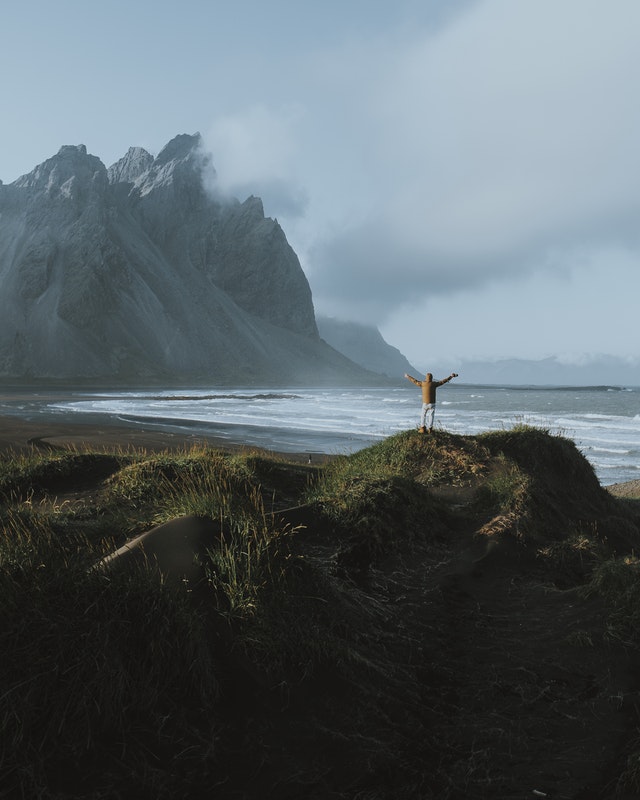
Writers seeking to produce a travel memoir should strive to recreate their journey as faithfully as possible. And they should adhere to the story as closely as they can.
In doing so, readers can get a sense of what the author went through. Ultimately, readers should be privy to the struggles and triumphs represented in the story.
The narrative ought to reflect the writer’s own voice.
Attempting to embellish a story with ornate prose may cause the reader to question the accuracy of the accounts in the story. Consequently, keeping a humble attitude is always the best approach.
This approach should enable the story’s theme to resonate throughout the journey. As the theme becomes evident, the book’s underlying message will strike a chord in the readers. A successful memoir will transport the reader into the author’s life. A great narrative will leave readers feeling a deep connection, perhaps motivating them to seek their transformation.
Related Content

Leave a Reply Cancel reply
Your email address will not be published. Required fields are marked *
Subscribe to Newsletter
- Website QA: A Worksheet for Nixing the Glitches
- The Paid Content Playbook: Understanding Distribution Methods
- Reading SOPs Should Not Be a Cure for Insomnia
- 15 Strategies for Working With SMEs When Creating SOPs
- Getting It Right: A Content Marketing Writer’s Guide to Navigating Copyright, Fair Use, and Public Domain
- Copywriting & PR
- Editing & Proofreading
- Writer's Resources
- Training & HR Material
- Ghostwriting & Books
- Social Content
- Web Content
- Corporate & Stakeholder Communications
- Technical Writing
- Medical Copy
- O&G Copy
- Thought Leadership Content
- RFPs & Proposals
- Speeches & Presentations
- Watercooler
Anne R. Allen's Blog... with Ruth Harris
Writing about writing. Mostly.
January 22, 2012 By Anne R. Allen 71 Comments
How to Write a Publishable Memoir: 12 Do’s and Don’ts

by Anne R. Allen
They say we all have a book inside us—our own life story. The urge to put that story on paper is the most common reason people start writing. Adult education programs and senior centers everywhere offer courses in “writing your own life.” Memoir is the most popular genre at any writers conference.
Unfortunately, it’s the hardest to write well—and the least likely to be published.
Agent Kristin Nelson once blogged that she’s seen so many bad memoirs that she cringes when she meets a memoirist a writer’s conference. Author J. A. Konrath offered the simple advice: “Unless you’re one of the Rolling Stones, don’t write anything autobiographical.” Miss Snark pronounced, “every editor and agent I know HATES memoir pitches…I’d rather shave the cat.”
But memoirs like Eat, Pray, Love, In the Garden of Beasts and Townie: a Memoir , top the bestseller lists.
In this age of “reality” TV, there’s a huge audience for shared real-life experience. Readers are hungry for true stories: look how angrily they reacted to writers like James Frey and Herman Rosenblat, who passed off fiction as memoir.
So keep working on that masterpiece-in-progress. But hone your craft—brilliant wordsmithing and/or stand-up-worthy comedy skills help a bunch—and follow some basic dos and don’ts:
1) DO read other memoirs
Before you put pen to paper, it’s a good idea to read some currently selling memoirs. See what works and what doesn’t. Know the genre and the market
2) DON’T write an autobiography
An autobiography is a list of events: “I was born in (year) in (place) and I did (this) and (that.) Mr. Konrath is right—unless you’re Mick Jagger, nobody cares. (Except your family. Don’t let me discourage you from self-publishing a chronicle of your life as a gift to your descendants.)
3) DO tell a page-turning story
Abook-length memoir is read and marketed as a novel. It needs a novel’s narrative drive. That means tension and conflict—and ONE main story arc to drive the action. Most memoirs fail from lack of focus. Choose a basic storyline, like: “Orphan kids save the family farm during the Depression,” or “A cross-dressing teen survives high school in the 1950s.”
4) DON’T confuse memoir with psychotherapy
Writing a book about a traumatic personal event may be cathartic for the writer, but there’s a reason shrinks charge big bucks to listen to people’s problems. Put the raw material in a journal to mine later for fiction, poetry, and personal essays.
5) DO remember that a memoirist, like a novelist, is essentially an entertainer .
A memoir may be nonfiction, but it requires a creative writer’s skill set. Always keep your reader in mind. Never fabricate, but only tell what’s unique, exciting and relevant to your premise.
6) DON’T expect a big audience for medical journaling
If you or a loved one has a serious disease, chronicling your experiences can be invaluable to those suffering similar trials. To the general public—not so much. You may find it’s best to reach your audience through online forums, blogs, and magazines. (See #6) Remember that publishing is a business, and no matter how sad your story, if it’s not an enjoyable read, it won’t find an audience.
7) DO consider non-book formats to tell your story.
Beginning writers often make the mistake of jumping into a book-length opus. It’s smarter and easier to start with short pieces—what a writer friend calls “memoiric essays.” Nostalgia and senior-oriented magazines and blogs are great venues for tales of life in the old days. Some niche journals and websites focusing on hobbies, pets, disablities, veterans, etc. even provide a paying market. These will also give you some great publishing credits, and you won’t have to slog for years before reaching an audience.
This is one area where BLOGGING can provide you with a fantastic forum. A new blog I love is by Tony Piazza , a veteran of the film business—and mystery author—who has insightful stories about every Hollywood star you ever heard of.
8) DON’T include every detail
Including every little incident and every character because “it’s what really happened” doesn’t make good storytelling. Just because something is true doesn’t mean it’s interesting. Your happy memories of that idyllic Sunday school picnic in vanished small-town America will leave your reader comatose unless the church caught fire, you lost your virginity, and/or somebody stole the parson’s pants.
9) DO limit the story to an area where your experience is significant and unique .
If you gave birth in the mud at Woodstock, dated Elvis, or helped decipher the Enigma code, make that the focus of your book. I knew a musician who worked with of some of the great legends of American music. His memoir of those jazzy days was gripping, but because it was buried in his “happy ever after” life story, he never found a publisher.
10) DON’T jump into the publishing process.
First hone your skills as a creative writer. Unless you’re only writing for your grandchildren (nothing wrong with that—but be clear in your intentions) you need to become an acomplished writer before you can expect non-family members to read you work. Even the most skilled editor can’t turn a series of reminiscences into a cohesive narrative.
NOTE: There are ghostwriters who specialize in memoirs, so if you want to get your story into book form and aren’t interested in becoming a professional writer, you can hire one. Many editing services offer ghostwriting—a more expensive process than editing—but worth the cost if you don’t enjoy the writing process. I’d recommend using a memoir specialist like YourMemoir.co.uk ., which looks like an excellent service.
11) DO look at small and regional publishers.
A national publisher may not be interested in stories of the vanished ranch life of old California, but a local publisher who has outlets at tourist sites and historical landmarks may be actively looking for them. Another plus: you don’t need an agent to approach most regional publishers. A good example of a memoir that found a home at a regional press is Anne Schroeder’s Branches on the Conejo,Leaving the Soil after Five Generations (Another perk of being with a small regional press is that the book can still be in print after a decade.)
12) DON’T get discouraged.
Ann Carbine Best, an award-winning poet, knew she had a story to tell that would help thousands of women who shared her experience. Unfortunately, most publishers thought her subject matter was too niche and controversial to be a blockbuster. But with a small press, she found a welcoming audience for In the Mirror , her memoir of a doomed marriage.
If you’re working on a memoir, polish your creative writing skills, remember publishing is a business, keep your reader in mind–and you’ll avoid the cringe-making amateurishness that agents, editors and readers fear.
Share this:
Blog archives, search anne & ruth’s blog.
About Anne R. Allen
Anne writes funny mysteries and how-to-books for writers. She also writes poetry and short stories on occasion. Oh, yes, and she blogs. She's a contributor to Writer's Digest and the Novel and Short Story Writer's Market.
Her bestselling Camilla Randall Mystery RomCom Series features perennially down-on-her-luck former socialite Camilla Randall—who is a magnet for murder, mayhem and Mr. Wrong, but always solves the mystery in her quirky, but oh-so-polite way.
Anne lives on the Central Coast of California, near San Luis Obispo, the town Oprah called "The Happiest City in America."
January 22, 2012 at 5:59 pm
Whoo! Well done Cayla! I shall go and put this on her Facebook wall so she can find it, bahaha!
As for autobiography … I've often been told my Army Brat upbringing would make a good story, but I'm not so sure. There's enough army brats out there aren't there? besides, it's the hilarious misadventures that happen briefly in between the normality that would make mine different, and I have no idea how interested the reader would be. I shall stick to fiction, methinks 🙂
Awesome post though! 🙂
January 22, 2012 at 6:09 pm
These are some fantastic tips! Thank you!
I wish my life was interesting enough to write a memoir but I've not had anything extraordinary happen to me. I might write one for my children/grand-children/descendents though. I hope it inspires them enough to become writers also!
January 22, 2012 at 6:20 pm
Not something I would ever write (my life was rather average) but great tips for those who do.
July 6, 2021 at 7:50 am
You may think your life was average, but you never know what other’s think!
January 22, 2012 at 6:38 pm
Hi Anne! I wholeheartedly agree with all your advice. I've been writing my memoir (off and on!) for a LONG time. But I've learned so much and become a better writer over the past couple of years, so I do believe things are progressing as they should. I just sent a check to Ann Best for her memoir! Can't wait to read it!
January 22, 2012 at 6:41 pm
Anne, great, usable advice as always.
But there is one other approach, the one my DH used: have a horrible, traumatic, earth-shattering (literally) experience & then wait 50 years to tell it.
At a young soldier, Michael was sent to the Pacific Proving Ground to "observe" as the Army called it, the US H-bomb tests. He made notes at the time & over the years tried many times to tell the story but the events were so bizarre and horrific, he couldn't quite figure out how to write it.
Slow forward 50 years: he tried again & this time we managed to laugh just about all the way thru. The book is called THE ATOMIC TIMES (the name of the Eniwetok newspaper he edited) and has been praised by readers from Henry Kissinger to Robert Parker.
Lesson: some experiences need quite a long time to marinate!
January 22, 2012 at 7:22 pm
Charley–I sure find it easier to write fiction than the real stuff. I can't stop making things up, for one thing. 🙂
Kamille–A great memoirist can make "ordinary" things become extraordinary, but that's not a talent I have. Fiction works better for me, too.
Alex–You mean the CassaStar books aren't written from your personal experience in intergalactic travel? Well, I'm going to tell Oprah…
CS (aka Wordmonger)–How many people have quit their jobs to go live on a remote goat ranch for a year?
Ann–Excellent advice from somebody who knows how to do it right. Thanks.
Becky–You've got it exactly right. It takes a long time to write a professional-quality memoir.
Mark–Welcome! I'm so glad you found it helpful. Your book sounds intriguing.
Ruth–You're right. And I think Michael's experience isn't unique. I think a lot of people have to process a traumatic event for a long time before they can write about it.
January 22, 2012 at 9:10 pm
@Charley R – I think you could have a collection of shorts that's all those oddly bizzare moments, those would work great. Or stick to fictin. You're really good at that! *giggles*
AND OMG I won! *excited dance* (I actually saw the e-mail first so I got out most of my squeeling then. Hopefully not to the detriment of Catherine's ears/eyes.) Anyway before I babble too much(too late I know)…
yeah my life has been fairly bland, after all that's why I write fiction. I've been escaping the bland into my own fantastical worlds for quite some time.
January 22, 2012 at 11:00 pm
Phyllis–Yes, of course you can print it out and pass it around, as long as you give credit me and the blog. You might mention there will be more stuff like this in the book I'm writing with Catherine Ryan Hyde that will be out in June.
And oh, my you do have some intense life experiences to write about. But I think for those of us who are long-time fiction writers, that stuff gets into our writing in many ways, doesn't it?
Mark–You're so right that travel memoirs do really well. That's what Eat, Pray, Love is, essentially. And if people want to get a travel memoir published, they should be writing short travel articles now.
Cathryn, Congratulations! I don't think it's your life experiences that make you a fiction or nonfiction writer–no matter how exciting your real life is. I think it's something you're born with. I've been into fiction from the time I could hold a crayon. I guess I'm a born liar. 🙂
January 22, 2012 at 11:03 pm
But if you want to make money at memoir writing, you still have a few more steps to go:
13) be extremely famous before starting
14) cross platforms of fame before even thinking first draft, ie. if you are a pop star, do something on Broadway, or if you are an actor, build a school in Gambia.
15) randomly split names of past lovers into two groups. For the first group, mention every last salacious detail. For the second group, appear to have difficulty remembering who that person was.
Now the money will start flowing in!
William Doonan http://www.themummiesofblogspace9.com
January 23, 2012 at 12:47 am
Anne, another meaty post. I had to laugh at #8–"DON’T include every detail because 'it’s what really happened.'”
Anyone who has ever taught creative writing knows how tough it is to drill this rule into people's heads. I knew a few teachers who actually assigned an autobiography to students in the first class, so they could do an "information-dump" and kind of purge all these details from their systems. (Wouldn't that be fun to grade? Aargh.)
Fact is, many people sign up for creative writing courses beCAUSE they have some trauma or strange twist in their personal narratives that they're dying to tell people about. As their teacher, you need to repeat until you're blue in the face: all details are not equally important, interesting or evocative, and a crafted memoir is the only one readers want to read.
January 23, 2012 at 12:59 am
Anne, I really like the idea of FIRST writing short personal essays or vignettes for special markets in print or online (#7 above if I interpreted correctly). Writing these short pieces is a great way to find your voice and to apply craft to real experience: dialogue, sense of place and time, story arc, etc. All good story components are critical, I think, for writing exciting and compelling memoir. Start small. Especially if you're thinking of writing a much longer work later on.
Great post, as usual, Anne.
January 22, 2012 at 6:22 pm
Another fine post. Thanks, again, Anne, & I'm with Kamille. I'm such a milquetoast!
January 22, 2012 at 6:30 pm
My advice: pretty much as you've outlined here, Anne. Get the necessary writing skills and read other memoirs, and use the techniques of fiction, which is crucial. My skill with dialogue was what made my memoir as strong as it is (I'm not as good with descriptive passages). Readers like dialogue. It really moves the story along.
I began writing pieces of my memoir even three decades before it finally came together and was published. Even after I got the publishing contract, there were MANY times when I was discouraged; it isn't easy delving into painful memories. But I'm glad I didn't "throw in the towel" as I sometimes felt like doing during the editing process. The book launch was a great 71st birthday present. It's never too late to write and be published! So if you think you've got a compelling story to tell…I agree that people do like to read "true" stories. So write a good one!
Great post, Anne. And thanks for including a link to my memoir. Ann Best, Author of In the Mirror & Other Memoirs
January 23, 2012 at 2:38 am
The only way I'd ever write a memoir is in graphic novel form so I could be a superhero, or at least have a cool cape. Triple stars for your advice to mine life's events for use in fiction.
January 22, 2012 at 6:40 pm
Aloha Anne,
I found your blog via a tweet from Alex Cavanaugh (which I retweeted:)
As someone who's co-writing a memoir about a opera singer (who lost his voice, but found his cause) I wanted to say thanks and that this was a *great* post for me. You have a new follower:)
January 22, 2012 at 8:00 pm
I started a writing club here five years ago and most members now want to write memoirs. Can I print and pass out copies of your wonderful 12 Dos and Donts?
As for Moi, do I write about finding Mr. Right in marriage number three? Or about having my son kidnapped? Oh yes, and then ten years later, my other son was kidnapped.
January 22, 2012 at 9:09 pm
Memoirs that cross into other genres are the best commercially.
Bill Bryson's travel memoirs are huge sellers because they are simultaneously memoir, travelogue, humour and narrative non-fiction.
Everyone loves to travel, so well-written travel memoirs will always be popular.
January 23, 2012 at 8:16 am
NOT a memoir writer, but I'm glad you paid special attentiion to them here.
…….dhole
January 23, 2012 at 9:16 am
Hi Anne, Thanks so much for including me, Marnie from Your Memoir, in this post. It's absolutely brilliant and full of great advice. I think my favourite tip would be to remember that you have to entertain the audience and to this end a memoir needs a novel's narrative drive, no question. This is quite a difficult concept for some of my clients, who feel that to give their story a narrative drive is in some way not being authentic. They are quite reticent to treat themselves, and their story, as a 'real' book. Most of my clients are writing 'just' as a personal record for family and friends you see. A great post and some very interesting comments from people whose books I would love to read. Even those who say their lives are dull. I don't believe them. No such thing. Everybody's life is unique and interesting, which is why I love my job. Thanks again.
January 23, 2012 at 2:26 am
You are so right about reading other memoirs. The more of them I read, the more I see different ways to structure the story I want to tell. And the best ones I read (e.g., Bill Bryson) really put their story within a universal frame. In other words, the story is not really all about me. If it were, who besides my family would want to read it. Finally, I agree with the idea of getting the feet wet by publishing essays, but it's difficult to figure out where to tell my story beyond literary journals. I'm still working on that writing problem.
January 23, 2012 at 5:50 am
Great post, Anne. I am sure I'll never do a memoir. I mean who wants to read one more story about an ex hippie flower child who railed against the establishment, went without a certain undergarment (before gravity and childbirth ravaged them) and who basically had the best time when sex, drugs and rock 'n roll didn't cause a communicable desease? So what if I can't hear in one ear and my grandchildren don't understand why grandma is so different? You think for one minute I'd confirm any of it in print? Hell no! I mean, for me it's like identity theft, anyone stupid enough to steal my identity gets what they deserve 🙂
January 23, 2012 at 3:51 pm
Excellent post. I'm wary of memoirs, and tend only to read them when my book club insists. (I found eat, pray, love intensely boring and self indulgent.)
I love the idea of a memoirist putting several years of distance between the events and the recounting. I'm sure that lessens the "then this happened, then that happened" kind of narrative.
January 23, 2012 at 4:55 pm
Great detail and advice. I'm forwarding your link to the memoir discussion groups I belong to.
I would add that Memoir doesn't have to mean YOUR STORY. Expanding the personal to include the universal will involve more readers in "your" story.
Writing BRANCHES ON THE CONEJO taught me the importance of capturing social history. That little book has nearly sold through its 3500 print run and is now on out-of-print book sites for $75.
January 23, 2012 at 6:58 pm
William—LOL. Actually the most successful memoirs, like Eat Pray Love and Angela’s Ashes aren’t by mega-celebrities, but they are by professional writers and journalists with some stature in the business. It helps to have friends.
Rebecca—I think all of us who have taught newbies run into this all too often. It might be good to put this on the board on the first day and keep it there “a crafted memoir is the only one readers want to read.” People love to make lists of unrelated events.
Mindprinter—You know whereof you speak. You’ve written some superb personal essays that have found homes in lots of prestigious journals. And I’m still hoping for a screenplay of your story of your friendship with an emperor!
Julie—Think screenplay. Seriously. A screenplay is much easier to adapt from a shorter work than a longer one. If you have a great episode in your life to tell about, it might just make a good film. I’ve had the privilege of reading Mindprinter’s article from the African American Journal that I KNOW would make a hell of a movie.
Leslie—I love the idea of a graphic novel memoir. Has anybody done that? Cape or no cape, it could be awesome.
Fois—Oh, yes. I’m a member of the sex drugs and rock and roll generation too. We were so spoiled, weren't we: no horrible STDs or the TSA molesting us at airports. "Flying into Los Angeleez, bringing in a couple of Keys…" I’m not sure anybody but us wants to read about it now. But damn, it was fun.
Donna—Thanks. But never say never. You’ve got a job that provides a lot of fodder for writing.
Marnie—Thanks for stopping by. I’m really impressed with your site and your service. A lot of people are dying to tell their life story, but don’t care to learn to become professional writers, and you’re just the one to help them. Although I don’t envy you having to teach them it’s not “wrong” to turn history into something readable.
Mari—I love Ruth’s suggestion too. A few decades of aging might be required to make some stories palatable to the general public. (I’m generally not a fan of memoirs either, although every so often one astonishes me.)
LK—It sounds as if you’ve hit on a niche audience that will be loyal. Congrats on your success. The travel memoir (or essay) is a very popular form. With people who hope to travel to those place for real, or just in their armchairs.
Anne—Very good advice: a memoir doesn’t have to be about you. It’s nice to know your book is a collectible, but I hope you’ll put it in ebook soon so it doesn’t go out of print!
January 23, 2012 at 4:18 pm
My first book is a memoir about my backpacking days around Australia. During that year I kept a detailed diary of my experiences, and I thought it would be such a waste if I didn't try to write a book at the end of it. I published my manuscript as an ebook in April last year after having the work edited. I had no idea if I would sell any copies at all, so you can imagine my delight that at 9 months later, I have received several 5 & 4 star reviews from total strangers, most of whom live in America (I live in the UK). I still can't believe that I've created something which other people love and tell me they can't wait for book no. 2 – another memoir about travelling Canada.
January 25, 2012 at 6:12 am
Nicely done. Good advice. I have been thinking about ghost writing a memoir. This helps. Ciao, Carole http://www.facebook.com/Writingdivine
January 26, 2012 at 7:16 pm
golden–I think ghosting memoirs can be rewardiing. As long as the client understands that most memoirs don't make a lot of money. (People can have grandiose ideas of book profits, if they aren't familiar with the realities of the market.) Good luck. I'm glad this helps.
January 28, 2012 at 10:19 pm
Some really good tips here, thanks for this Anne. Thinking of some local celebrities who could have done with this list of does and don'ts lol.
January 29, 2012 at 5:30 pm
Thanks Emily. Yes, celebrities who don't use ghosts can put out some pretty unreadable stuff. And it sells anyway 🙁
July 19, 2012 at 8:22 pm
Great article. My husband's life has been bizarre journey through various subcultures and the seedier elements of society. Not only has he survived extreme scenarios that most people never encounter, the details are hilarious. He's a natural story teller, but some of the best stories are dependent on the weird cadre of people he has met. He wants to tell his story as a memoir and has no qualms about offending anyone, but being sued for some of the scandalous details is a real concern. How can he tell his story with all the oomph and appeal of "truth" without inviting defamation suits? None of the people involved would ever agree to be included, and while names can be changed, the real stories are too good to fictionalize. Have any advice?
July 19, 2012 at 8:41 pm
Anon–He will need to tread carefully. I would change the names of any character who is likely to take offense and do the Dear Abby trick of saying. "my friend…I'll call him 'Bud' did blankety-blank.."
And if he's accusing somebody of criminal activity–even a very long time ago–he's treading on very dangerous ground.
Most important, remember that a memoir needs to tell a story, not relate a series of anecdotes, so he might do better with a collection or series of funny stories.
I'd advise him to read some of David Sedaris's books and see how he uses funny personal stories in a way that's not libelous.
But your husband would probably do well to run things by a lawyer before publishing.
March 4, 2013 at 4:48 pm
David–Thanks. Most people write autobiography instead of memoir–and autobiography can be pretty dull, even when the subject is wildly famous. Most people prefer to read a story rather than a series of events. So if you can write about one incident instead of a whole lifetime, you're way ahead of the pack.
March 4, 2013 at 3:06 pm
This blog is great. I'm pleased I discovered it. I had my autobiography, Never Ending Circles, published last August but I had in mind a niche audience which were students. So I was surprised when it became popular with local general readers too. This was partly because they knew me and partly because I had written about things that had effected most people. I'm working on my memoir now and realising that you never stop learning your craft. I am now starting this one with a major incident in my life to grab the reader rather than childhood which I sort of wish I had also done with the auto/bio but its all part of the learning process I suppose. Look forward to more of your posts.
May 2, 2013 at 8:30 am
Best advice I've heard in a long time! I'm one of those medical "cases" (LOL) and I know I have to work extra, extra hard on the entertaining angle (not to the point it shows or is ridiculous, of course! Ha!) but enough that readers stay entertained, my themes shine through, and my message gets across. Quick n' easy… Yeah, right! I'm trying! Thanks for honest, straight-to-ya advice. Much appreciated. -Leslie aka The Healing Redhead
January 20, 2014 at 6:46 pm
I missed this one Leslie. Sounds as if you'll have a good book! Keeping in mind that it needs to be entertaining is half the battle.
January 20, 2014 at 10:18 am
I want to write up my travel memoirs from my year around the world. If this was yours memoir how would you write it? Person, theme, style etc? Would you focus on the photo side? Natalie
January 20, 2014 at 10:21 am
Brilliant advice.
How you would write a travel memoir from a year around the world?
I can't seem tho chose my narrative style for it or decide whether to make it a travel guide or memory based photo book.
January 20, 2014 at 6:53 pm
Natalie–If it were me, I wouldn't have the photos because I'm the world's worst photographer 🙂 But first let me congratulate you on managing to travel around the world. What a great accomplishment and how fun!
Trips like yours can often be best done in blog form. That way you can post all the photos and keep the narrative going in a simple linear style.
For a book, you need to consider the cost of photos. Big, big bux for print and tough to put in ebooks (Basic Kindles only see black and white)
Then you want a story arc. Look at what works in other memoirs. In Eat Pray Love, her arc was finding herself (and love) after a bad breakup. What's your reason for the trip? What thwarted you from accomplishing it? That's the thread that will keep readers turning the pages.
April 21, 2015 at 1:31 am
I've been trying to write my story (teen years) for about 10 years now. I had something very traumatic happen to me, it was a very abusive relationship. I couldn't write about the story because the man I was involved with was arrested and later became one of the first charges of it's kind in the country. There was a publication band and I couldn't write about it. But I just learned the other of the man's death. My friends who have read my blog writings and have followed the story are begging for me to write the story and share it because of the topic and because of the media attention the case got early on in investigation before the ban. I'm sitting here torn. I've written most of the story down over the years. Now that the man is dead I'm free to write about the trial (what I know) and him. But how to put this all in one book is overwhelming for me.
April 21, 2015 at 2:37 am
Wendy–Sometimes the best way to write about something is in fiction rather than confessional pieces and memoir. I find it much easier to do that. I wrote The Gatsby Game about an old boyfriend who died under mysterious circumstances. But by making the story fictional, I didn't have to go places I didn't want to go. (Which wouldn't have added to the story.).
And I once read a great piece of advice from playwright Marsha Norman, who wrote the gut-wrenching "Night Mother". She said "You can't write about something until it's over." And that means it has to be over and fully processed for YOU. There still may be things you need to process.
And nobody says you have to write about your traumas. Mostly I don't. I've been through a lot of things nobody needs to know about except my family and friends. I think we live in an era of too much information. It's okay to keep something private if you'd prefer to do that. There are lots of other subjects to write about besides trauma.
July 17, 2015 at 10:21 pm
Thank you for this. Do you have a polite and sales-friendly way to say "no comment" when someone asks if a novel is autobiographical? I mean, I don't want to alienate a reader who is looking to bond with an author; however, it really is nobody's business.
Did I write a memoir about an anorexia sufferer's journey and the frustrating intricacies of the treatment industry? I don't know. I CAN tell you that I just published a book.
July 17, 2015 at 10:47 pm
Congrats on your new book! With a memoir, you have do deal with people who say "how can you remember exactly what somebody said 20 years ago–how can it all be true?" and if you write a novel, they think everything in it really happened to you..
With a memoir, you can say, "memory is always subjective. This is how I remember it".
With a novel you can say. "It's fiction, so it's all a product of my imagination. But of course real life experiences influence where my imagination goes."
July 17, 2015 at 11:21 pm
Thank you, and thanks for that helpful advice!
February 23, 2016 at 8:30 am
Thankyou so much. I’m writing my first Memoir at age 54 and am researching Blog vs Book . Hmm I might combine them both.
February 23, 2016 at 12:19 pm
Michelle–Blogging your memoir first and later turning it into a book can work really well. Check out Nina Amir’s blog “Blog Your Book.”
May 7, 2016 at 9:18 pm
Thank you!! This information is so helpful! I’m in the process of having my memoir edited and look forward to the new journey
May 7, 2016 at 9:25 pm
Rosann–I’m so happy this helps. A lot of people think memoir is easy to write, but it may be one of the toughest forms to do well. You’re very wise to hire an editor. Best of luck with your book!
March 20, 2017 at 4:25 am
I’m finding all this information from you, as well as the comments, very interesting indeed, and I’m making lots of notes longhand for later!
I too am in the process of writing a thematic memoir. The prompt, for want of another word, is the discovery of my journals handwritten when I was 13 yrs old, all of which contain incredible details of my life then which I couldn’t share in real-time, but which proved to be key evidence in a trial. Without those diaries there would have been no conviction or custodial sentence, which gives me the notion that a higher power was at play in those childhood days, preserving the evidence for the future me to have justice served, over FORTY years later…!
I’m getting loads of encouragement from friends, supporters and professional writers alike, to write this thematic memoir, not least to give courage to other people who, like me, survived, and to show that it is never too late to disclose and report historic crimes.
What I love about my childhood journals most though is the vivid observations, particularly about nature and the countryside I lived in. And how opinionated my young self was…oh my goodness! From all the social commentary the diaries contain it would appear that I also had my finger on the pulse of national & international news…
So anyway, that’s a rather long-winded way of saying how buoyed up I am by this blog with regard to my own writing. I have given myself a 3-year deadline from now to being ready to publish. And that’s despite the fact that I already have about 40,000 words gathered on my laptop over the past 3 years… I guess these things just take time, eh?
Thanks for listening as well as for all the great tips. All the best, Esther
March 20, 2017 at 9:31 am
Esther–It sounds as if you have a goldmine there in your childhood journals. I saved my childhood journals as well and incorporated them into my novel Food of Love. I think they gave the work an immediacy and intensity my mature voice would have missed.
Do consider starting a blog on the subject and use some of the stuff that can’t go in the book on the blog. You will then start building an audience that will be ready-made when your book is finished and you may help a number of young people along the way.
Best of luck!
June 11, 2017 at 8:45 am
Excellent. I’ve been editing lately for memoir writers, and I explain the problems with publishing but encourage the enterprise with realistic expectations. Sharing this!
June 11, 2017 at 9:21 am
Cindy–Thanks. I think that was the toughest part of editing for me–telling writers that a personal memoir was probably not going to be a big seller and not to expect the big bux. Some personal memoirs do break out, but most agents and publishers are not going to take a chance on them. 🙁
August 3, 2017 at 10:30 pm
Hi, thanks for the helpful list! I’m currently working on a collection of memoir-esque, dark/comic narrative non-fiction stories inspired by my time as an army “journalist” during the early years of the Iraq War. I’m roughly 50,000 words in and attempting to think ahead to next steps as I near completion (my goal is 70-90K words). The publishing process seems like it’s going to be a nasty beast, so that last point about not getting discouraged was well-placed for me. Your tips are already coming in handy. Thanks again, take care.
August 4, 2017 at 9:11 am
emj–Your idea sounds intriguing. Short memoiric essays (especially funny ones) tend to do better than long narrative memoirs because they can be published in magazines and on websites. You can start building an audience now, even before you finish the whole collection.
Look at the career of David Sedaris, who is the master of the short comic essay. If you can record some of them as podcasts, you can start building an audience with audio, too. Best of luck! .
August 4, 2017 at 11:32 am
Yes, I was planning on doing audio eventually, largely because I’ve always loved David Sedaris’ work. Maybe I’ll start sooner than later. And if you can recommend any publishers in the market for this sort of thing, I’m definitely all ears! Thanks for the quick reply.
August 4, 2017 at 3:12 pm
emj–The big publishing houses and most agents aren’t interested in memoir, unless you’re a Rolling Stone or you’ve run for President. But you may find a small press. Look at the Authors Publish website. They list publishers who don’t require an agent.. There’s a link to Authors Publish in most of my “opportunity alerts” at the bottom of recent blogposts. hit “home” to read the recent ones.
But your best way to get the book length collection published is to get smaller journals to publish pieces of it first.
And start a blog! I’ll be talking about that tomorrow.
January 9, 2018 at 5:15 pm
I appreciate the sage advice. I am in the process of writing my own memoir, roughly 75,000 words into it. I have began to stall, almost like I have run out of things to say. I did not think that was possible. I suffer from Bipolar and I started writing as a form of therapy; it has been cathartic to say the least. I have remembered things from my past I thought long gone from my memory. I have numerous funny stories, mostly about my mother, running throughout the book. My question is concerning your comment about not including all of the details. How do you know what details to leave out?
Thank you for your time.
January 9, 2018 at 6:57 pm
Jonathan–75K is actually a very respectable length for a nonfiction book these days. They’ve been shrinking fast in the last decade.
What you leave out is anything that’s not “Chekhov’s gun”. Chekhov famously said “if you have a gun on the table in act one, make sure it’s fired by the end of the play.” (I paraphrase.) But that’s true of all narrative. Only put in the details that move along the story.
You may find that you have enough out-takes to put into a blog or some nostalgia or inspirational anthologies. A blog, magazine, or anthology is a great way to get an audience for your book. Best of luck!
January 10, 2018 at 9:34 am
I actually had a blog once upon a time; I deleted it because nobody read it. Silly, I know. I thank you for the advice. I will see where this journey takes me. I will continue to follow your blog; glad to have found it.
January 10, 2018 at 9:52 am
Jonathan–You might find a lot of help in my new book “The Author Blog: Easy Blogging for Busy Authors.” I have several chapters devoted to memoirists like you. It’s only $2.99 right now for the ebook. 🙂
January 10, 2018 at 10:19 am
Thank You. I will look into it. If I may, I have one more question. How much of the memoir would you recommend posting on the blog?
Again, I appreciate your kindness. To not just me, but all aspiring authors. You do not have to do that.
January 10, 2018 at 10:33 am
Jonathan–You don’t want to put the memoir on the blog, because then it will be considered “published” and “freely available on the web” so both Amazon and trad pub will reject it. But what you want to put on the blog is all the out-takes and research.
That funny story that doesn’t quite fit, or long story about a peripheral character that makes the book too long. And photos! You can put all those photos that are so expensive to put in print.
January 4, 2019 at 12:32 pm
Hi, my husband and I are writing his memoir of his years as an army brat living in Okinawa with his family during the height of the Vietnam war in 1968, 1969 and 1970, When he was 11, 12 and 13 years old. The manuscript is about 48,000 words. It has been a three-year process with many drafts. We are Seeking advice about what our next step should be. Years ago when I lived in Oregon, I was a member of Willamette writers Guild. In the past, I wrote an art instructional book called Paint Happy (North Light 2002, 2004). I thought I live in California, should I re-join WWG to look for an agent? One reader (i sent it to a few friends) told me that a memoir should be 32,000 words. Another one told me it should be longer. I’m a bit at a loss. Can you please give me some advice? Thanks- And happy new year Cristina
January 4, 2019 at 2:47 pm
Hi Cristina–Here’s my post on how long a book should be by genre. http://bit.ly/2H5lJoS Generally a memoir is sold like a novel, so it should be about the same length (70K words) but it can be as few as 40K, depending on your audience. Your friend who quoted 32K was way off. Your length is probably fine.
You don’t need to belong to a writers’ group to get an agent. You do need to educate yourself on how to write a query, learn agent protocol, etc and you can learn a lot by networking with other writers. But you can do that online. Check out all the info on our page “How to Get Your Book Published” The link is in the menu bar at the top of the blog just under the header.
December 10, 2020 at 1:37 pm
Hello, I found this very helpful in my future writing project. Every one of us is a book holding on to be composed, and that book, whenever composed, brings about an individual clarified. Come and visit my blog on The Importance of Writing a Memoir
Thanks Byron
[…] Nothing could be further from the truth. Nonfiction needs to be even more carefully structured than fiction—especially memoir. A simple chronology almost never makes for compelling reading. (For more on writing memoir, see my post on How to Write a Publishable Memoir.) […]
[…] more on writing memoir, see Anne’s piece HOW TO WRITE A PUBLISHABLE MEMOIR and Ruth’s interview with memoirist Michael Harris on THE STORY THAT TOOK 50 YEARS TO […]
[…] That means you have to superimpose those things on a story that already exists, instead of creating your story around a structure. More on this in my post “How to Write a Publishable Memoir.” […]
[…] time to consider which stories to include in your memoir. According to writer, poet, and blogger Ann R Allen, you should choose the story/stories where your experience is “significant and unique.” […]
[…] author and writing coach Anne R Allen instructs aspiring writers to scope out their competition. Read other memoirs. Study the […]
[…] Here are some excellent tips from Anne R. Allen for penning your memoir. […]
Leave a Reply Cancel reply
Subscribe now and receive our weekly blog, anne r allen’s blog with ruth harris.
- Is Fear of Creativity the Root of Bad Writing? May 26, 2024 Anne R. Allen
- Books by Anne R. Allen
- Books by Ruth Harris
- Shirley S. Allen
- Guest Bloggers
- HOW TO GET YOUR BOOK PUBLISHED

How to write a travel memoir (and how failure is the best teacher)
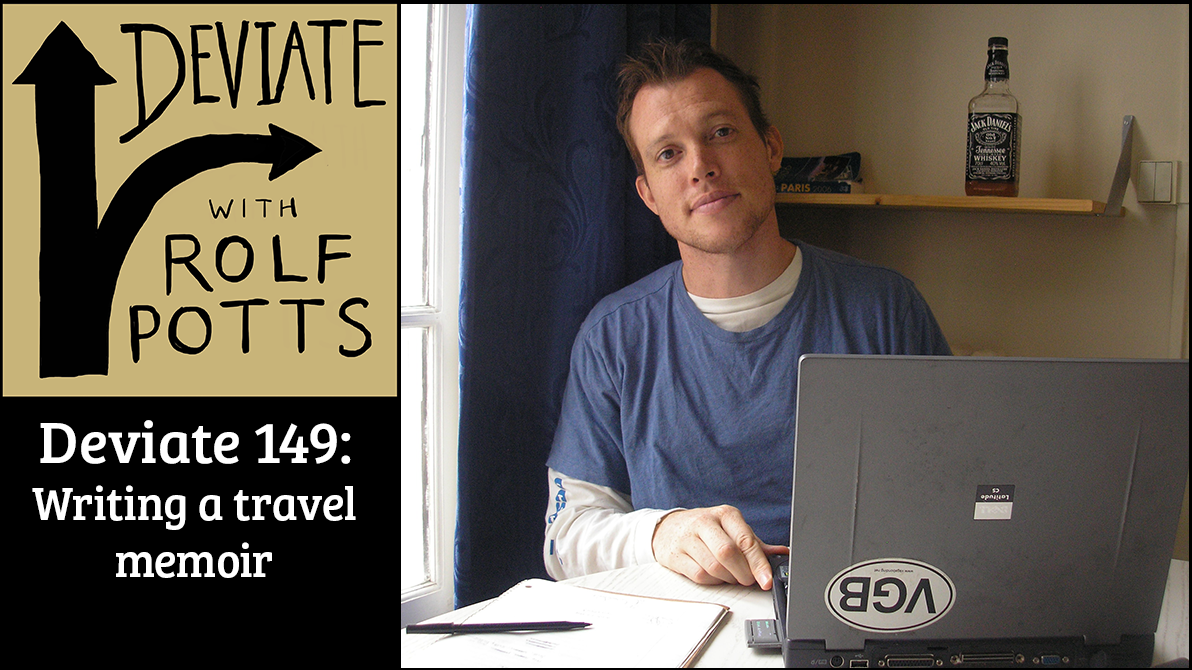
“Earnest, hard-won failure can teach you as much as anything.” – Rolf Potts
Note : For information on the Paris-based Travel Memoir classes Rolf is offering to Deviate listeners in 2021, inquire at [email protected], or via the online forms at the Paris Writing Workshops website.
In this episode of Deviate , Rolf and Jeremy discuss breaking into travel writing and learning through failure (4:00); what defines travel memoir, and how it’s different from other kinds of travel writing (11:00); the role of research in travel writing, and the balance between personal expression and reportage (17:00); the travel writing industry, and what topics are covered in Rolf’s Paris Writing Workshop (25:00); and how “flaneuring” in place like Paris can lend a new perspective on place (37:00).
Jeremy Bassetti ( @jeremybassetti ) is a writer, editor, educator, and host of the Travel Writing World Podcast . His website, travelwritingworld.com , features interviews with travel writers, book reviews, author profiles, and resources for travel writers and their readers. For more about Jeremy, check out jeremybassetti.com .
Notable Links:
- Storming the Beach , by Rolf Potts (essay)
- Van Life before #VanLife ( Deviate episode)
- The Last Whalers , by Doug Bock Clark (book)
- Deviate interview with Doug Bock Clark (podcast)
- Eat, Pray, Love , by Elizabeth Gilbert (book)
- On the Plain of Snakes , by Paul Theroux (book)
- Deviate interview with Paul Theroux (podcast)
- Braver Than You Think , by Maggie Downs (book)
- Deviate interview with Maggie Downs (podcast)
- Writing Away , by Lavinia Spalding (book)
- Deviate interview with Lavinia Spalding (podcast)
- Drunk in China , by Derek Sandhaus (book)
- Deviate interview with Derek Sandhaus (podcast)
- The Painter of Modern Life , by Charles Baudelaire (essay collection)
- Psychogeography (urban exploration strategy)
This episode of Deviate is brought to you by Tortuga Backpacks , which set the standard for the best, most durable, organized, and comfortable travel backpacks. Tortuga products also include daypacks, duffels, and other travel accessories, which are all made with the traveler in mind and have been featured by Wirecutter, The New York Times, Travel + Leisure, Business Insider, Carryology , and many other industry outlets.
Sign up for updates from Deviate
More from rolfpotts.com.

- ← Strategies and arguments for the simple life (from an off-grid perspective)
- Life changing travel experiences (with Ari Shaffir): Walking across Israel →

Travel Memoirs That Aren’t by the Usual White Dudes
Steph Auteri
Steph Auteri is a journalist who has written for the Atlantic, the Washington Post, Pacific Standard, VICE, and elsewhere. Her more creative work has appeared in Creative Nonfiction, under the gum tree, Poets & Writers, and other publications, and she is the Essays Editor for Hippocampus Magazine. Her essay, "The Fear That Lives Next to My Heart," published in Southwest Review, was listed as a Notable Essay in Best American Essays 2021. She also writes bookish stuff here and at the Feminist Book Club, is the author of A Dirty Word, and is the founder of Guerrilla Sex Ed. When not working, she enjoys yoga, embroidery, singing, cat snuggling, and staring at the birds in her backyard feeder. You can learn more at stephauteri.com and follow her on Insta/Threads at @stephauteri .
View All posts by Steph Auteri
But that was an impossible dream, and so I read about folks who embodied the person I could never be.
There was just one problem. Aside from the occasional white woman with the time and money to abandon her life for huge swaths of time (a different kind of wish fulfillment), all of the travel books I read seemed to be written by white dudes.
Where were the travel memoirs from all the anxious young women who had no money and couldn’t leave their jobs for longer than a day or two?
(I mean, I guess those women weren’t really traveling. But still.)
The other month, I read Blythe Roberson’s America the Beautiful? , a travel memoir that follows the author’s cross-country road trip to America’s national parks, and that purports to discover why the genre seems monopolized by “white men who have no problems, who only decide to go to the desert to see what having problems feels like.” Roberson’s book read like Bill Bryson for women…but better.
Which made me wonder what else was out there that I’d been missing.
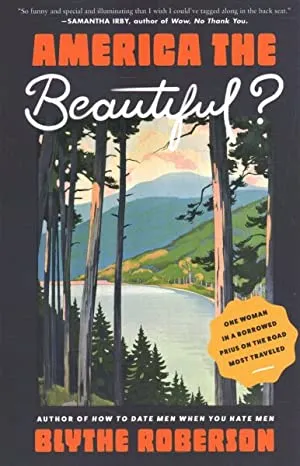
America the Beautiful? by Blythe Roberson
We’ll get this one out of the way, as it was the book that inspired me to write this post. Not only is Roberson a master of humorous travel writing, but her travel narrative goes far beyond an accounting of her travels. In each chapter of this book, as she makes her way further along on her journey, she tackles a different topic: whether solo travel is too dangerous for women and BIPOC, the ethics of national parks on land that once belonged to Indigenous folks, the way social media has made it impossible to just be in a moment…Despite the light tone, Roberson digs deep, making for a particularly enjoyable and satisfying read.
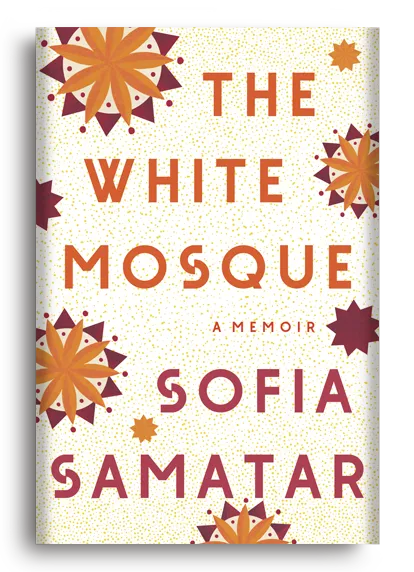
The White Mosque by Sofia Samatar
In gorgeous, lyrical prose, Samatar writes of a tour she took that followed in the footsteps of a group of German-speaking Mennonites who traveled from Russia into Central Asia in the late 19th century, eventually establishing a small Christian village in the midst of a Muslim khanate. In delving into the history of this journey, and those who were involved, Samatar also interrogates the nature of identity and self.
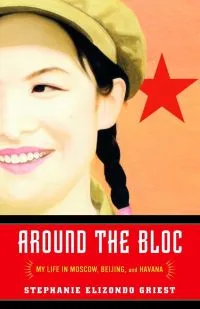
Around the Bloc by Stephanie Elizondo Griest
Griest was desperate to escape her south Texas hometown, so she pursued journalism in the hopes of eventually becoming a foreign correspondent. In service of this, she spent four years traveling everywhere from Moscow to Beijing to Havana and elsewhere in an attempt to bear witness to the effects of Communism. Through her varied experiences (related in humorous prose), Griest finds her preconceived beliefs about the “Evil Empire” shaken to their core.
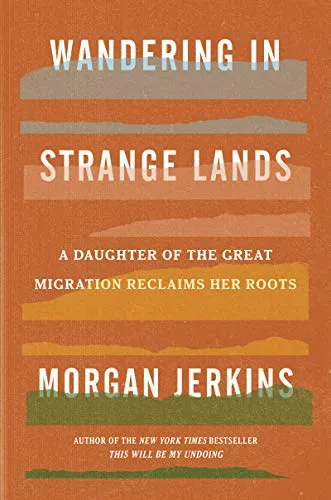
Wandering in Strange Lands by Morgan Jerkins
I really enjoyed This Will Be My Undoing , so I was excited about this one. In this reported memoir, Jerkins delves into her family’s past, recreating her ancestors’ journeys during the Great Migration. This journey takes her from Georgia and South Carolina to Louisiana, Oklahoma, and California, and gives her insight not only into her own past, but into the story of an entire people who were displaced and disenfranchised, beaten down by the racism that exists at the heart of an entire country.
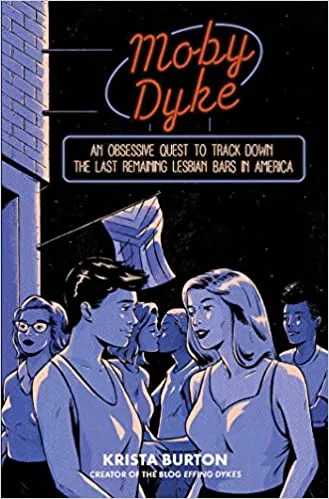
Moby Dyke by Krista Burton
This one is on my TBR for a number of reasons: The title makes me giggle. I love the cover art. And the premise just sounds fun . In Moby Dyke , Burton decides to travel to America’s last few lesbian bars in order to figure out why there are so few left. In taking this cross-country journey, she not only explores the disappearance of a certain type of venue, but also the evolution of the experiences of an entire marginalized community.
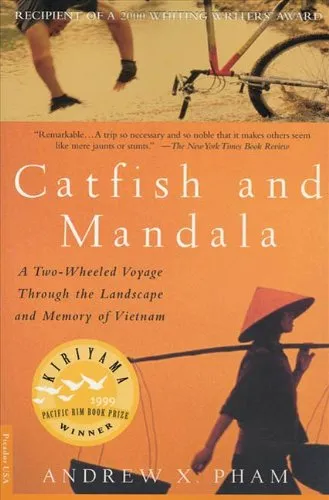
Catfish and Mandala by Andrew X. Pham
I was drawn in by the premise of this book, about a Vietnamese American man who quits his job and sells off all of his possessions after the death of his sister so he can take a year-long solo bike trip from Mexico to South Korea to Japan and beyond. His sardonic tone kept me reading (I’m a sucker for dark, deadpan humor). This travelogue is about — among other things — one man’s search for home and cultural identity.
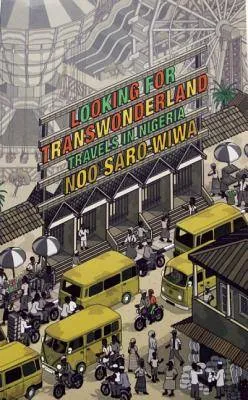
Looking for Transwonderland by Noo Saro-Wiwa
Saro-Wiwa grew up in England, but was forced to visit her father in Nigeria every summer, a trip she dreaded. When her father, an activist, was killed, the visits stopped. Years later, she returned to the country in an attempt to reconnect with and understand the place her father had cared about so much. In her travels, there is still much about Nigeria that she continues to loathe. But she soon finds that there is also a lot to love.
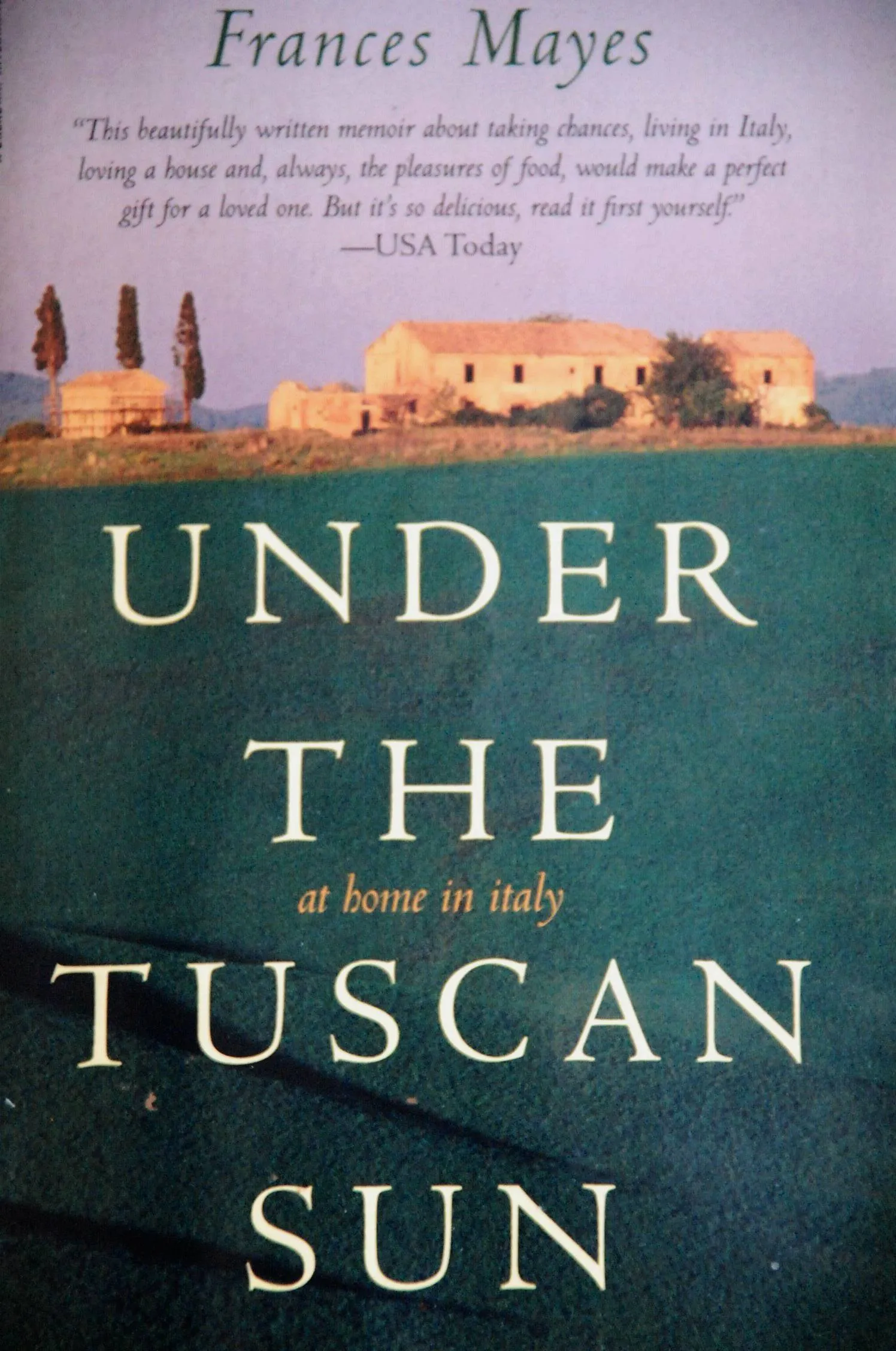
Under the Tuscan Sun by Frances Mayes
Okay. I know I made a jab earlier at white women with the time and money to abandon their lives in order to “find themselves.” I was jealous. Besides, it really does seem as if some of the best travel memoirs — notably by women, gender-diverse folks, and BIPOC authors — are much more than just simple travelogues. Rather, they look outside the self in order to tackle larger systemic issues. But I will never not love this classic about a woman who — on a whim — decides to purchase and fix up a house in Tuscany. I mean, who doesn’t want to be Diane Lane?
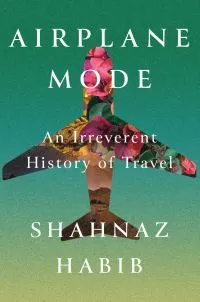
Airplane Mode by Shahnaz Habib (December 5)
This last title (forthcoming from Catapult Press) is part memoir, part reported cultural critique. In this book, Habib tackles her complicated relationship to travel and travel writing as a South Indian woman of color, exploring who gets to travel and who gets to write about it. Basically, it’s a response to Roberson’s initial question: Why are all the travel memoirs by white dudes? Which makes it the perfect title to round out this list.
If you’re still Team Bill Bryson, we got you. Check out our Reading Pathways post on his work. But if you’d like to expand your travel writing even further, we also have posts on the most anticipated travel books of 2023 , place-based memoirs , and unconventional books about travel .

You Might Also Like

TRY OUR FREE APP
Write your book in Reedsy Studio. Try the beloved writing app for free today.
Craft your masterpiece in Reedsy Studio
Plan, write, edit, and format your book in our free app made for authors.

Blog • Perfecting your Craft
Posted on Jun 21, 2017
12 Types of Travel Writing Every Writer Should Know
So, you want to be a travel writer?
There are plenty of reality doses out there already, so we’re going to focus on the positives, and what you can do to maximize your chances of travel writing professionally. One of the first steps: you should absolutely know your markets, and what types of travel writing are popular in them. In today’s competitive market, this knowledge can both help you structure your article and target the right audience.
In this post, we break down modern travel writing into three distinct categories: freelance journalism , blogging, and book-writing. Then we identify the prevalent types of travel writing each category is known for, to give you an initial sort of compass in the industry.
Freelance Travel Journalism

The truth is this: the travel sections in major publications (New York Times, Washington Post, Wall Street Journal) are slimmer now, so competition will be tall. But there are other outlets. Local newspapers are sometimes open to travel pitches from freelancers. Certain websites pay for travel articles, while magazines can be great for targeting niche audiences.
So what are the common types of freelance travel journalism?
Destination articles
Here, the game’s in the name: destination articles tell readers about a place to which they might want to travel one day. One of the most standard type of travel stories, these pieces act as the armchair reader’s bird-eye view of a place. Useful or interesting facts pepper the writing. History, points of interest, natural scenery, trendy spots: a destination article can touch upon them all within the framework of a broad narrative.
Where the average article gives readers a sense of the destination, the best of the best convinces readers that this is a destination they want, nay, need to visit. As such, though some destination articles are written in first person, the focus is rarely on the writer. Instead, the destination is the star of the show.
For examples of destination articles, check out:
- Besalú, the most interesting Spanish village you probably don’t know (LA Times)
- In Indonesia (Washington Post)
- 36 Hours In The Finger Lakes Region of New York (New York Times)

Special-interest articles
Special-interest articles are offshoots of destination articles. Instead of taking the reader on a tour of an entire country or city, these pieces cover one particular aspect of the destination. This kind of writing can cover anything from art in Colombia, ghost towns in the U.S., trekking in Patagonia, alpaca farms in Australia, motorbiking in Brazil, railroads in France, volunteering in Tanzania — you get the gist.
Since special-interest articles are narrower in topic, many writers tailor them for niche magazines or websites. Before you start pitching, we recommend flipping through the Writer’s Handbook , one of the most useful guides to the freelance publishing market, to see which publications fit your target audience.
For a taste of some special-interest articles, see:
- Exploring Portugal — From Pork To Port (epicurious.com)
- This Unsung Corner of Spain is Home to Fabulous Food (Washington Post)
- Karsts of China's Getu River region attract rock climbers, other travelers (CNN Travel)
Holiday and special events
Holiday and special events travel articles ask writers to write about a destination before the event takes place. The biggest global events are magnets for this type of travel writing, such as the World Cup, the Olympics, the World Expo, fashion weeks, and film festivals. Depending on the publication, regional events work just as well.
Want to see what special events pieces look like? Have a read through these:
- This summer’s solar eclipse is southern Illinois’ chance to shine (Chicago Tribune)
- How To Plan A Trip To The 2016 Rio Olympics (Travel & Leisure)
You’ll recognize a round-up article when you see one, as it’ll go, “40 best beaches in West Europe,” or, perhaps, “20 of the greatest walks in the world!” It’s a classic tool in any magazine or newspaper writer’s toolbox, taking a bunch of destinations and grouping them all under one common thread.
Ultimately, a clear motif makes this type of article a breeze to read, as they’re a play on the ubiquitous List Format. But, OK, before you jump at this excuse to sacrifice your belly at 99 food trucks in New York City, remember that your premise should be original, not to mention practical. What’s tough is coming up with X ways to do Y in the first place, as that demands you put in the travel and research to produce a thorough write-up.
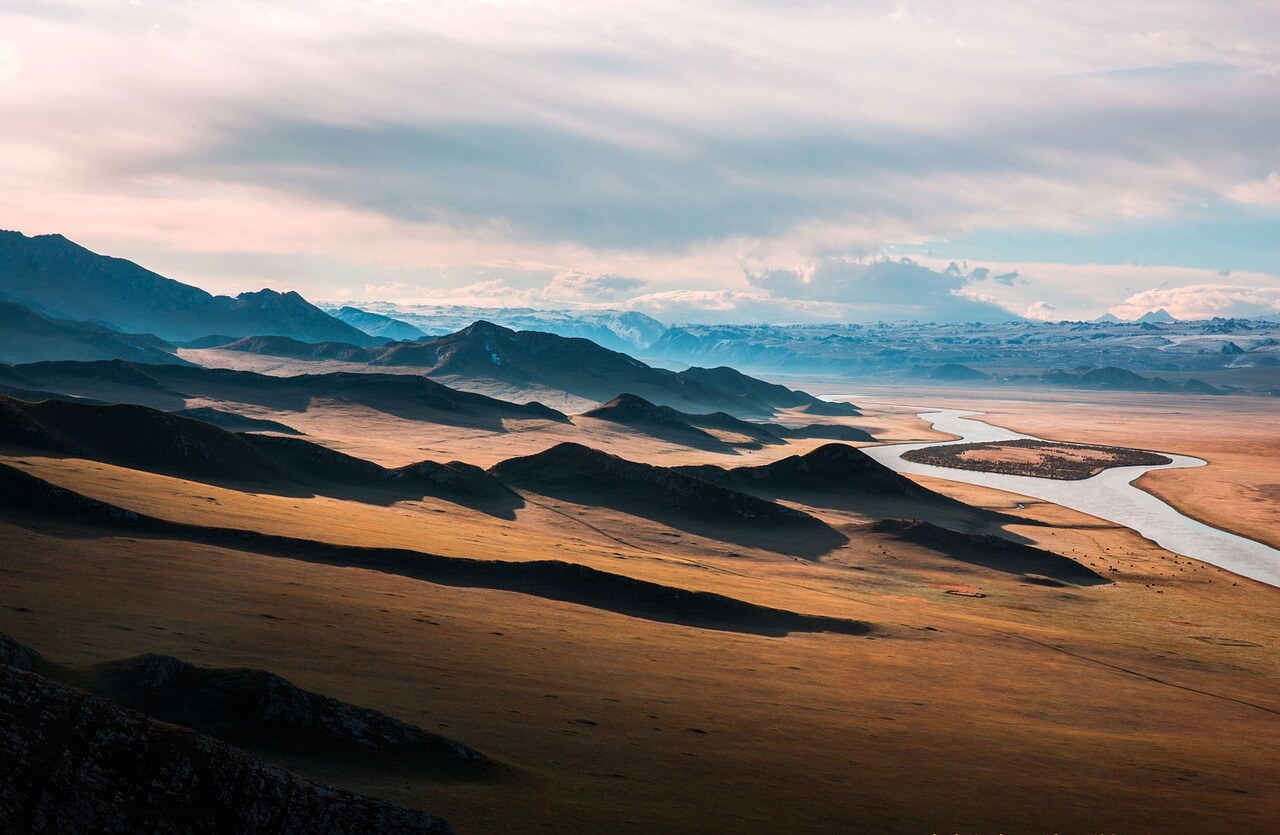
Want even more examples of round-up articles? Here you go:
- 12 new art exhibits to see this summer (Smithsonian)
- 21 ways to see America for cheap (Huffington Post)
- 41 places to go in 2011 (New York Times)
Personal essays
Publishers are experiencing something of a personal essay fatigue , so the market for more might be scarce these days. However, quality trumps all, and a good personal travel essay is just plain good writing in disguise: something that possesses a strong voice while showing insight, growth, and backstory.
Just don’t make it a diary entry. In an interview with The Atlantic , travel writer Paul Theroux said: “The main shortcut is to leave out boring things. People write about getting sick, they write about tummy trouble. They write about waiting. They write three pages about how long it took them to get a visa. I’m not interested in the boring parts. Everyone has tummy trouble. Everyone waits in line. I don’t want to hear about it.”
Here’s a jumping-off point for personal travel essays:
- Taking the Great American Roadtrip (Smithsonian)
Have a burning opinion to share? Sometimes publications end up giving op-eds to staff, but there are always open calls for opinion pieces.
Travel op-eds are much rarer than political opinion pieces, but there’s a pattern to the ones that make the cut: good persuasive writing. If you can come at a topic from a unique angle (and argue your case clearly) then you may be able to publish your opinion.
If you’re in the mood for travel op-ed articles, see:
- The West Coast Is The Best Coast For Food In America (Food & Wine)
- Why Climate Change Is Actually Relevant To Travel (Conde Nast)
Travel Blogging

When typing “travel blog” into Google returns 295 million results, we can guess it’s a fairly competitive market.
Here’s the plus side: bloggers get to write what they want and go where they please. When it comes to blog posts, there are no editors, no gatekeepers. Only you and the “PUBLISH” button.
We won’t go revisit the types of travel writing we covered earlier (such as the roundup format). Instead, we’ll explore some of the other formats bloggers use to tell their travel stories. Since the rules of travel blogging are next to non-existent, our tally below is by no means definitive. And, again, our best advice is to note what your favorite bloggers do on their blogs.
Already running a successful travel blog? You might consider turning that blog into a book !
How-To articles are already fairly popular in magazines, but they’re positively omnipresent in the travel blogging world. Blogs provide a direct communication platform, allowing trust to build up quicker with the readers. As a result, for the search query, “How to travel Europe on a budget,” six out of the top ten results are posts from trusted independent blogs.
A How-To article is the most standard form of advice column a travel blogger can produce. It’s intrinsically useful, promising that it’ll teach something by article’s end. A blogger’s challenge is delivering fully on that promise.
How to read more How-To articles? We got you covered:
- How To Start A Travel Blog (Nomadic Matt)
- How To Travel Solo To A Party Destination (Adventurous Kate)
- How to Visit Penang’s Kek Lok Si Temple (Migrationology)
Itineraries
Itineraries reveal the schedule that the writer took at a given destination, city-by-city or sight-by-sight. They’re meant for the traveler who’s embarking on a similar trip and needs a template. Typically, you’ll find that an itinerary post is an easy place for you to slip in recommendations, anything from the accommodation you used or the restaurants you tried.
You can use itinerary posts to reinforce your blog’s brand. For instance, an itinerary posted on a blog focused around budget travel will probably maximize cost-saving chances.
For more itineraries, see:
- My Trip To Japan (A Complete Japan Itinerary)
- Backpacking Vietnam on a budget: 2-3 Weeks Itinerary + Tips
Longform posts
Longform travel blogging tells a travel story through extended narrative content, as it takes a week’s worth of adventure and shapes it into a story. Longform blog posts about travel often end up being creative nonfiction : a way to present nonfiction — factually accurate prose about real people and events — in a compelling, vivid, dramatic manner.
Photography can add another dimension to the form, as Emmanuel Nataf (our co-founder!) shows on his travel blog . And Reedsy's very own Arielle provides a glimpse into why she prefers longform travel writing on her blog, Steps, a Travel Journal :
My favourite kinds of stories are the ones that give you a real sense of place. That’s why I enjoy longform travel blogging: I get to describe the character of a place through the experiences I encountered there.
If you want to dip your toe into the sea of longform posts, you can also read:
- The Cow Head Taco Philosopher King of Oaxaca (Legal Nomads)
- The Best Worst Museum In The World
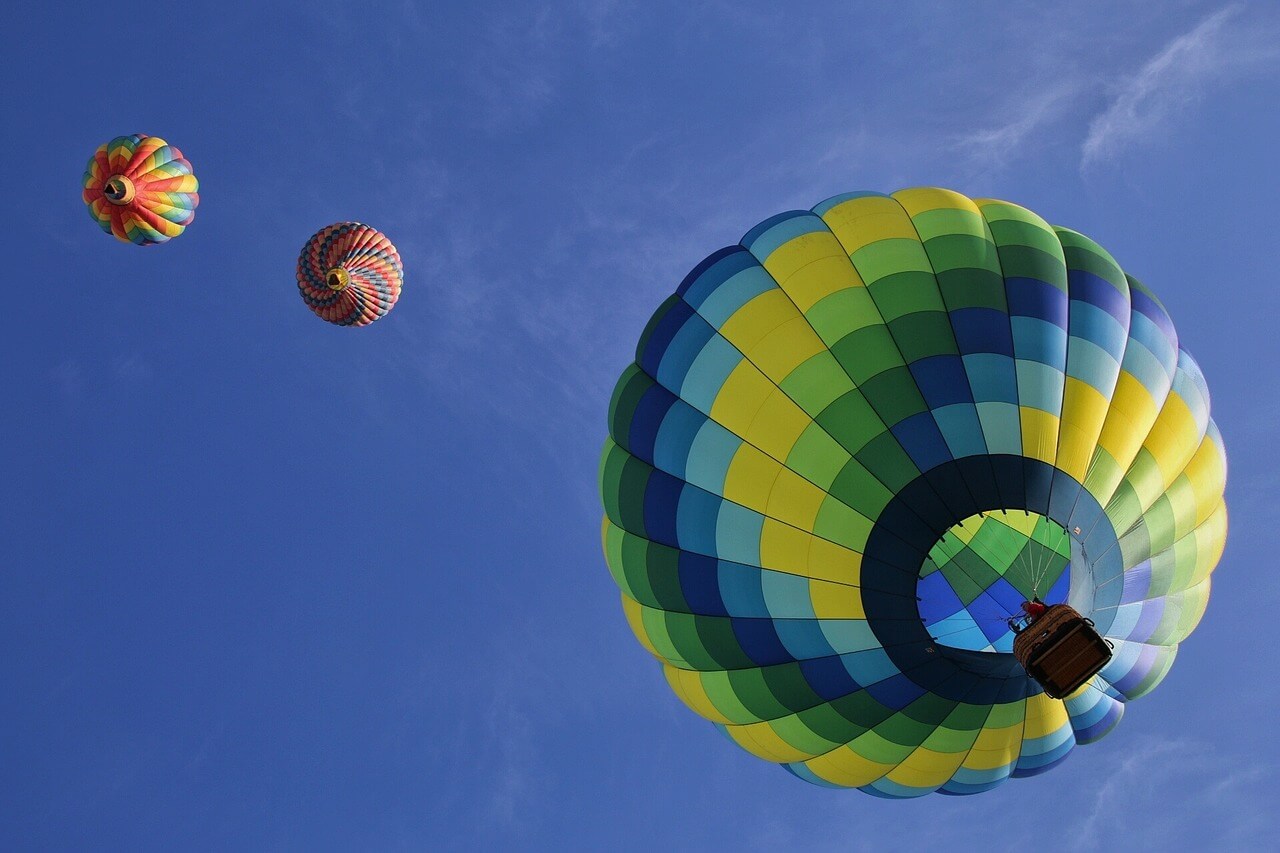
When it comes to writing a book, you can take all the challenges about travel writing from above and magnify it times 2,000. If you’re asking readers to commit to you for more than 100 pages, you’d best make sure that your book is worth their while.
As far as examples go, travel writing’s boomed in the mainstream book market recently. But there’s much more to it than Eat, Pray, Love and its descendants.
Travelogues
In travelogues, authors record their adventures in a way that illustrates or sheds insight upon the place itself. Travelogues possess a storied past, from Lady Mary Wortley Montagu’s Turkish Embassy Letters in 1763 to Mark Twain’s 1867 The Innocents Abroad , which paved the way for the sort of comic travelogues that Bill Bryson’s perfected today.
Up for some travelogues? Check out:
- Notes From A Small Island , by Bill Bryson
- In Patagonia , by Bruce Chatwin
- Travels with Charley In Search of America , by John Steinbeck
Travel memoirs
Nowadays, travel memoirs are practically synonymous with Elizabeth Gilbert’s wildly popular Eat, Pray, Love and Cheryl Strayed’s bestselling Wild , which were both recently adapted into Hollywood blockbusters.
That said, be aware that you’ll need a pretty exceptional personal story for your memoir to compete in today’s market . If you’re still set on writing or self-publishing a travel memoir, it’s tricky to balance personal backstory and travel for 400 pages, so think about taking on a professional for a second pair of eyes.
Did you know? You can find Nicki Richesin , a top Bloomsbury editor who’s edited for Cheryl Strayed, on our marketplace.
In addition to Eat, Pray, Love and Wild , you can read:
- Under the Tuscan Sun , by Frances Mayes
- Coasting , by Jonathan Raban
- Wind, Sand, and Stars , by Antoine de Saint-Exupéry
As Oscar Wilde said, “I never travel without my diary. One should always keep something sensational to read in the train.” But these days, people are replacing diaries with travel guides — the ubiquitous Lonely Planet becoming one of the more common sights on transit.
Travel writing in guidebooks is straightforward, informative, and fact-filled. In addition, there’s a certain amount of responsibility that comes with the job. Lonely Planet alone is read by millions of travelers worldwide.
General Tips and Guidelines

As we mentioned before, the trick to producing great travel writing is ultimately simply writing well . To that extent, you should make sure to follow all the guidelines of good writing — not least, spell-checking your article before submitting or publishing it anywhere. You don’t want an editor or reader to see it while it stilll reads lik edis.
Also, keep in mind the tone, style, and vibe of the publication and platform (and by extension, your audience). A story about a moon-rock could go into a kid's magazine or it could go into Scientific America .
Finally, some category-specific tips:
- If you’re freelance writing, always check submission guidelines. Publications may accept only pitches or they may welcome articles “on spec” (pre-written articles). Some sources only take travel articles that were written within 6 months of the trip.
- If you’re blogging, brand your website (same advice if you’re an author who’s building an author website ).
- If you’re writing a book, get a professional editor! An unedited book is an unwieldy thing, and professional eyes provide direction, continuity, and assonance. ( Layout designers can be important if you’re publishing a travel photography book, in the meanwhile.)
Travel writing isn't a cinch. In fact, it's a long and often hard grind. But by figuring out what type of travel writing you want to try your hand at, you're taking the crucial first step.
Have you tried travel writing before? Want to show us the cool travel blog that you're keeping? We're always in the mood for great travel writing + pretty pictures. Leave us a note in the comments and we'll be sure to check it out!
7 responses
Amanda Turner says:
20/03/2018 – 16:20
Thank you, this was very helpful. Here's one of mine: http://vagabondingwithkids.com/every-mothers-guide-to-piranha-fishing-in-the-amazon/
Travalerie says:
24/05/2018 – 18:42
I landed on this page Googling for one thing and coming up with another. Haha! But what I found instead was helpful as I'm devouring as much as I can on travel writing. A few months ago, I started a new travel business, revamped my website including a new blog, and am in the process of writing, writing, writing. I took 2 trips this year so far and wrote what seemed like a mini-novella. Burning out in the process. I know I can do better. But I had no idea what I was writing could be re-worked to fit a certain category of travel writing -- which is what I found helpful in this post above. Thanks https://www.travalerie.com/blog
Surya Thakur says:
04/03/2019 – 12:39
Very good information. Lucky me I discovered your blog by chance (stumbleupon). I’ve saved as a favorite for later! KuLLuHuLLs
David Bishop says:
08/05/2019 – 12:28
Thanks for this good article. I'm in my third year on the road and recently started my senior solo adventure travel website. I think my site has some pretty good stuff, of course. Take a look and tell me what you think. www.davidhunterbishop.com
Iris C. Permuy says:
23/05/2019 – 18:03
Thank you very much for all of these useful pieces of advice. I will make sure to implement them all on my travel blog, which is a combination of travel and gastronomy and uses the memoir and itinerary types, apart from recipes. Come check it out if you feel like it! I am more than open, eager for some professional feedback :)
Serissa says:
26/10/2019 – 14:53
This post is the perfect diving board for aspiring travel writers. I plan to link to this page from my travel blog if that is alright! ?? The link on my website will appear as "[title of this post] by Reedsy Blog". I assume this is alright, but if not, please email me directly to let me know! Thanks so much!
↪️ Martin Cavannagh replied:
29/10/2019 – 10:11
We'd be absolutely delighted if you shared this article on your blog :)
Comments are currently closed.
Continue reading
Recommended posts from the Reedsy Blog

What is the Climax of a Story? Examples & Tips
The climax is perhaps a story's most crucial moment, but many writers struggle to stick the landing. Let's see what makes for a great story climax.

What is Tone in Literature? Definition & Examples
We show you, with supporting examples, how tone in literature influences readers' emotions and perceptions of a text.

Writing Cozy Mysteries: 7 Essential Tips & Tropes
We show you how to write a compelling cozy mystery with advice from published authors and supporting examples from literature.

Man vs Nature: The Most Compelling Conflict in Writing
What is man vs nature? Learn all about this timeless conflict with examples of man vs nature in books, television, and film.

The Redemption Arc: Definition, Examples, and Writing Tips
Learn what it takes to redeem a character with these examples and writing tips.

How Many Sentences Are in a Paragraph?
From fiction to nonfiction works, the length of a paragraph varies depending on its purpose. Here's everything you need to know.
Join a community of over 1 million authors
Reedsy is more than just a blog. Become a member today to discover how we can help you publish a beautiful book.

We made a writing app for you
Yes, you! Write. Format. Export for ebook and print. 100% free, always.

1 million authors trust the professionals on Reedsy. Come meet them.
Enter your email or get started with a social account:
Subscribe to our newsletter
100 short memoir examples - narrative personal essays, scars by david owen, these precious days by ann patchett, the same river twice by david quammen, 50 more great articles about life, after life by joan didion, now we are five by david sedaris, feet in smoke by john jeremiah sullivan, when things go missing by kathryn schulz, 25 more great articles about death.

Love and Relationships
True love by haruki murakami, dating online by emily witt, no labels, no drama by jordana narin, the worst friend date i ever had by samantha irby, 50 more great articles about love and relationships, my first time, twice by ariel levy, tragedy averted. minimal gagging. by lidia yuknavitch, a girl's guide to sexual purity by carmen maria machado, deeply, truly (but not physically) in love by lauren slater, 50 more great articles about sex, peculiar benefits by roxane gay, thanksgiving in mongolia by ariel levy, long day's journey by elizabeth gilbert, trapped by aron ralston, the kingdom of the lotus by patrick symmes, 50 more great articles about travel, ultimate glory by dave gessner, skating home backward by bill vaughn, off diamond head by william finnegan, tennis, trigonometry, tornadoes by david foster wallace, 50 more great articles about sport.

Notes of a Native Son by James Baldwin
How to slowly kill yourself and others in america by kiese laymon, the price of black ambition by roxane gay, 25 more great essays about race, the comfort zone by jonathan franzen, on being an only child by geoff dyer, a raccoon of my own by lauren slater, my dad tried to kill me with an alligator by harrison scott key, difficult girl by lena dunham, seventeen by steve edwards, age appropriate by jen doll, richard by allie brosh, 50 more great articles about growing up, lost in the meritocracy by walter kirn, dumb kids' class by mark bowden, fragments from an education by christopher hitchens, 20 more great articles about education, having children, joy by zadie smith, channel b by megan stielstra, a birth story by meaghan o'connell, i was pregnant, and then i wasn't by laura turner, 10 more great articles about having children.

Patient by Rachel Riederer
The empathy exams by leslie jamison, 50 more great articles about health, mental illness, adventures in depression by allie brosh, darkness visible by william styron, insane after coronavirus by patricia lockwood, 20 more great articles about mental health, explicit violence by lidia yuknavitch, heroin/e by cheryl strayed, me & my monkey by anonymous, me and my girls by david carr, my addicted son by david sheff, how i let drinking take over my life by william leith, 10 more great articles about addiction, autobiography of a body by lucy grealy, a few words about breasts by nora ephron, a thin line between mother and daughter by jennifer egan, the broken country by molly mccully, the trash heap has spoken by carmen maria machado, saying goodbye to my chest by naomi gordon-loebl, the onset by my ngoc to, 20 more great articles about body image, see also..., 150 great articles and essays.

The Unspeakable Things Between Our Bellies by Lidia Yuknavitch
Woven by lidia yuknavitch, girl by alexander chee, pause by mary ruefle, lost cat by mary gaitskill, three by david sedaris, my life as an undocumented immigrant by jose antonio vargas, been down so long it looks like debt to me by m.h. miller, lucky girl by bridget potter, goodbye to all that by joan didion, my misspent youth by meghan daum, lost and found by colson whitehead, night-shifting for the hip fleet by mark jacobson, 25 more great articles about new york, the muse of coyote ugly saloon by elizabeth gilbert, quitting the paint factory by mark slouka, the loading dock manifesto by john hyduk, 40 more great articles about work, the real heroes are dead by james b. stewart, remains of the day by mary lee hannell, 10 more great articles about 9/11.

Book-Length Memoirs
Slouching towards bethlehem by joan didion, me talk pretty one day by david sedaris, just kids by patti smith, the chronology of water by lidia yuknavitch, a heartbreaking work of staggering genius by dave eggers, the glass castle by jeannette walls, brain on fire by susannah cahalan, irritable hearts by mac mcclelland, hunger by roxane gay, a sliver of light by shane bauer, joshua fattal and sarah shourd, 100 more great nonfiction books.
About The Electric Typewriter We search the net to bring you the best nonfiction, articles, essays and journalism
The Best Nonfiction Books of 2024, So Far
Here’s what memoirs, histories, and essay collections we’re indulging in this spring.
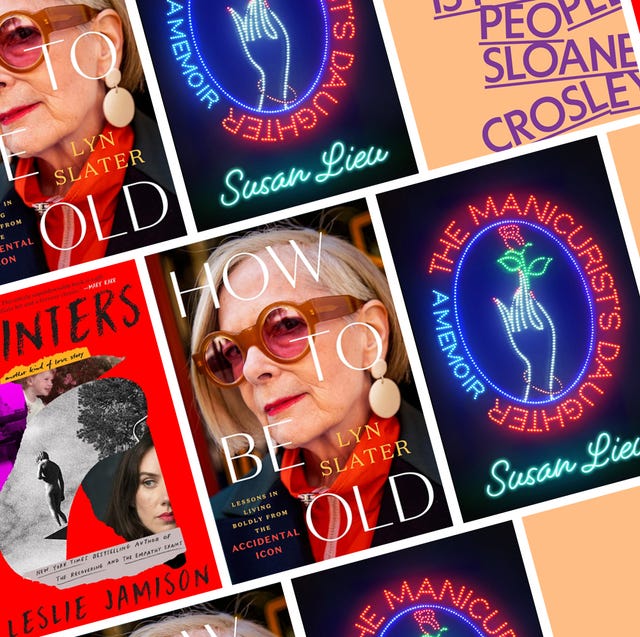
Every item on this page was chosen by an ELLE editor. We may earn commission on some of the items you choose to buy.
Truth-swallowing can too often taste of forced medicine. Where the most successful nonfiction triumphs is in its ability to instruct, encourage, and demand without spoon-feeding. Getting to read and reward this year’s best nonfiction, then, is as much a treat as a lesson. I can’t pretend to be as intelligent, empathetic, self-knowledgeable, or even as well-read as many of the authors on this list. But appreciating the results of their labors is a more-than-sufficient consolation.
Filterworld: How Algorithms Flattened Culture by Kyle Chayka
There’s a lot to ponder in the latest project from New Yorker writer Kyle Chayka, who elegantly argues that algorithms have eroded—if not erased—the essential development of personal taste. As Chayka puts forth in Filterworld , the age of flawed-but-fulfilling human cultural curation has given way to the sanitization of Spotify’s so-called “Discover” playlists, or of Netflix’s Emily in Paris, or of subway tile and shiplap . There’s perhaps an old-school sanctimony to this criticism that some readers might chafe against. But there’s also a very real and alarming truth to Chayka’s insights, assembled alongside interviews and examples that span decades, mediums, and genres under the giant umbrella we call “culture.” Filterworld is the kind of book worth wrestling with, critiquing, and absorbing deeply—the antithesis of mindless consumption.
American Girls: One Woman's Journey Into the Islamic State and Her Sister's Fight to Bring Her Home by Jessica Roy
In 2019, former ELLE digital director Jessica Roy published a story about the Sally sisters , two American women who grew up in the same Jehovah’s Witness family and married a pair of brothers—but only one of those sisters ended up in Syria, her husband fighting on behalf of ISIS. American Girls , Roy’s nonfiction debut, expands upon that story of sibling love, sibling rivalry, abuse and extremism, adding reams of reporting to create a riveting tale that treats its subjects with true empathy while never flinching from the reality of their choices.
Leonor: The Story of a Lost Childhood by Paula Delgado-Kling
In this small but gutting work of memoir-meets-biography, Colombian journalist Paula Delgado-King chronicles two lives that intersect in violence: hers, and that of Leonor, a Colombian child solider who was beckoned into the guerilla Revolutionary Armed Forces of Colombia (FARC) only to endure years of death and abuse. Over the course of 19 years, Delgago-King followed Leonor through her recruitment into FARC; her sexual slavery to a man decades her senior; her eventual escape; and her rehabilitation. The author’s resulting account is visceral, a clear-eyed account of the utterly human impact wrought by war.
Madness: Race and Insanity in a Jim Crow Asylum by Antonia Hylton
A meticulous work of research and commitment, Antonia Hylton’s Madness takes readers deep inside the nearly century-old history of Maryland’s Crownsville State Hospital, one of the only segregated mental asylums with records—and a campus—that remain to this day. Featuring interviews with both former Crownsville staff and family members of those who lived there, Madness is a radically complex work of historical study, etching the intersections of race, mental health, criminal justice, public health, memory, and the essential quest for human dignity.
Come Together: The Science (and Art!) of Creating Lasting Sexual Connections by Emily Nagoski
Out January 30.
Emily Nagoski’s bestselling Come As You Are opened up a generations-wide conversation about women and their relationship with sex: why some love it, why some hate it, and why it can feel so impossible to find help or answers in either camp. In Come Together , Nagoski returns to the subject with a renewed focus on pleasure—and why it is ultimately so much more pivotal for long-term sexual relationships than spontaneity or frequency. This is not only an accessible, gentle-hearted guide to a still-taboo topic; it’s a fascinating exploration of how our most intimate connections can not just endure but thrive.
Everyone Who Is Gone Is Here: The United States, Central America, and the Making of a Crisis by Jonathan Blitzer
A remarkable volume—its 500-page length itself underscoring the author’s commitment to the complexity of the problem—Jonathan Blitzer’s Everyone Who Is Gone Is Here tracks the history of the migrant crisis at the U.S.-Mexico border through the intimate accounts of those who’ve lived it. In painstaking detail, Blitzer compiles the history of the U.S.’s involvement in Central America, and illustrates how foreign and immigration policies have irrevocably altered human lives—as well as tying them to one another. “Immigrants have a way of changing two places at once: their new homes and their old ones,” Blitzer writes. “Rather than cleaving apart the worlds of the U.S., El Salvador, Guatemala, and Honduras, the Americans were irrevocably binding them together.”
How to Live Free in a Dangerous World: A Decolonial Memoir by Shayla Lawson
Out February 6.
“I used to say taking a trip was just a coping mechanism,” writes Shayla Lawson in their travel-memoir-in-essays How to Live Free in a Dangerous World . “I know better now; it’s my way of mapping the Earth, so I know there’s something to come back to.” In stream-of-consciousness prose, the This Is Major author guides the reader through an enthralling journey across Zimbabwe, Japan, the Netherlands, France, Spain, Italy, Mexico, Bermuda, and beyond, using each location as the touchstone for their essays exploring how (and why) race, gender, grief, sexuality, beauty, and autonomy impact their experience of a land and its people. There’s a real courage and generosity to Lawson’s work; readers will find much here to embolden their own self-exploration.
Get the Picture: A Mind-Bending Journey Among the Inspired Artists and Obsessive Art Fiends Who Taught Me How to See by Bianca Bosker
There’s no end to the arguments for “why art matters,” but in our era of ephemeral imagery and mass-produced decor, there is enormous wisdom to be gleaned from Get the Picture , Bianca Bosker’s insider account of art-world infatuation. In this new work of nonfiction, readers have the pleasure of following the Cork Dork author as she embeds herself amongst the gallerists, collectors, painters, critics, and performers who fill today’s contemporary scene. There, they teach her (and us) what makes art art— and why that question’s worth asking in an increasingly fractured world.
Alphabetical Diaries by Sheila Heti
A profoundly unusual, experimental, yet engrossing work of not-quite-memoir, Sheila Heti’s Alphabetical Diaries is exactly what its title promises: The book comprises a decade of the author’s personal diaries, the sentences copied and pasted into alphabetical order. Each chapter begins with a new letter, all the accumulated sentences starting with “A”, then “B,” and so forth. The resulting effect is all but certain to repel some readers who crave a more linear storyline, but for those who can understand her ambition beyond the form, settling into the rhythm of Heti’s poetic observations gives way to a rich narrative reward.
Slow Noodles: A Cambodian Memoir of Love, Loss, and Family Recipes by Chantha Nguon
Out February 20.
“Even now, I can taste my own history,” writes Chantha Nguon in her gorgeous Slow Noodles . “One occupying force tried to erase it all.” In this deeply personal memoir, Nguon guides us through her life as a Cambodian refugee from the Khmer Rouge; her escapes to Vietnam and Thailand; the loss of all those she loved and held dear; and the foods that kept her heritage—and her story—ultimately intact. Interwoven with recipes and lists of ingredients, Nguon’s heart-rending writing reinforces the joy and agony of her core thesis: “The past never goes away.”
Splinters: Another Kind of Love Story by Leslie Jamison
The first time I stumbled upon a Leslie Jamison essay on (the platform formerly known as) Twitter, I was transfixed; I stayed in bed late into the morning as I clicked through her work, swallowing paragraphs like Skittles. But, of course, Jamison’s work is so much more satisfying than candy, and her new memoir, Splinters , is Jamison operating at the height of her talents. A tale of Jamison’s early motherhood and the end of her marriage, the book is unshrinking, nuanced, radiant, and so wondrously honest—a referendum on the splintered identities that complicate and comprise the artist, the wife, the mother, the woman.
The Great Wave: The Era of Radical Disruption and the Rise of the Outsider by Michiko Kakutani
The former chief book critic of the New York Times , Michiko Kakutani is not only an invaluable literary denizen, but also a brilliant observer of how politics and culture disrupt the mechanics of power and influence. In The Great Wave , she turns our attention toward global instability as epitomized by figures such as Donald Trump and watershed moments such as the creation of AI. In the midst of these numerous case studies, she argues for how our deeply interconnected world might better weather the competing crises that threaten to submerge us, should we not choose to better understand them.
Supercommunicators: How to Unlock the Secret Language of Connection by Charles Duhigg
From the author of the now-ubiquitous The Power of Habit arrives Supercommunicators , a head-first study of the tools that make conversations actually work . Charles Duhigg makes the case that every chat is really about one of three inquiries (“What’s this about?” “How do we feel?” or “Who are we?”) and knowing one from another is the key to real connection. Executives and professional-speaker types are sure to glom on to this sort of work, but my hope is that other, less business-oriented motives might be satisfied by the logic this volume imbues.
Whiskey Tender by Deborah Jackson Taffa
Out February 27.
“Tell me your favorite childhood memory, and I’ll tell you who you are,” or so writes Deborah Jackson Taffa in Whiskey Tender , her memoir of assimilation and separation as a mixed-tribe Native woman raised in the shadow of a specific portrait of the American Dream. As a descendant of the Quechan (Yuma) Nation and Laguna Pueblo tribe, Taffa illustrates her childhood in New Mexico while threading through the histories of her parents and grandparents, themselves forever altered by Indian boarding schools, government relocation, prison systems, and the “erasure of [our] own people.” Taffa’s is a story of immense and reverent heart, told with precise and pure skill.
Grief Is for People by Sloane Crosley
With its chapters organized by their position in the infamous five stages of grief, Sloane Crosley’s Grief is For People is at times bracingly funny, then abruptly sober. The effect is less like whiplash than recognition; anyone who has lost or grieved understands the way these emotions crash into each other without warning. Crosley makes excellent use of this reality in Grief is For People , as she weaves between two wrenching losses in her own life: the death of her dear friend Russell Perreault, and the robbery of her apartment. Crosley’s resulting story—short but powerful—is as difficult and precious and singular as grief itself.
American Negra by Natasha S. Alford
In American Negra , theGrio and CNN journalist Natasha S. Alford turns toward her own story, tracing the contours of her childhood in Syracuse, New York, as she came to understand the ways her Afro-Latino background built her—and set her apart. As the memoir follows Alford’s coming-of-age from Syracuse to Harvard University, then abroad and, later, across the U.S., the author highlights how she learned to embrace the cornerstones of intersectionality, in spite of her country’s many efforts to encourage the opposite.
The House of Hidden Meanings by RuPaul
Out March 5.
A raw and assured account by one of the most famous queer icons of our era, RuPaul’s memoir, The House of Hidden Meanings , promises readers arms-wide-open access to the drag queen before Drag Race . Detailing his childhood in California, his come-up in the drag scene, his own intimate love story, and his quest for living proudly in the face of unceasing condemnation, The House of Hidden Meanings is easily one of the most intriguing celebrity projects of the year.
Here After by Amy Lin
Here After reads like poetry: Its tiny, mere-sentences-long chapters only serve to strengthen its elegiac, ferocious impact. I was sobbing within minutes of opening this book. But I implore readers not to avoid the heavy subject matter; they will find in Amy Lin’s memoir such a profound and complex gift: the truth of her devotion to her husband, Kurtis, and the reality of her pain when he died suddenly, with neither platitudes nor hyperbole. This book is a little wonder—a clear, utterly courageous act of love.
Thunder Song by Sasha taqʷšəblu LaPointe
Red Paint author and poet Sasha taqʷšəblu LaPointe returns this spring with a rhythmic memoir-in-essays called Thunder Song , following the beats of her upbringing as a queer Coast Salish woman entrenched in communities—the punk and music scenes, in particular—that did not always reflect or respect her. Blending beautiful family history with her own personal memories, LaPointe’s writing is a ballad against amnesia, and a call to action for healing, for decolonization, for hope.
Lessons for Survival: Mothering Against "The Apocalypse" by Emily Raboteau
Out March 12.
In Emily Raboteau’s Lessons For Survival , the author (and novelist, essayist, professor, and street photographer) tells us her framework for the book is modeled loosely after one of her mother’s quilts: “pieced together out of love by a parent who wants her children to inherit a world where life is sustainable.” The essays that follow are meditations and reports on motherhood in the midst of compounding crises, whether climate change or war or racism or mental health. Through stories and photographs drawn from her own life and her studies abroad, Raboteau grounds the audience in the beauty—and resilience—of nature.

What to Read in 2024

Yael van der Wouden on The Safekeep

How to Read the 'Bridgerton' Books in Order

Shelf Life: R.O. Kwon

Remembering Bendel’s Legendary Morning Lineup

My Anxiety Had Something to Teach Me

The Best Sci-Fi and Fantasy Reads of 2024

Shelf Life: Miranda July

Kaliane Bradley on The Ministry of Time

Read an Excerpt from 'The Midnight Feast'

Shelf Life: Claire Messud

Honor Levy Says ‘Goodnight Meme’
Advertisement
Supported by
Why Are Divorce Memoirs Still Stuck in the 1960s?
Recent best sellers have reached for a familiar feminist credo, one that renounces domestic life for career success.
- Share full article

By Sarah Menkedick
Sarah Menkedick’s most recent book is “Ordinary Insanity: Fear and the Silent Crisis of Motherhood in America.”
“The only way for a woman, as for a man, to find herself, to know herself as a person, is by creative work of her own,” Betty Friedan wrote in “ The Feminine Mystique ,” in 1963. Taking a new role as a productive worker is “the way out of the trap,” she added. “There is no other way.”
On the final page of “ This American Ex-Wife ,” her 2024 memoir and study of divorce, Lyz Lenz writes: “I wanted to remove myself from the martyr’s pyre and instead sacrifice the roles I had been assigned at birth: mother, wife, daughter. I wanted to see what else I could be.”
More than 60 years after Friedan’s landmark text, there remains only one way for women to gain freedom and selfhood: rejecting the traditionally female realm, and achieving career and creative success.
Friedan’s once-provocative declaration resounds again in a popular subgenre of autobiography loosely referred to as the divorce memoir, several of which have hit best-seller lists in the past year or two. These writers’ candid, raw and moving exposés of their divorces are framed as a new frontier of women’s liberation, even as they reach for a familiar white feminist ideology that has prevailed since “The Problem That Has No Name,” through “Eat, Pray, Love” and “I’m With Her” and “Lean In”: a version of second-wave feminism that remains tightly shackled to American capitalism and its values.
Lenz, for example, spends much of her book detailing her struggle to “get free,” but never feels she needs to define freedom. It is taken as a given that freedom still means the law firm partner in heels, the self-made woman with an independent business, the best-selling author on book tour — the woman who has shed any residue of the domestic and has finally come to shine with capitalist achievement.
It is not the freedom for a woman to stay home with her child for a year, or five. The freedom to stop working after a lifetime toiling in low-wage jobs. The freedom for a Filipina nanny to watch her own children instead of those of her “liberated” American boss. The freedom to start a farm or a homestead or engage in the kind of unpaid work ignored by an economy that still values above all else the white-collar professional labor long dominated by men — and in fact mostly fails to recognize other labor as valuable at all.
One of the paradoxes the divorce memoir highlights is that women’s work is made invisible by a society that disparages it, and the only way it becomes visible is through the triumphant narrative of a woman’s escape from it — which only reinforces its undesirability and invisibility.
In Maggie Smith’s 2023 memoir “ You Could Make This Place Beautiful ,” Smith details the critical inflection point when her poem “ Good Bones ” goes viral, her career takes off and her marriage begins to implode. She tells a reporter from The Columbus Dispatch: “I feel like I go into a phone booth and I turn into a poet sometimes. Most of the other time, I’m just Maggie who pushes the stroller.”
Nothing threatening, nothing meaningful. Just a mom pushing the stroller in the meager labor of women — until she slips into the phone booth and transforms into an achieving superhero.
This is not to diminish Smith’s work, a unique and highly refined series of linked essays that build into an emotional symphony about marital breakdown. Her intention is not, like Lenz’s, to condemn the institution of marriage or to rejoice in her release from hers, which is complicated, excruciating and tender. Her depictions of divorce clearly resonate with readers and offer solace and insight into a common experience of heartbreak. But it’s worth asking what exactly is being celebrated in the huge cultural reception her memoir, and other popular divorce memoirs, have received.
Leslie Jamison’s book “ Splinters ,” published the same day as “This American Ex-Wife,” is an exquisite, textured and precise articulation of the collapse of her marriage, all nuance and interiority where Lenz’s writing is blunt and political. But here, too, we get a female narrator for whom freedom and acceptance ultimately signify professional success. Jamison is much more vexed about this formula, but in the end she settles for lightly querying rather than assailing it. She jokes about how her editor is stressed about book sales while she’s stressed about her baby sleeping on airplanes, and mocks this as a “humblebrag”: “ I don’t care about ambition! I only care about baby carriers! ” She rushes to clarify in the next sentence, “Of course I cared about book sales, too.”
Herein lies the ultimate paradigm, the space no woman wants to explore: What if the modern woman didn’t actually care about book sales? About making partner? About building a successful brand? That would be unthinkable. Embarrassing. Mealy, mushy, female.
But later in “Splinters,” Jamison skewers the cult of male, capitalist achievement: “My notion of divinity was gradually turning its gaze away from the appraising, tally-keeping, pseudo-father in the sky who would give me enough gold stars if I did enough good things, and toward the mother who’d been here all along,” she writes. I felt an electric optimism reading this. If feminism wants to tackle patriarchy, it needs to start with that pseudo-father and his metrics of a person’s worth.
Jamison struggles toward this in “Splinters.” She wants so badly to be remarkable. To banter about the Russian G.D.P. while she spoon-feeds her toddler, or to impress arrogant lovers who critique her conversation as only “85 percent as good as it could be.” At the same time, she yearns “to experience the sort of love that could liberate everyone involved from their hamster wheels of self-performance,” a love that will “involve all your tedious moments.”
Yes , I found myself saying, I want to read about this love . A mother love that is radical, creative, affirming, even and especially in its difficulty and tedium. Jamison almost gets there, but returns ultimately to the affirmation that it’s OK to want more: “quiet mornings at my laptop, tap-tap-tapping at my keyboard.”
It is certainly OK, and natural, to want more. But what I find most exhilarating in this beautiful book is the possibility that it’s also OK to let go of wanting. It’s OK to not write a best seller, to not hold a prestigious title, to not start your own brand. It’s OK, even, to not try to find yourself, that most American of quests.
Divorce, sure. Ditch the toxic men, strike out on your own. But there’s nothing new or radical there. The radical is in a feminism that examines care as profound, powerful work and centers rather than marginalizes mothering, as both a lived act and a metaphor. We must let go of this half-century-old notion that the self can be “found” only after the roles of “mother, wife, daughter” have been rejected.
With friends, Jamison recounts lively anecdotes from a trip to Oslo with her daughter in order to prove that her life had not “‘gotten small,’ a phrase I put in quotes in my mind, though I did not know whom I was quoting.” Yet in this phrase lies another way of living: letting things get small, in a world that sees and celebrates mostly superlatives, and getting down to the level of the local, the intimate, the granular, the home.
Explore More in Books
Want to know about the best books to read and the latest news start here..
John S. Jacobs was a fugitive, an abolitionist — and the brother of the canonical author Harriet Jacobs. Now, his own fierce autobiography has re-emerged .
Don DeLillo’s fascination with terrorism, cults and mass culture’s weirder turns has given his work a prophetic air. Here are his essential books .
Jenny Erpenbeck’s “ Kairos ,” a novel about a torrid love affair in the final years of East Germany, won the International Booker Prize , the renowned award for fiction translated into English.
Kevin Kwan, the author of “Crazy Rich Asians,” left Singapore’s opulent, status-obsessed, upper crust when he was 11. He’s still writing about it .
Each week, top authors and critics join the Book Review’s podcast to talk about the latest news in the literary world. Listen here .
Marian Robinson, mother of first lady Michelle Obama, dies at 86
Mrs. Robinson, Michelle Obama’s mother, was the first mother-in-law in years to live in the White House.

Marian Robinson, a homemaker from the South Side of Chicago who became the first presidential in-law in generations to live in the White House after her daughter, Michelle Obama, became first lady of the United States, died May 31 in Chicago. She was 86.
The family announced the death in a statement but did not provide a cause.
Mrs. Robinson, who often was called Mrs. R or the “First Grandma,” was the daughter of a painter and a stay-at-home mother and became a stay-at-home mother herself at a time when few African American women could afford not to work.
In a small but comfortable home, she raised her daughter, who pursued a career as a lawyer and health-care executive before becoming first lady, and her son, Craig Robinson, who grew up to become a college basketball coach. In later years, Mrs. Robinson also worked as a bank secretary.
Mrs. Robinson’s husband, Fraser, was a pump worker at the City of Chicago water plant who suffered from multiple sclerosis and died in 1991. He had been a Democratic Party precinct captain, but his wife had little interest in national politics until her son-in-law, Barack Obama, ran for the White House in 2008.
On election night, Obama described his mother-in-law as having been uncharacteristically emotional as she witnessed his historic election as the first Black president of the United States.
“She was sitting next to me, actually, as we were watching returns. And she’s like my grandmother was, sort of a no-fuss type of person. And suddenly, she just kind of reached out and she started holding my hand, you know, kind of squeezing it,” he said in an interview with CBS’s “60 Minutes” shortly after Barack Obama’s victory over the Republican nominee, Sen. John McCain (Ariz.), in November 2008.
“And you had this sense of, ‘Well, what’s she thinking?’ For a Black woman who grew up in the ’50s, in a segregated Chicago, to watch her daughter become first lady of the United States … I think there was that sense across the country. And not unique to African Americans.”
Mrs. Robinson’s children often described her as a woman who spoke her mind and cherished her privacy. She sought to maintain those traits after agreeing to move with her daughter’s family into the White House.
“They’re dragging me with them, and I’m not that comfortable,” she told an interviewer when she left home, “but I’m doing exactly what you do. You do what has to be done.”
The decision drew widespread attention. Mrs. Robinson was the first presidential mother-in-law to live in the White House since Elvira “Minnie” Doud, Mamie Eisenhower’s mother.
Mrs. Robinson’s role was helping granddaughters Malia and Sasha Obama adjust to life in the Washington bubble and maintain normalcy.
She rode to school with the girls in Secret Service SUVs and tucked them in at night when their parents’ schedules kept them from home.
“One of my biggest blessings is getting to see my granddaughters grow up before my eyes. My job here is the easiest one of all: I just get to be Grandma,” Mrs. Robinson wrote in a 2012 essay published in Essence magazine.
During the time that she lived in the White House, Mrs. Robinson rarely gave interviews and appeared publicly with the Obamas only on holidays and at some cultural events, often when her granddaughters were present.
“If somebody’s going to be with these kids other than their parents,” she once said, “it better be me.”
Importance of education
Marian Lois Shields, one of seven siblings, was born in Chicago on July 30, 1937. After all their children were born, her parents separated.
Marian attended two years at a teachers’ college but did not complete the program for financial reasons, her son wrote in a memoir. In her early 20s, she married Fraser Robinson and stressed the importance of education to her children, both of whom graduated from Ivy League schools.
“She taught us that you can be open and honest about your own shortcomings and it doesn’t necessarily mean your kids are going to adopt them,” Michelle Obama once said.
The Robinson family was skeptical when Michelle brought Barack Obama home to introduce him; they had met at the Chicago law office of Sidley Austin and began dating in 1989.
Michelle had been career-focused and showed little interest in settling down. But after their marriage in 1992, the large Chicago-based family brought him into its fold. Barack had few relatives nearby, and the Robinsons threw his birthday parties and became the family with whom he celebrated holidays.
Barack Obama said Mrs. Robinson was an unsung hero in his political trajectory. Had she not quit her job to help care for her granddaughters, Michelle Obama might not have felt comfortable taking on the travel required to support her husband’s presidential campaign.
Mrs. Robinson continued to live in the Chicago walk-up that she and Fraser had shared until moving to the White House. There, she lived on the third floor — one level up from where “Michelle’s family” lived.
Mrs. Robinson described herself as being like most grandmothers. She teased her daughter about her strict rules for Malia and Sasha, including limited television-watching and early bed times.
“I’ve heard [Michelle] say, ‘Mom, what are you rolling your eyes at? You made us do the same thing,’” Mrs. Robinson once told the Boston Globe. “I don’t remember being that bad. It seems like she’s just going overboard.”
Mrs. Robinson described her approach to grandmothering as: “I do everything that grandmothers do that they’re not supposed to.”
“I have candy, they stay up late … they watch TV as long as they want to, we’ll play games until the wee hours,” she said.
In addition to her daughter and son, survivors include six grandchildren.
Along with her deep involvement with her family, Mrs. Robinson maintained varied interests. She was in her 50s when she took up running and won gold in the 50-meter and 100-meter races at the 1997 Illinois Senior Olympics. She stopped running after an injury.
“If I can’t do it fast, I’m not doing it,” she told Oprah Winfrey’s magazine in 2007. “You don’t run just to be running — you run to win.”
She had not traveled abroad before her son-in-law was elected president and seemed to like tagging along on the first family’s official overseas visits. When asked once whether she was enjoying her life in Washington, Mrs. Robinson told Essence, “I really am. You want to know why? Because my children are good parents. It makes it very easy to be a grandmother when your children are good parents.”
Mrs. Robinson built a busy social calendar that included trips to casinos in Las Vegas and concerts in Washington. At the same time, her low profile gave her a level of anonymity that allowed her to travel without a security detail. If someone recognized her as the mother-in-law of the president, she would often say, “I get that a lot.”


IMAGES
VIDEO
COMMENTS
These real-life memoirs take the travel genre to a new level, telling stories of exploration, hardship, bravery, and the unstoppable human spirit. ... This series of essays spans the author's 30 ...
The Best Travel Memoirs. 1. Love with a Chance of Drowning - Torre DeRoche. This is one of those travel books about an experience I don't plan to ever have. While living in California, Torre falls in love with an Argentinian man whose dream is to sail around the world in his little boat named Gracie.
MATTHEW MCCONAUGHEY — GREEN LIGHTS. I read all my picks on this list of the best travel memoirs via the written word in books on paper, but with McConaughey's signature southern drawl, this one might be even better to experience via audiobook! 13. Have Mother, Will Travel: A Mother and Daughter Discover Themselves, Each Other and the World.
1 My Best Travel Memoirs List. 1.1 Wild by Cheryl Strayed. 1.2 Eat Pray Love by Elizabeth Gilbert. 1.3 Under The Tuscan Sun by Frances Mayes. 1.4 Ten Years A Nomad by Matthew Kepnes. 1.5 Vagabonding by Rolf Potts. 1.6 Into The Wild by Jon Krakauer. 1.7 The Good Girl's Guide to Getting Lost by Rachel Friedman.
The Singular Pilgrim: Travels on Sacred Ground, Rosemary Mahoney. Amazon. From Spain's 500-mile Camino de Santiago to the Ganges River in Varanasi, India, Rosemary Mahoney follows in the ...
« 6 Ways to Structure Your Travel Story and Jumpstart Your Writing; 5 Ways To Generate Great Writing from Your Reading » You may also like. 5 Ways to Turn your Amazing Trip into an Amazing Travel Memoir Essay; 10 Best Travel Memoirs; A Family Travel Memoir of WWOOFing, Italy and the Good Life: One Italian Summer by Pip Williams
Author: Alice Steinbach. This is a wonderful guide for anyone contemplating solo travel. Journalist Alice Steinbach took a four-month sabbatical from work to travel to London, Oxford, Paris, and Milan when she was in her 50s. Her memoir is as much about the places she goes as it is about the people she befriends.
Focus on the Meaning. The most important part of your travel memoir is the takeaway, or the moral of the story. This advice applies to any memoir, by the way. Creating a travel log of what happened and when it happened is boring. It's the literary equivalent to showing slide show pictures of your vacation.
Susan Pohlman. Sep 9, 2010. A travel memoir is a travel writing genre all its own. It is not a guidebook, trip diary or marketing piece for the Sunday paper. Rather, it is a delicate mixture of recollection and reflection that reveals how a journey, or a series of journeys, transformed the writer. ( Why Every Writer Should Keep a Travel Journal .)
I use excerpts from this book often when teaching travel memoir writing. My students are uniformly blown away by Abildskov's writing, her gorgeous, detailed images and careful reflections. A student of travel memoir could learn a lot from this book. 6. Honeymoon in Purdah: An Iranian Journey.
1. In Patagonia by Bruce Chatwin. Photo: Penguin Random House. Bruce Chatwin's memoir of his travels through Patagonia — a rural region shared by southern Chile and Argentina — is a love letter to a wild country. He imbues strange and unfamiliar lands with a thrilling electricity.
This is part travel book, part cultural anthropology book about Greenland and the hardy people she encounters. She finds out the 23 words Inuit have for ice, that they prefer the harsh four months of endless darkness over the gentler summers without night, befriends a polar bear hunter and more.
A great travel memoir must deliver an enthralling story. The story needs to begin with the author's life prior to the journey. Readers need to know what motivated the author to embark on the journey. From there, the story must take the readers through the entire process of self-discovery.
In a travel memoir, the author isn't the star of the show: the place is. You can expect to find these elements in a travel memoir: A description of the place; A discussion of the culture and people; How the author experienced the place and dealt with setbacks during the journey; Examples of this type of memoir. Eat, Pray, Love by Elizabeth ...
Here are three things to keep in mind when writing a travel memoir. 1. A lot of travel memoirs start life as blogs. Maybe the idea of writing a full-length book overwhelms you. You don't know where to start or how to stitch the stories and their themes together. If it helps, first conceive of the memoir as a blog. The blog is the container.
From Hunter S. Thompson's 1972 acid trip Fear and Loathing in Las Vegas to Herodotus's 440 b.c. Histories, these are the writer-approved best travel books.
We've got some of the best travel memoirs to scratch your travel itch. Adventure Divas: Searching the Globe for Women Who Are Changing the World, by Holly Morris. "After years of working behind a desk, Holly Morris had finally had enough. So she quit her job and set out to prove that adventure is not just a vacation style but a philosophy ...
The travel memoir (or essay) is a very popular form. With people who hope to travel to those place for real, or just in their armchairs. Anne—Very good advice: a memoir doesn't have to be about you. It's nice to know your book is a collectible, but I hope you'll put it in ebook soon so it doesn't go out of print!
Note: For information on the Paris-based Travel Memoir classes Rolf is offering to Deviate listeners in 2021, inquire at [email protected], or via the online forms at the Paris Writing Workshops website. In this episode of Deviate, Rolf and Jeremy discuss breaking into travel writing and learning through failure (4:00); what defines travel ...
The White Mosque by Sofia Samatar. In gorgeous, lyrical prose, Samatar writes of a tour she took that followed in the footsteps of a group of German-speaking Mennonites who traveled from Russia into Central Asia in the late 19th century, eventually establishing a small Christian village in the midst of a Muslim khanate.
Personal essays. Publishers are experiencing something of a personal essay fatigue, so the market for more might be scarce these days. However, quality trumps all, and a good personal travel essay is just plain good writing in disguise: something that possesses a strong voice while showing insight, growth, and backstory. ... Travel memoirs ...
Travel Memoir. Decent Essays. 814 Words. 4 Pages. Open Document. Life after Death. I remember the day just like it was yesterday, the pale color and coldness of her skin. The sky was clear blue, soft, with a touch of red, and the trees seemed stiff in their bright green shade. The wind was blowing with its humid dry air.
The Glass Castle by Jeannette Walls. Brain on Fire by Susannah Cahalan. Irritable Hearts by Mac McClelland. The Empathy Exams by Leslie Jamison. Hunger by Roxane Gay. A Sliver of Light by Shane Bauer, Joshua Fattal and Sarah Shourd. 100 more great nonfiction books. Great examples of short memoir essays and personal narrative in creative nonfictio.
Here's what memoirs, histories, and essay collections we're indulging in this spring. By Lauren Puckett-Pope Published: Jan 29, 2024 3:00 PM EST Save Article
May 25, 2024. "The only way for a woman, as for a man, to find herself, to know herself as a person, is by creative work of her own," Betty Friedan wrote in " The Feminine Mystique ," in ...
essays. possibility of life: science, ... 100 places to see after you die: a travel guide to the afterlife jennings, ken lb 0000031. science. the lady and the panda: the true adventures of the first american explorer to bring back china's most exotic animal ... a memoir conroy, pat lb 0000050. young adult non-fiction ...
Marian Robinson, a homemaker from the South Side of Chicago who became the first presidential in-law in generations to live in the White House after her daughter, Michelle Obama, became first lady ...